3-1-1 Rule for Liquids in Carry-on Bags
Find out what's allowed before you pack
:max_bytes(150000):strip_icc():format(webp)/OR-DK-bw-56a0d4c93df78cafdaa56d5e.jpg)
When you're going through airport security on your next vacation or business flight, you might notice a posted rule by the Transportation Security Administration called the 3-1-1 Rule, which dictates how much liquid travelers are allowed in their carry-on bags. Still, you might not understand exactly what this regulation means for your traveling needs.
The 3-1-1 Rule refers to three core components that govern how many liquids you can bring in your carry-on bags: Each liquid must be in a 3.4-ounce or less container ("3"), all containers must be placed inside one clear quart-sized plastic bag ("1"), and each passenger is only allowed one plastic bag ("1").
In sum, the 3-1-1 Rule states that you can carry as much liquid as can fit inside 3.4-ounce containers that fit inside one plastic quart-sized bag; however, you can bring as much liquid as you feel comfortable carrying in your checked bags as long as these liquids do not violate other TSA regulations that dictate what you can and cannot fly with in general.

How to Pack Your Liquids in Carry-ons
Whether you're hoping to bring your favorite shampoo or conditioner on your weekend trip or need to take contact solution on your flight, you'll need to properly pack liquids to get them through the TSA security checkpoint without hassle.
You'll want to start by either buying travel-size bottles of your favorite products or by purchasing travel toiletry bottles , which you can buy online, at most supermarkets, or home goods stores, and filling them with enough of your favorite products to get you through your trip. Then pack each of these inside a quart-sized ziplock (or other sealable) plastic bag—you should be able to fit four or five.
It's recommended that you pack this bag of bottles in your carry-on last, on top of your clothing and other times, because you'll need to pull the bag out and put it in one of the security checkpoint bins to pass through the X-ray machine. You can also stow it conveniently in an outside zip pocket for easy access.
Liquids That Are and Aren't Allowed
You might be surprised to learn that you can bring travel-size bottles of alcohol in your carry-on or that you can't carry creamy dips or spread as a snack in your suitcase if it exceeds 3.4 ounces, but knowing these rules will help you avoid additional screening at the TSA checkpoint.
You can bring blenders (with blades removed), alcoholic beverages less than 3.4 ounces that do not exceed 70 percent in alcohol content, baby food, some canned foods, and even live lobsters, but you cannot bring gel heating pads, any wet foods that exceed 3.4 ounces, ice cream of any quantity, or firearms of any type.
For a complete list of all items that are forbidden and permitted through TSA security checkpoints at airports, make sure to check out the TSA website before your flight—you can even snap a picture of an item you're questioning and ask them on the TSA Facebook page whether or not it is allowed.
The 7 Best Travel Toiletry Bottles of 2024, Tested and Reviewed
Organize Your Stash With Keokee's Clear Toiletry Bag Set
Liquids Allowed in Carry-On Luggage
Best Ways to Prepare for Airport Security Screenings
The 9 Best Travel Toiletry Bags of 2024, Tested and Reviewed
Top Flying with Luggage Tips
TSA Rules for Traveling with Food
The 8 Best Travel Water Bottles of 2024, Tested and Reviewed
Vacation Packing Checklist for France
Taking Your Prescription Drugs Through Airport Security
How to Take Your Service Animal Through Airport Security
No, You Can't Bring Full-Size Sunscreen in Your Carry-On
How to Bring Duty Free Liquids Into the US in a Carry-On Bag
9 Tips for Traveling With Kids During the Pandemic
Airport Security Rules and Regulations
How to Pack a Carry-On Bag
Things you can't bring through airport security—and alternatives that are TSA-approved

— Recommendations are independently chosen by Reviewed’s editors. Purchases you make through the links below may earn us and our publishing partners a commission.
Traveling can be a lot of fun, but undoubtedly the least enjoyable part of any trip is navigating the airport. You may have to deal with layovers, delays and, yes, the Transportation Security Association’s (TSA) regulations that can throw a wrench in your packing.
It can be a bit confusing figuring out what you can or can’t bring, especially as it relates to your toiletries. We’ll walk you through the basics and what you can—and should—pack in your carry-on for your next trip.
Make smart choices without hours of googling. Subscribe to The Checklist newsletter for expert product advice and recommendations.
What is the 3-1-1 rule?
The 3-1-1 rule is the guideline that you must follow for your liquids to be allowed through security. Each liquid must be in a 3.2-oz or less container (3), all the containers must fit inside a 1-quart bag (1) and you can only bring one of these bags aboard with you (1).
Learn more: Best travel insurance
►Related: Chaos at the airport! Pro strategies for surviving the next air travel meltdown
What can go through airport security with you
A TSA-compliant bag
When it comes to packing a TSA-compliant bag, the most important product you'll need is the bag itself. As per TSA-guidelines, the bag must be clear and be no bigger than one quart in capacity. Fortunately, this top-rated bag from Amazon fits the bill. With over 12,000 five-star reviews, buyers love bags by PACKISM for their sturdiness, size, value and ease-of-use.
Travel-sized toothpaste
Your dental health is important, so make sure to pack travel-sized toothpaste for your next trip. Colgate is a widely trusted toothpaste brand that has several small sizes to choose from. A 1.4-ounce tube might be better for a longer trip, but a 0.88-ounce tube will allow you to fit more items in your quart bag.
Travel-sized shampoo
Shampoo is another vital toiletry to pack along for an extended trip. One well-reviewed shampoo to consider buying is Moroccanoil's moisturizing shampoo . It has over 15,000 five-star ratings, with buyers loving it because it leaves their hair feeling soft, moisturized and healthy.
Travel-sized body wash
Body wash is another one that often gets confiscated by TSA because of its size. Aveeno is a popular body wash brand available on Amazon that comes in just the right size for travel. Reviewers love it because it's nearly scentless and moisturizes skin well.
Travel-sized deodorant
Being squished next to someone on a long plane ride is bad enough; adding B.O. to the mix can make the situation a whole lot worse . Don't be that person. Instead, make sure you pack (and use ) quality deodorant for the plane ride. We also suggest making sure that deodorant is also anti-perspirant. Popular deodorant brands Degree and Invisible both offer their products in travel sizes.
Refillable travel bottles
Why limit yourself to brands with travel-sized containers. By using small, refillable containers, you can take your favorite brands of toiletries with you. Vonpril sells a four-pack of 2-oz, leak-proof, squeezable refillable containers that will meet your travel needs. Reviewers love that these bottles are easy to fill, easy to clean and sturdy.
A pre-packaged travel kit
There are several pre-packed TSA-compliant bags that you can buy ahead of your next trip to make packing a lot easier. Convenience Kits International offers their pre-packed bags in both Women’s and Men’s versions. Buyers of both say that these packs have all the essentials you'll need to enjoy your trip such as tooth paste, a tooth brush, deodorant and a comb.
A refillable water bottle
You can bring a water bottle through security at airports—so long as it’s empty. While a minor inconvenience, most airports have a water fountain or restaurants that offer water for you to fill up your bottle. If you're looking for a new reusable water bottle, we recommend checking out the best one we've tested , the Brita BB11 Premium Filtering Water Bottle . We love this water bottle because it opens with one hand, its strong filter keeps out scents and odors and its insulation keeps water cool for up to 24 hours.
Carry-on luggage
Your meticulous packing is all so that your necessities can fit in this—a carry on bag. If you're in the market for a new carry-on, we recommend our favorite , the Osprey Transporter Wheeled Carry-On . This lightweight carry-on features all-terrain wheels for smooth travel and a sturdy, retractable handle. For a less pricey option, we recommend our budget pick, the American Tourister Triumph NX 20" Spinner , which is spacious and easy to organize.
Checked luggage
What cannot fit (or isn't allowed) in your carry-on will have to go in checked luggage. The best checked luggage we've tested is the Travelpro Platinum Elite 29” Expandable Spinner thanks to its maneuverability, easy access and high-quality build.
Still unsure about an item you plan to travel with? Visit TSA.gov for a complete list of what you can bring—and how to do so.
The product experts at Reviewed have all your shopping needs covered. Follow Reviewed on Facebook , Twitter , Instagram , TikTok or Flipboard for the latest deals, product reviews, and more.
Prices were accurate at the time this article was published but may change over time.
- Search Please fill out this field.
- Manage Your Subscription
- Give a Gift Subscription
- Newsletters
- Sweepstakes
- Travel Tips
Everything You Need to Know About TSA Liquid Rules
Get the details on flying with beauty products, medication, and other essential items.
:max_bytes(150000):strip_icc():format(webp)/Stefanie-Waldek-7eed18a8c9734cb28c5d887eb583f816.jpg)
Dealing with airport security can be a daunting aspect of air travel. There's a lot to contend with, from the long lines at checkpoints to keeping track of all the guidelines set by the Transportation Security Administration (TSA).
Travelers are frequently tripped up by the TSA liquid rules — specifically, the 3-1-1 policy regarding liquids in carry-on bags. From the detailed requirements for traveling with liquids to helpful packing tips, we explain everything you need to know before going through security.
What is TSA's 3-1-1 rule?
In 2006, British security officials thwarted a plot to bomb an aircraft with liquid explosives carried on board. Since then, security agencies around the world have limited the amount of liquid passengers can bring through airport security.
In the United States, TSA stipulates that all liquids, gels, and aerosols must be in 3.4-ounce (100-milliliter) containers or smaller. All liquids must fit into a single, clear quart-size bag, and passengers can only pack one of these bags in their carry-on.
The 3-1-1 designation is a simple way to remember these numbers: individual liquid containers must be 3.4 ounces or smaller, they must fit into one clear, quart-size bag, and there is only one bag allowed per passenger.
Permitted liquids that do not comply with the 3-1-1 rule must be packed in checked bags or thrown out at airport security. Some liquids, such as gasoline or other flammable liquids, are prohibited entirely, both in checked and carry-on bags.
Are there any exceptions to the 3-1-1 rule?
TSA does exempt some items from the 3-1-1 rule: medically necessary liquids, breast milk, infant formula, toddler drinks, and pureed baby food typically packaged in pouches. You can bring more than 3.4 ounces of these liquids on board, but you may have to undergo additional security screening.
"Inform the TSA officer at the beginning of the screening process that you're carrying them," TSA spokesperson Jessica Mayle tells Travel + Leisure . "These liquids are typically screened by X-ray, but TSA officers may also test them separately for explosives or concealed prohibited items. Officers may ask you to open the container and/or have you transfer a small quantity of the liquid to a separate empty container, or dispose of a small quantity, if feasible."
If you don't want your exempt liquids to be screened by X-ray, inform your TSA officer, and they will use alternative security measures to clear the items.
Another exception is liquids purchased after security in an airport. In domestic U.S. airports, you can bring nonalcoholic drinks and other liquid items purchased in terminal shops or eateries onto your flight. (This is not always the case if you are passing through security again in international airports for a connecting flight.) Duty-free liquids, however, will be sealed in a tamper-safe bag before boarding. Sometimes they're permitted in the cabin, and other times they may be stowed elsewhere on the plane.
You can also pass through security with liquids that have been frozen solid . By taking this extra step, you can easily tote your favorite drink past security — even if it's well over three ounces.
Rules about partially frozen items do not apply to some childcare items, such as ice or gel packs used to transport breast milk, formula, or baby food, or gel- or ice-filled baby teething toys. If these items are not completely frozen, they will be screened using the same procedures as medically necessary items. While hand sanitizer must conform to the 3-1-1 rule, wet wipes are allowed.
Packing Tips for Liquids in Carry-on Bags
- While many products are sold in 3.4-ounce sizes suitable for travel, not all of them are. Consider decanting your liquids into leakproof travel-size containers.
- "Another way to save space in your quart-sized bag is to pack solid versions of products, which you can put in your luggage or carry-on bag without needing to place it in the quart-size bag," travel advisor Ateet Ahuja of Complete Getaways tells T + L. "For example, you can bring a stick or solid version of some perfumes and shampoo bars instead of liquid shampoo." This solid Korean sunscreen stick is affordable and easy to pack.
- Buy your liquids, like body lotion or mouthwash, at your final destination. "While you'll spend a little extra, the cost far outweighs the potential of it spilling or leaking in your bag," says Ahuja.
- On that note, prepare for spills — Ahuja advises wrapping a small hand towel around your quart-size bag.
- Pack your liquids bag in an easy-to-access place, like an external compartment or the top of your carry-on bag. According to Ahuja, "This will save you time in the TSA line."
- Check the allowance for specific items using TSA's What Can I Bring? list . Here you'll find answers regarding everything from gel-style candles — not allowed — to dry ice, which requires airline approval rather than TSA approval.
If you're unsure about whether an item not listed adheres to the 3-1-1 rule, you can contact TSA before your trip. "Ask your questions via Facebook Messenger , weekdays from 8 a.m. to 6 p.m. ET," says Mayle. "You can also call the TSA Contact Center at 866-289-9673."
Related Articles

Everything You Need to Know About the TSA’s Liquid Limit
The tsa allows liquids under 3.4 ounces in your carry-on—but what’s considered a “liquid” isn’t always obvious..
- Copy Link copied

Don’t forget to remove your liquids when going through TSA screening.
Photo by Jaromir Chalabala/Shutterstock
Whether you’re a carry-on-only kind of person or not , knowing the Transportation Security Administration’s (TSA) liquid limits is essential for anyone who travels by plane in the United States. Yet understanding which of your toiletries, foods, and other items even count as “liquid”—let alone how best to pack them—can get confusing. Use this guide to understand the TSA’s rules and restrictions about liquids, common exceptions, and tips to help ensure your next airport security screening goes smoothly.
What is the TSA liquid limit?
The TSA’s liquid limit for carry-ons—known as the 3-1-1 rule—allows travelers to pack liquids, aerosols, gels, creams, and pastes under 3.4 ounces (100 milliliters) in their carry-on bags. Passengers are allowed up to one quart-sized bag per person , or roughly nine 3.4-ounce containers in a single quart-sized bag. Anything more will have to go in a checked bag or risk being tossed out.
If your liquids are stored in containers larger than 3.4 ounces, even if there’s only 3.4 ounces left inside the bottle, you can’t bring them through security.
Completely empty bottles, such as your reusable water bottle , are allowed through the TSA checkpoint since (spoiler alert!) they don’t contain any liquids at that moment.
Which toiletries TSA allows in your carry-on
The TSA allows all of the following common toiletries in your carry-on only in containers that are 3.4 ounces or less:
- Shampoos and conditioners
- Lotions and sunscreen
- Gel hair products
In other words: yes, you can bring toothpaste, deodorant, and sunscreen through TSA checkpoints but only if they are in travel-sized containers.
Powders and powder-like substances, including baby powder and some makeup items, aren’t restricted in your carry-on bag. But if you’re carrying more than 12 ounces (350 milliliters) of a powder, you’ll need to place it in a separate bin for X-ray screening, and it may be subject to additional screening—so it’s a good idea to budget an extra few minutes at the security checkpoint if you think this might happen.
Tips for packing your toiletries in your carry-on

To comply with TSA regulations, invest in small, reusable toiletry bottles, like these capsules by Cadence.
Courtesy of Cadence
Especially if you don’t have TSA PreCheck , it’s helpful to pack all of your toiletries in a quart-sized (or smaller) clear plastic toiletry bag for screening. Although improved airport technology means that far fewer air passengers (both in PreCheck and non-PreCheck lines) will have to take their liquids out out of their carry-on, it’s still helpful to have all of your liquids in one bag just in case you get pulled aside for additional screening. For an upgrade from that large Ziplock, we recommend the standard-sized Clarity Jetset Case from Truffle ($88), which has a clear window panel and is comparable in size to a quart-sized bag.
Since toothpaste is considered a liquid, paste, or gel by the TSA, most of us toss those tiny one-ounce tubes in our carry-on bags. However, if you want to ditch the hard-to-recycle packaging, consider toothpaste tablets, an ecofriendly alternative that’s not subject to the 3-1-1 rule. We like Humankind’s fluoride toothpaste tablets ($12), which resemble small mints and turn to paste when you crush them between your teeth. Matador has also recently released a reusable toothpaste tube ($10), which you can fill (and refill) with your regular toothpaste.
For travel toiletries that are easy to rebottle (like shampoo or body wash), consider investing in reusable bottles or containers so you can always keep your preferred brand on hand. Some of our favorite TSA-approved toiletry bottles include:
Buy Now: GoToob three-pack of 3.4-ounce bottles, $30, rei.com
These easy-to-fill, leakproof silicone tubes are ideal for shampoos, conditioners, lotions, and body washes. GoToob’s line comes in a variety of sizes, ranging from 1.7 to 6 ounces, and are easy to clean between refills.
Matador FlatPack
Buy Now: $13 for one or $35 for three, matadorup.com
Each three-ounce, TSA-approved bottle is made from a durable, waterproof, nylon-based fabric. Like GoToob, they’re leakproof and easy to fill, but thanks to their flexible, fabric-like design, they will shrink to their contents, taking up less space in your pack. >> Read the full review of the Matador FlatPack
Buy Now: $14 for one or $74 for six, keepyourcadence.com
The refillable travel containers by Cadence are small, leakproof “capsules” that click together with magnets. At 0.56 ounces, they’re best for makeup and toiletries you don’t need much of—like a weekend’s worth of shampoo or a week of that under eye cream you only need a dab of.
Foods are subject to liquid limits
The TSA’s 3-1-1 rule applies to food too, meaning you’ll need to make sure any foods that count as liquids, gels, or pastes (like yogurt, peanut butter, pâté, jams, or that tasty pimento cheese spread you tried to bring home from Charleston) are less than 3.4 ounces or packed in your checked bag. There are some exceptions, like frozen foods and juice for babies, and the TSA’s website is the best resource to check for specific items.
Exceptions to TSA’s liquids rule: Full-sized liquids that you can bring through security
The TSA has several important exemptions to its liquids rule. You’re allowed to bring full-sized bottles of the following:
Hand sanitizer: Due to the coronavirus pandemic, the TSA currently allows travelers to bring up to 12 ounces of hand sanitizer in their carry-on bags. These will be screened separately.
Medication: You’re allowed to bring medically necessary liquids, aerosols, and gels through security. This also includes the ice or gel packs you may need to keep your medications cool. You are not required to store these items in a plastic, resealable bag, but you should remove them from your luggage and let the TSA officer know what you’ve packed.
Baby formula and breast milk: Like medication, you can bring freezer packs to keep these items cool, and you should remove them from your luggage and notify an agent when you go through security. More baby-related exceptions? Gel or liquid-filled teethers and canned or jarred baby food.
Of course, the final decision on whether an item is allowed through the checkpoint rests with the TSA officer.
If you’re ever unsure about a specific item, the TSA’s website has a handy, searchable list of prohibited and allowed items worth checking before you travel. You can also now text the TSA with your questions.
This article was originally published in 2022. It has been most recently updated on March 21, 2023, with additional information.


An official website of the United States government
Here’s how you know
Official websites use .gov A .gov website belongs to an official government organization in the United States.
Secure .gov websites use HTTPS A lock ( Lock A locked padlock ) or https:// means you’ve safely connected to the .gov website. Share sensitive information only on official, secure websites.
- For Travelers
Learn What I Can Bring on the Plane
Learn what you can bring on the plane by reviewing the Transportation Security Administration's (TSA) list of what you can bring on the plane, what you cannot bring on the plane, and TSA's Liquids 3-1-1 rule.
Please note that the final decision rests with the TSA officer on whether an item is allowed through the checkpoint.
For items not listed on the site, simply snap a picture or send a question to AskTSA on Facebook Messenger or Twitter . TSA looks forward to answering your questions, from 8 a.m. to 10 p.m. ET weekdays; 9 a.m. to 7 p.m. weekends/holidays.
What Can I Bring?
Know what you can pack in your carry-on and checked baggage before arriving at the airport.
What Should I Not Bring?
Know what you can pack before arriving at the airport by checking the prohibited items list.
Liquids 3-1-1 Rule
Read TSA’s liquid rule when bringing liquids in carry-on and checked luggage.
Other Travel Considerations
TSA.gov also has information to help those in specific situations, including:
- Disabilities and Medical Conditions
- Military Travel
- Traveling with Children
- Screening for Passengers 75 and Older
- Law Enforcement
- Cultural Considerations
- Transportation Security
- How Do I - For Travelers
- Transportation Security Administration (TSA)
Calling All Travelers: These Are the Official TSA Liquid Rules
You don't want security to throw away your new, full-size bottle of shampoo do you?
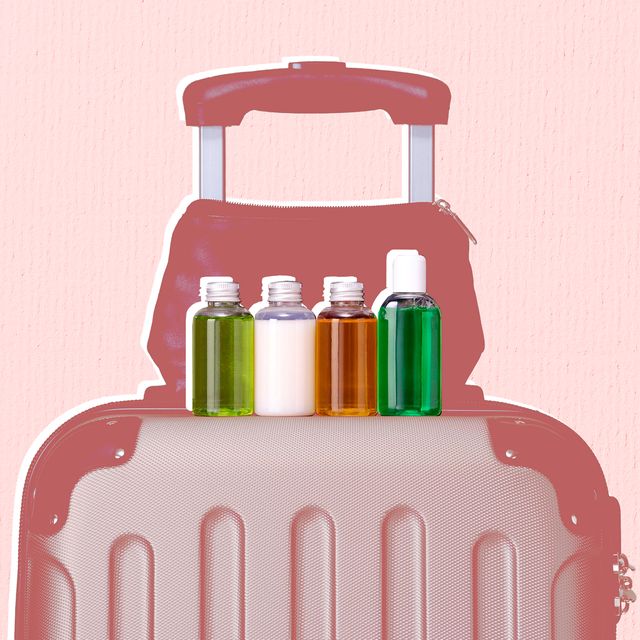
Every item on this page was chosen by a Town & Country editor. We may earn commission on some of the items you choose to buy.
We've all fallen victim to TSA while traveling; here's a refresher so you don't make the same mistakes again.
TSA Liquid Rules:
According to the TSA website , these rules apply for liquids, aerosols, gels, creams, and pastes.
All liquids must be in a 3.4oz or smaller container. Your serums, creams, cleansers, and masks are too expensive to lose, so check their sizes and if they're too big, leave them at home or transfer them to a smaller container.
They have to be able to fit in a quart-size bag. Before you throw 10 containers of liquids into your carry-on, make sure that everything can fit in a quart-size bag. Think about what you really need for your trip, a la Marie Kondo , and remember you can always buy things once you arrive at your destination.
Powders must be in 12oz containers or smaller. TSA placed new restrictions on powders in 2018. Ensure that your makeup, protein powder, and baby powder are in containers within that range, or put them into a checked bag.
Travel-Size Beauty Essentials

Drunk Elephant The Littles™ Set
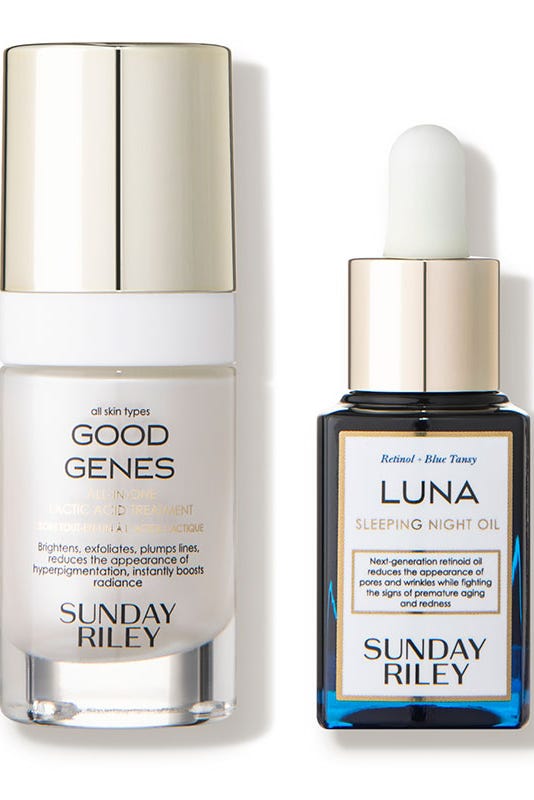
Sunday Riley Power Couple Kit
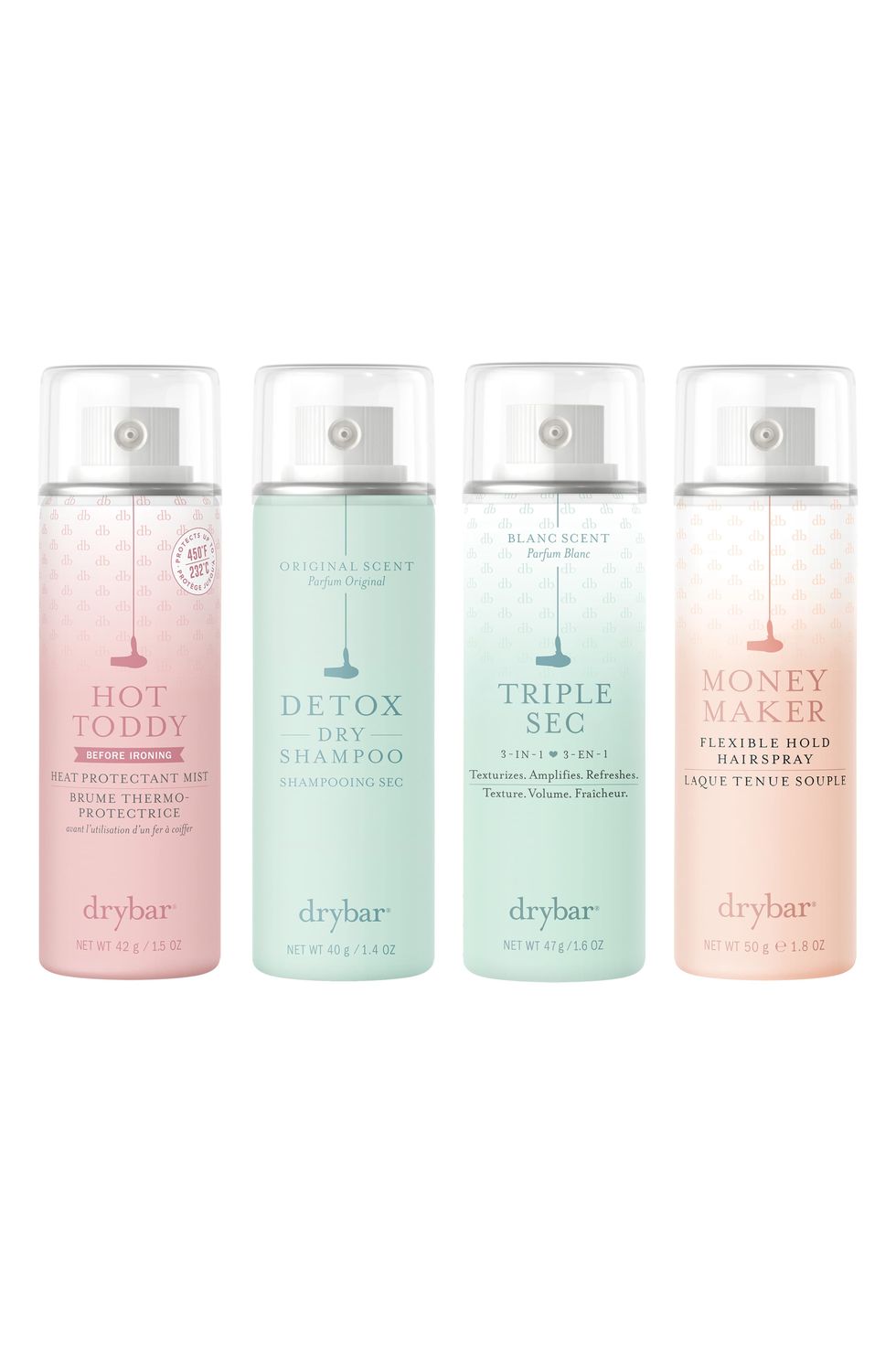
Drybar The Four Pack
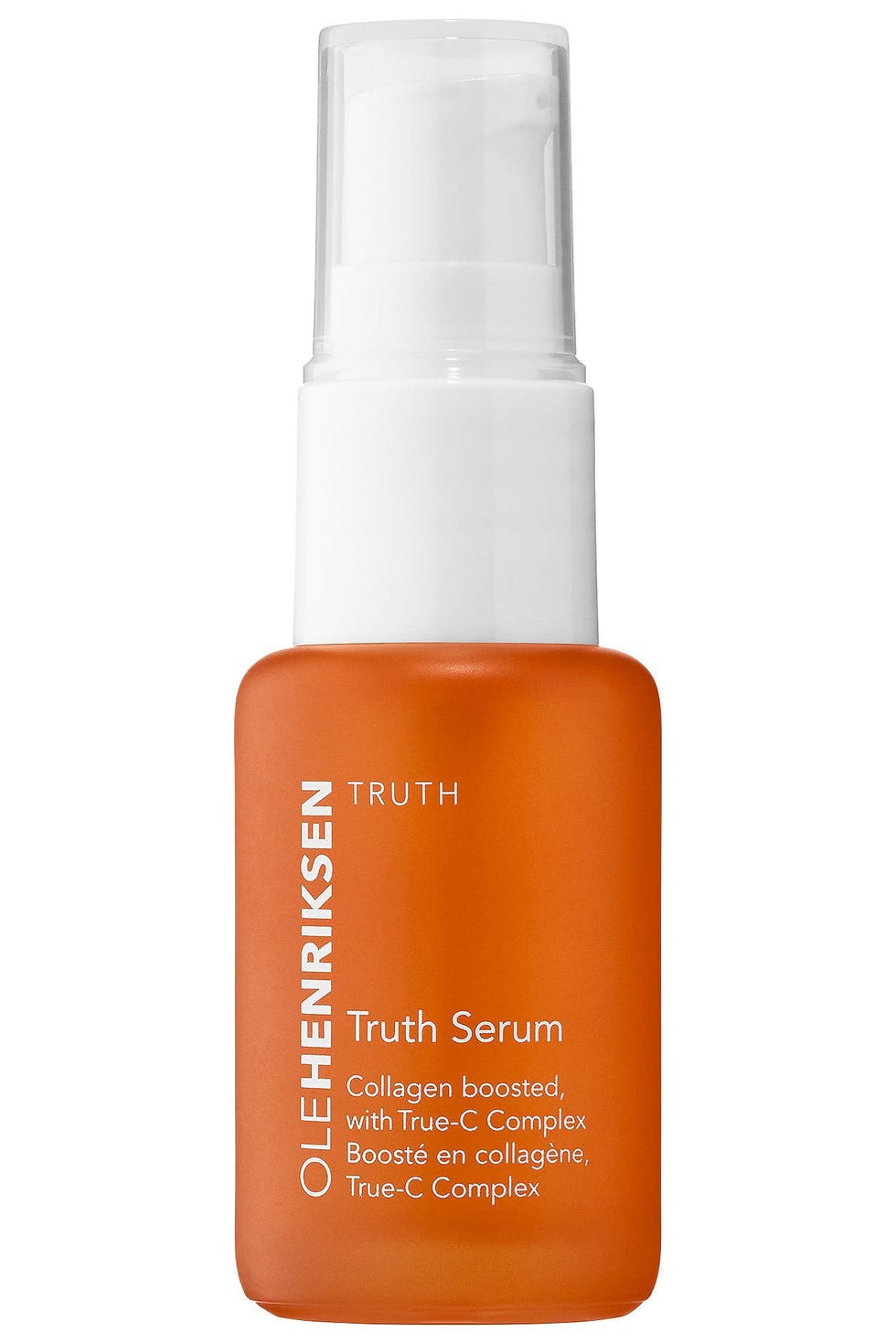
Ole Henrikson Truth Serum®
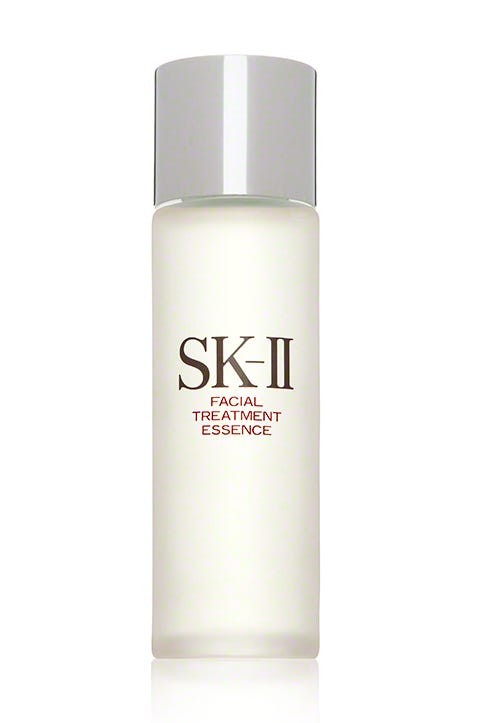
SK-II Facial Treatment Essence Mini
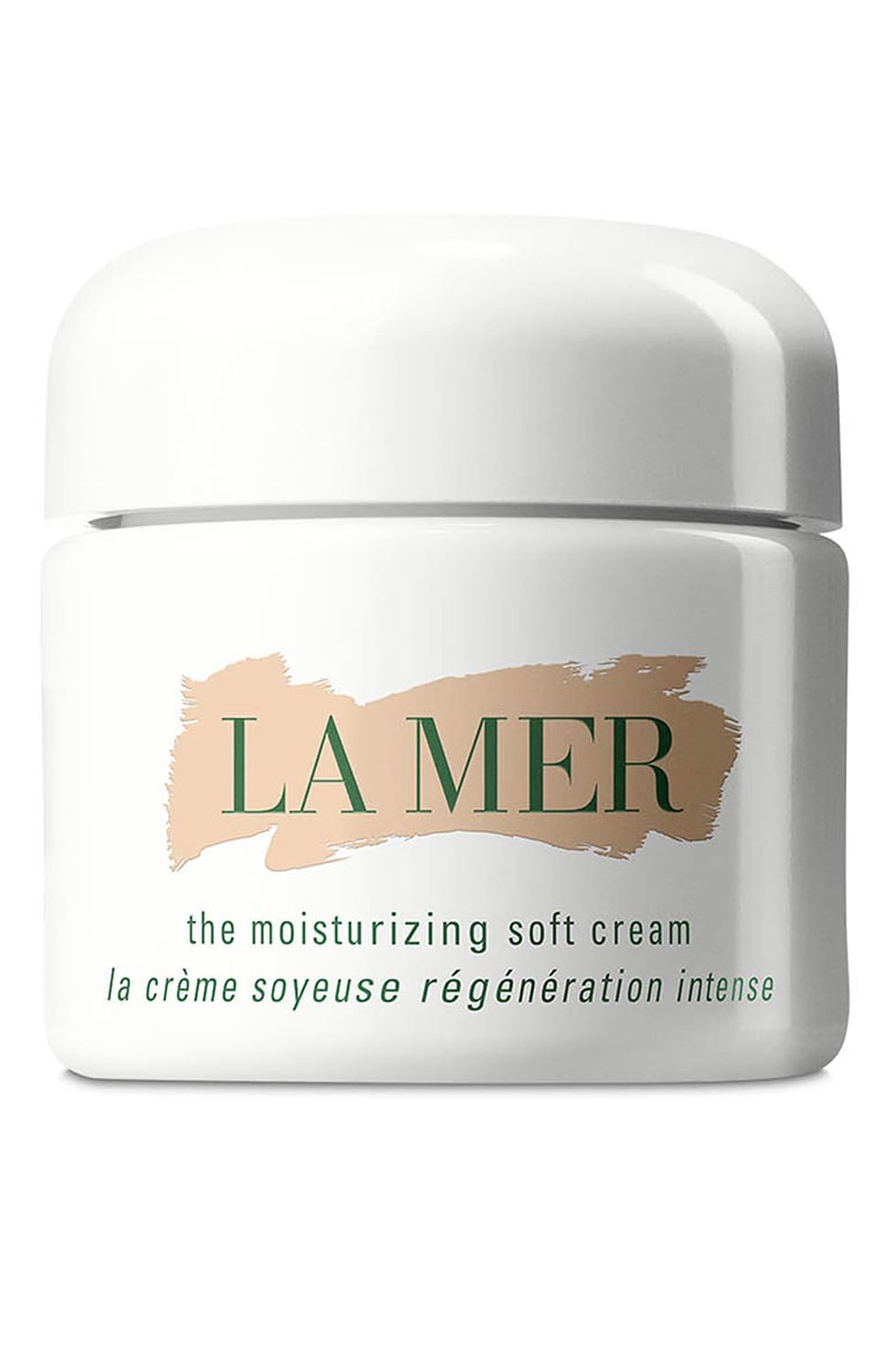
LA MER The Moisturizing Soft Cream
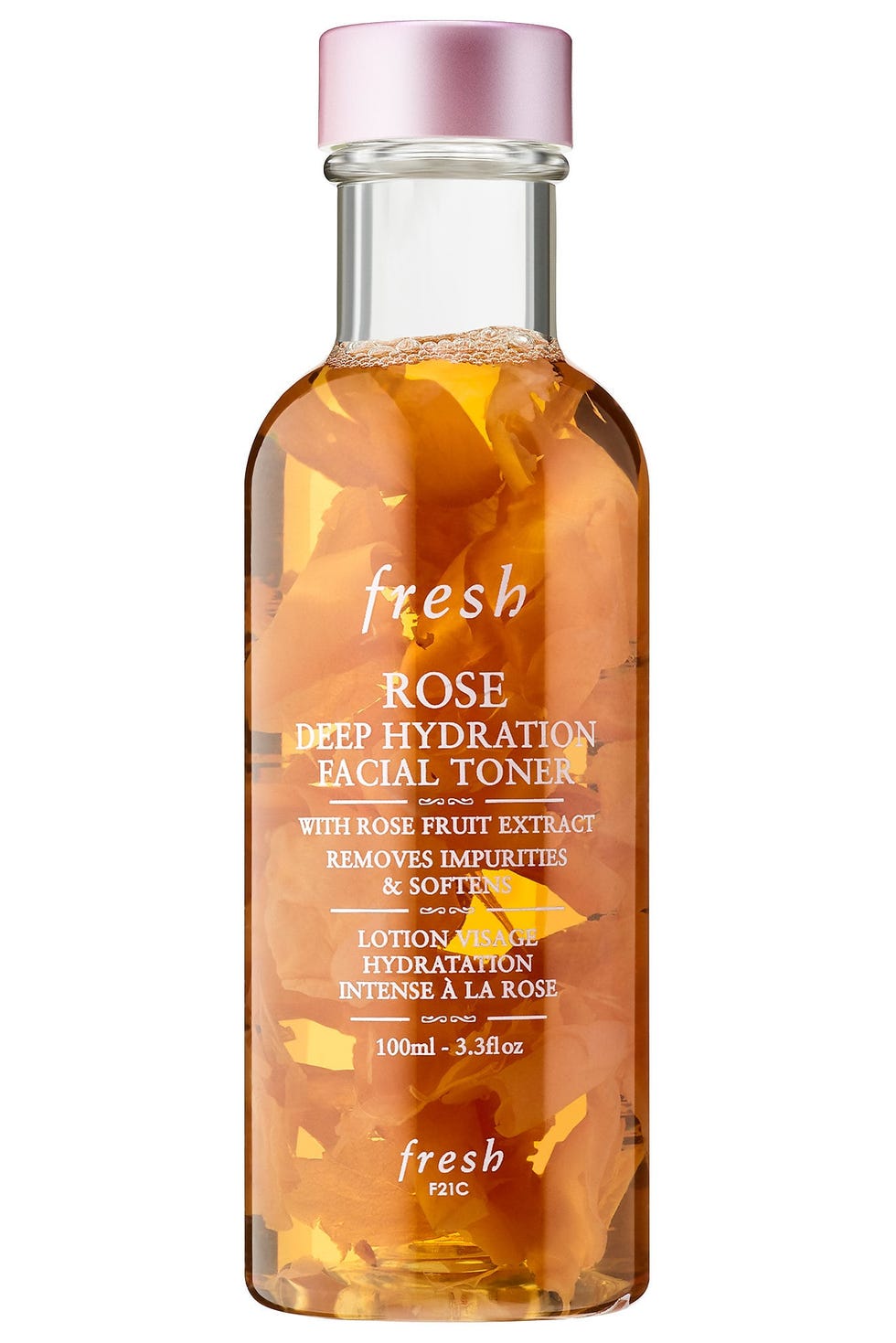
Fresh Rose Deep Hydration Toner

LE LABO Santal 33 & AnOther 13 Set
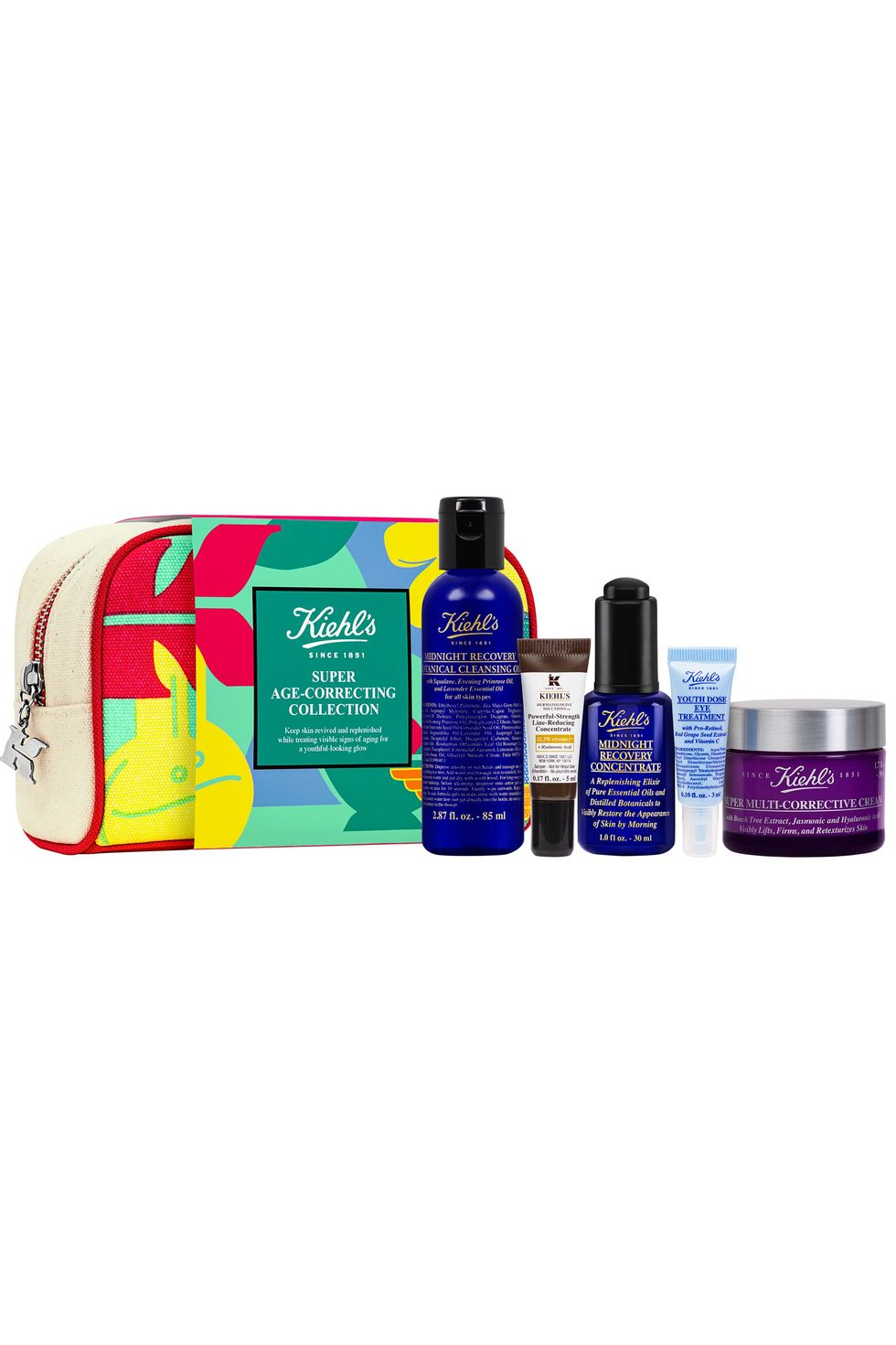
Kiehl's Since 1851 Super Age-Correcting Collection
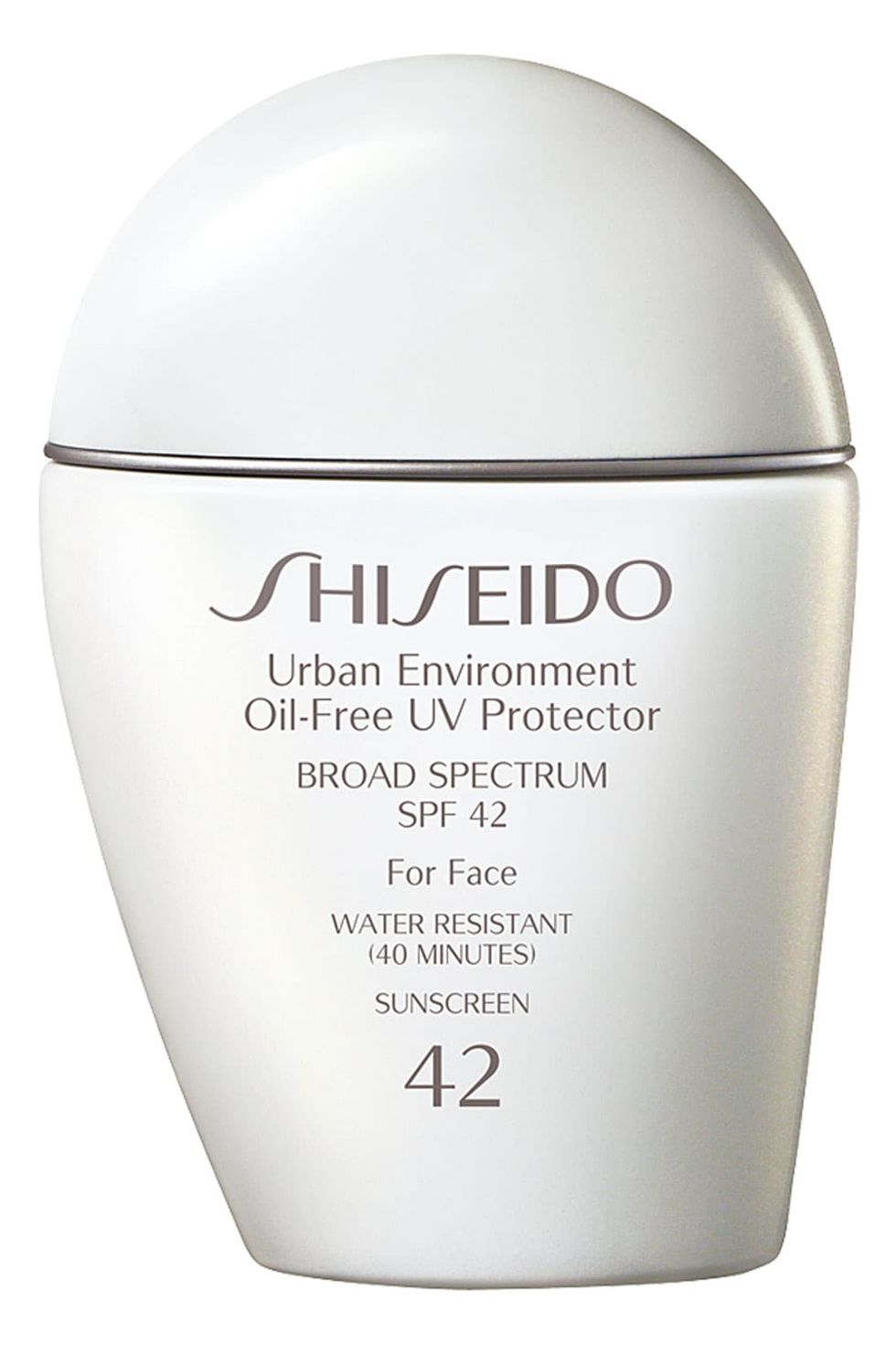
Shiseido Urban Environment Oil-Free Sunscreen

R+Co Television Perfect Hair Shampoo
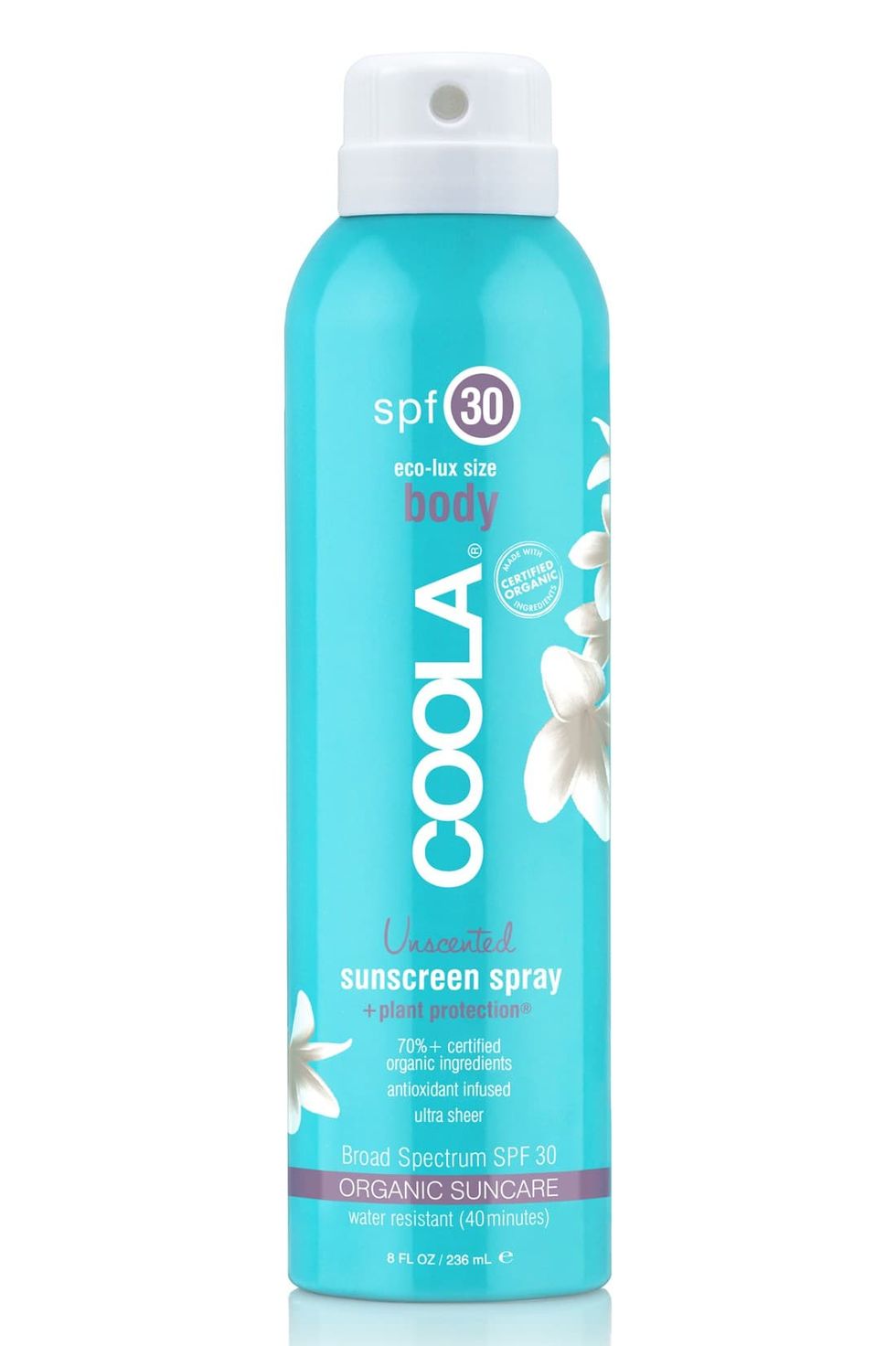
COOLA Suncare Sport Sunscreen Spray SPF 30
Anything else has to go into a checked bag. If you can't part with your full-size products, they have to go into a checked bag to avoid getting tossed into the TSA product graveyard. If you're looking to save money, share one checked bag with your whole group.
Only empty water bottles will pass the TSA checkpoint. If you bring a refillable water bottle, make sure it's empty before you approach security. You can fill it up after you go through the checkpoint or buy water in the terminal.
There are exemptions. If you use a medication that comes in liquid, aerosol, gel, cream, or paste form and the container is larger than 3.4oz, it's exempt from the above rules. Similarly, if you're carrying baby formula, breast milk, or other liquid foods for your child, these are also exempt.
@media(min-width: 40.625rem){.css-1jdielu:before{margin:0.625rem 0.625rem 0;width:3.5rem;-webkit-filter:invert(17%) sepia(72%) saturate(710%) hue-rotate(181deg) brightness(97%) contrast(97%);filter:invert(17%) sepia(72%) saturate(710%) hue-rotate(181deg) brightness(97%) contrast(97%);height:1.5rem;content:'';display:inline-block;-webkit-transform:scale(-1, 1);-moz-transform:scale(-1, 1);-ms-transform:scale(-1, 1);transform:scale(-1, 1);background-repeat:no-repeat;}.loaded .css-1jdielu:before{background-image:url(/_assets/design-tokens/townandcountrymag/static/images/diamond-header-design-element.80fb60e.svg);}}@media(min-width: 64rem){.css-1jdielu:before{margin:0 0.625rem 0.25rem;}} Travel @media(min-width: 40.625rem){.css-128xfoy:before{margin:0.625rem 0.625rem 0;width:3.5rem;-webkit-filter:invert(17%) sepia(72%) saturate(710%) hue-rotate(181deg) brightness(97%) contrast(97%);filter:invert(17%) sepia(72%) saturate(710%) hue-rotate(181deg) brightness(97%) contrast(97%);height:1.5rem;content:'';display:inline-block;background-repeat:no-repeat;}.loaded .css-128xfoy:before{background-image:url(/_assets/design-tokens/townandcountrymag/static/images/diamond-header-design-element.80fb60e.svg);}}@media(min-width: 64rem){.css-128xfoy:before{margin:0 0.625rem 0.25rem;}}

A Snob's Guide to San Francisco

The Best Room At... The Reform Club Amagansett

Are First-Class Flight Amenities Being Downgraded?

How to Avoid Friends on Vacation

Experience Puerto Rico's History—Outside San Juan

Best Room At... The Wall Street Hotel

Best Room At… St. Regis Bahia Beach Resort, PR

27 Bridgerton Filming Locations to Visit

Plum Sykes's Cotswolds Survival Kit

Best Room At...21 Nettleton in Cape Town

The Best Hotels on Nantucket
- Search Please fill out this field.
- Manage Your Subscription
- Give a Gift Subscription
- Newsletters
- Sweepstakes
- Travel Planning
Carry-On Luggage Rules: Everything You Can (and Can't) Bring with You on a Plane
The Transportation Security Administration (TSA) carry-on rules can be confusing, but this trusty checklist will make packing for your next flight a breeze.
:max_bytes(150000):strip_icc():format(webp)/Morgan-Knollcopy-e868b0bb3ec247c8ae9ff361d3c7adb9.jpg)
Highlights: * Has worked as a fact checker for Real Simple since 2022 * Worked as a staff writer for Mochi Magazine * Currently runs and operates the United States blog for Student Beans
:max_bytes(150000):strip_icc():format(webp)/Danielle-Slauter-2000-192ecaf8eeb54c5e861d42e41dd9583f.jpg)
- Okay to Carry On
- Not Okay to Carry On
- Leave at Home
Penalties for Not Complying
Prepping for a trip is a lot easier when you know what you can and can't put in your carry-on luggage. To help you avoid unpleasant surprises at the TSA checkpoint, we've broken down the rules into three lists: stuff you can carry on board, stuff you have to check, and stuff you can't carry on or check, so don't even bother traveling with it. Keep these guidelines in mind while you pack—and whenever you're choosing new luggage pieces —so you know how much you need to fit where.
What You Can Bring on a Plane in Your Carry-On
Small tools.
Certain small tools, such as screwdrivers, wrenches, and pliers, are permitted, as long as they're seven inches or less in length. You can also carry on nail clippers, pill cutters, bottle openers, and small scissors with blades measuring four inches or less from the pivot point. All other tools should be securely wrapped (if sharp) and packed in checked baggage.
Nonflammable liquids, gels, and aerosols—including food, drinks, and toiletries—in quantities of 3.4 ounces or less
Nearly all liquids (like beverages, contact lens solution, shampoo, makeup products, liquid medicine, nail polish, perfume/cologne, and face toner); gels (like hair gel, toothpaste, hand sanitizer, and face serum); and aerosols (products dispensed in a pressurized spray can or bottle, like hairspray, dry shampoo, and spray-on deodorant)—are allowed in your carry-on luggage. However, they must be in a 3.4-ounce or smaller container and fit together in one quart-size clear zip-top plastic bag. That's known as the 3-1-1 rule, and it also applies to food like peanut butter and creamy cheese, as well as alcohol (yes, mini bottles of booze are allowed as long as the alcohol content is less than 70%). So if you have a six-ounce tub of lotion and you've already used more than half of it, you're still not allowed to bring it through TSA security and onto the plane. However, exceptions to these rules can include medically necessary liquids, such as insulin and baby formula.
Matches and lighters
Passengers may carry on common lighters and one book of safety matches—however, strike-anywhere matches (those that can be lit by striking against any rough, dry surface) are prohibited in both checked and carry-on luggage. No matches, including safety matches, are permitted in checked baggage.
You can pack dry batteries (AA, AAA, C, and D) in either carry-on or checked bags. Lithium batteries with 100 watt hours or less may be carried on the plane or checked, as long as they're in a device. Loose lithium batteries may only be carried on and cannot be checked.
Knitting needles
Materials for knitting and needlepoint are allowed in carry-on bags and checked luggage. Make sure any knitting needles are wrapped or otherwise protected to prevent injuring luggage handlers and inspectors.
Wrapped presents can be carried on board, provided the contents meet safety and security regulations. But since security screeners may unwrap gifts for inspection, it's advisable to leave presents unwrapped until you reach your destination.
Electronics
Portable electronic items are typically allowed on board. Those that are smaller than a standard-size laptop, such as cellphones and tablet devices, do not have to be removed from baggage during screening. Larger electronics, including laptops, full-size video-game consoles, and full-size DVD players, must be removed from their cases, placed in a separate bin, and screened individually at security checkpoints.
Medication and medical equipment
All prescription and over-the-counter medications can be carried on board in unspecified quantities. Other medical necessities, including but not limited to inhalers, EpiPens, canes, casts, blood sugar test kits, crutches, liquid nutrition for passengers with a disability, and items used for medical or cosmetic reasons, such as mastectomy products, can also be packed in carry-on luggage . These items must be declared to screeners before going through security and are subject to additional screening.
Baby food, equipment, and needs
Baby formula, breast milk, juice, gel- or liquid-filled teethers, and canned, jarred, or processed baby food are permitted on board the airplane if a baby or a small child is traveling. These items do not need to meet the 3-1-1 rule like other liquids and gels do, but must be removed from your carry-on luggage, declared to screeners before going through security, and are subject to additional screening. In addition to food and formulas, baby wipes, child car seats, breast pumps, and baby carriers can be taken through security and onto the plane.
Expensive items
Though not an official requirement, jewelry, currency, and other valuable items should always be carried with you, provided they meet security regulations. It's a good idea to stash them in a separate compartment to keep them organized in travel bags or carry-ons.
E-liquids, electronic cigarettes, and vaping devices
As long as the amount of e-liquid you're carrying onboard is less than 3.4 ounces, it is allowed through security—quantities larger than 3.4 ounces must be checked. However, battery-powered e-cigarettes, vaporizers, vape pens, atomizers, and electronic nicotine delivery systems can only be taken on board the aircraft in your carry-on or on your person. The FAA prohibits all these devices in checked bags.
Disposable and electric razors
Both disposable and electric razors are allowed in either carry-on or checked luggage. Safety and straight razors must be checked.
Wedding dress
You can carry a wedding dress through security and onto your flight, but take precautions first. Pack the dress carefully and thoroughly in a protected garment bag. Contact your airline to ask about their policy for stowing the garment safely in the cabin and whether it counts as your carry-on item (you may be charged extra). In addition, you should arrive early to the airport to ensure you get through security and to the gate early enough to talk with an airline agent about stowing the dress onboard.
Small pets are allowed to travel with passengers through security checkpoints, but it's your responsibility to contact the airline for their specific policy. Pets need to be taken out of their carrier (which will also need to go through security) and screened by security.
Restricted Items NOT Allowed on a Plane in Your Carry-On
Sharp objects.
Sharp objects include a wide array of items, such as box cutters, ice axes and picks, knives (including pocket knives, but excluding plastic or round-bladed butter knives), meat cleavers, razor-type blades, and scissors that exceed four inches (smaller scissors can be carried on). Note that any sharp objects in your checked bags should be covered or securely wrapped to prevent injury to baggage handlers and inspectors.
Sporting goods and athletic equipment
With the exception of balls, many pieces of sporting equipment, such as baseball bats, golf clubs, ski poles, hockey sticks, lacrosse sticks, martial arts weapons, hiking poles, and tent spikes/poles, are prohibited from carry-on luggage and must be transported in checked baggage. However, some exceptions include tennis rackets, fishing poles, snow shoes, and longboards. Bicycles are sometimes allowed on flights, but it varies by airline—check with your airline for details.
Self-defense items
Self-defense sprays (like mace or pepper spray) and other items, such as billy clubs, black jacks, brass knuckles, kubotans, and other martial-arts weapons, are not permitted past security.
Gel-type candles
While solid wax candles are allowed in carry-on and checked luggage, gel-like candles can only be transported via checked bags.
Large quantities of alcohol (more than 3.4 ounces)
You can check up to five liters of adult beverages (as long as they contain less than 70% alcohol) in unopened retail packaging.
Guns and ammunition
Well-packaged ammunition and well-packaged, unloaded firearms, BB guns, compressed-air guns (e.g., paintball markers), pellet guns, starter pistols, and replicas can be put in your checked luggage but must be declared at check-in. Per TSA regulations on guns: "Firearms carried in checked bags must be unloaded, packed in a locked hard-sided container, and declared to the airline at check-in." And on ammunition: "Small arms ammunitions must be securely packed in fiber, wood or metal boxes, or other packaging specifically designed to carry small amounts of ammunition. Ask the airline about limitations or fees." When in doubt, ask your airline about specific rules and regulations for checking firearms.
Items You're Not Allowed to Check OR Carry-On, So Leave Them at Home
Alcoholic beverages over 140 proof.
Any beverage with over 70% alcohol content, such as grain alcohol and 151 proof rum, cannot be checked or taken onto the plan in your carry-on bag.
Flammable items
Aerosol cans (except limited quantities of personal care items that are 3.4 ounces or less), butane, fuels, gasoline, gas torches, lighter fluid, strike-anywhere matches, flammable paints, turpentine, paint thinner, arc lighters, plasma lighters, electronic lighters, E-lighters, and replicas of incendiaries cannot be transported in any way on passenger airlines.
Explosive materials
Passengers cannot bring items such as fireworks, flares, hand grenades, blasting caps, dynamite, and replicas of explosive materials onboard aircrafts.
Chlorine, bleach, spillable batteries, spray paint, fertilizers, tear gas, and fire extinguishers are considered dangerous and are not permitted on commercial passenger aircrafts.
Outdoor and wildlife safety products
Items such as bear bangers (intended to scare away bears without harming them) and bear spray are not allowed on commercial aircraft.
The agency will impose fines of up to several thousand dollars for attempting to carry on certain weapons or other dangerous materials. In other instances, you'll have to hand over the item or leave the security line to check it or, in the case of liquids, dump some of it out. (And then go back through security, which is a drag!) Some items may require additional screening. Ultimately, the TSA agent can make the final call on what's allowed through security.
Transportation Security Administration. Civil Enforcement . Accessed December 17, 2022.
Related Articles
15 easy, breezy, beautiful TSA-approved health and beauty items

The Transportation Security Administration has applied the 3-1-1 rule for liquids in carry-on baggage since 2006. Under the 3-1-1 rule, travelers may bring liquids in containers that are 3.4 ounces or smaller ("3") in a clear quart-size plastic bag ("1") and each passenger is allowed only one plastic bag ("1").
TSA's 3-1-1 rule applies to liquids, creams, gels, pastes and aerosols. Health and beauty items that you may use every day at home like sunscreen, soap, lotion, hair products, makeup, shampoo and conditioner may not make the cut.
Rather than packing your entire skin care and hair care routine into a checked bag or crossing your fingers for decent-performing hotel toiletries, we've rounded up 15 health and beauty items that pass the TSA's 3-1-1 rule with flying colors. Some fall within the 3.4-ounce requirement and some aren't considered a liquid at all (yes, toothpaste tabs are a real thing).
CeraVe Moisturizing Cream
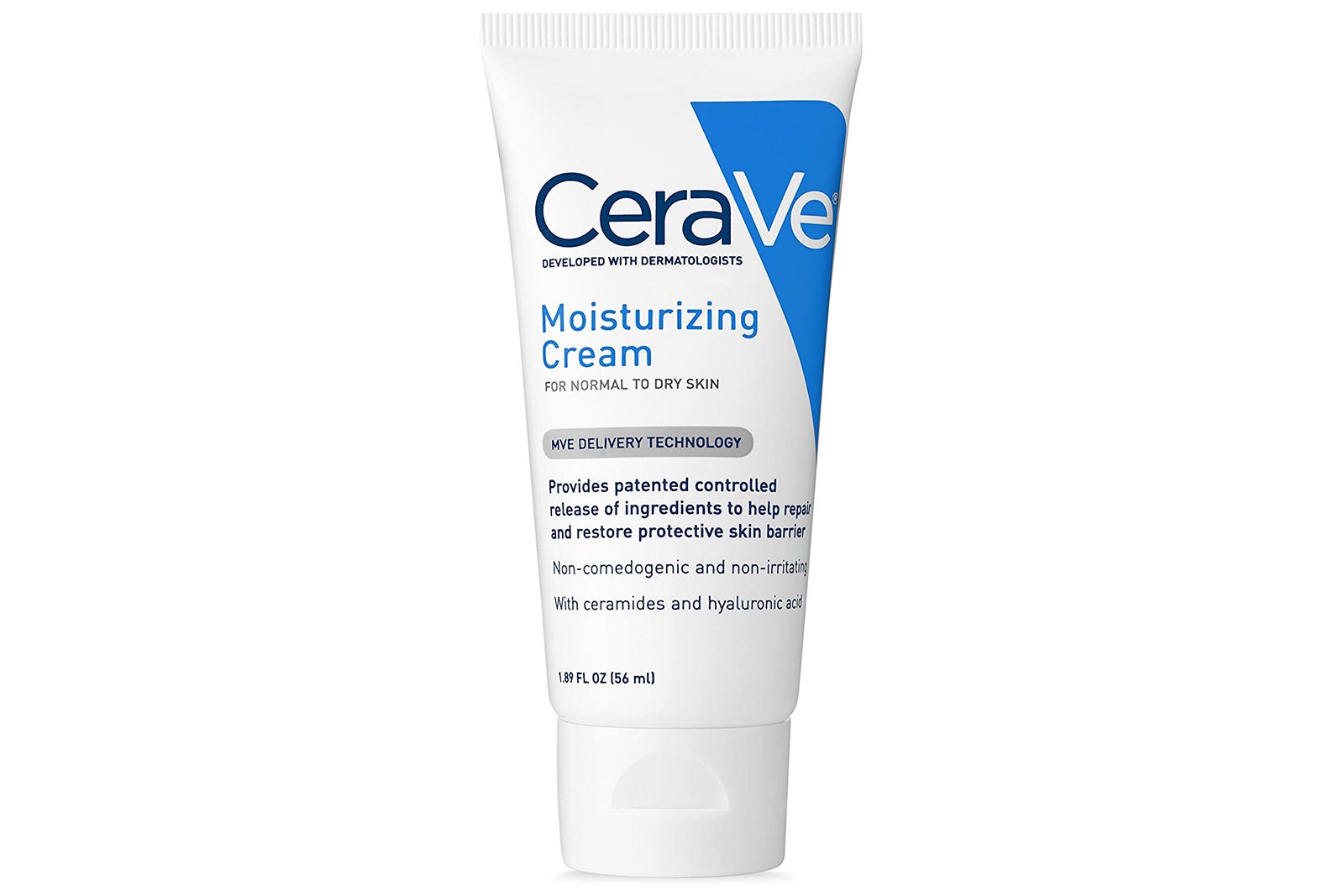
CeraVe Moisturizing Cream ($7.99) is a master of multitasking that can be used to relieve dryness on the face, hands and body. This dermatologist-developed cream is gentle enough that it won't irritate skin or clog pores and is long-lasting enough to help skin retain moisture for a full 24 hours. Keep it close by if you have a long flight in your future to combat the effects of dry air in flight.
Lush Toothpaste Tabs
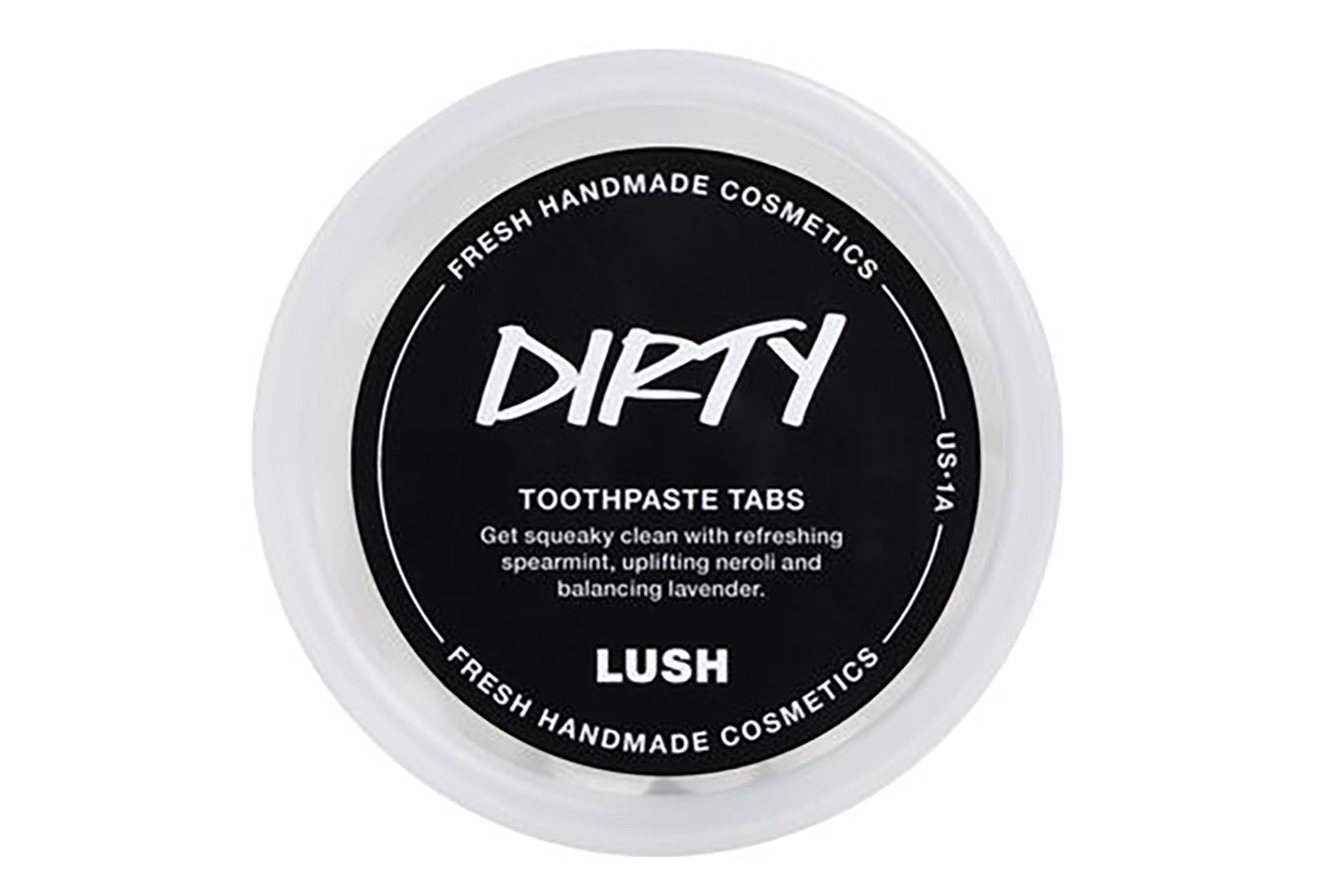
There are a lot of reasons to love Lush Toothpaste Tabs ($12). They are primarily made with natural ingredients, have a minty orange flavor and come in a convenient recycled (and recyclable) container. When you are ready to brush, crunch one tablet up between your teeth and brush as usual with a wet toothbrush. You'll have minty-fresh breath and more space in your carry-on for liquids.
Rare Beauty Bronzer Stick
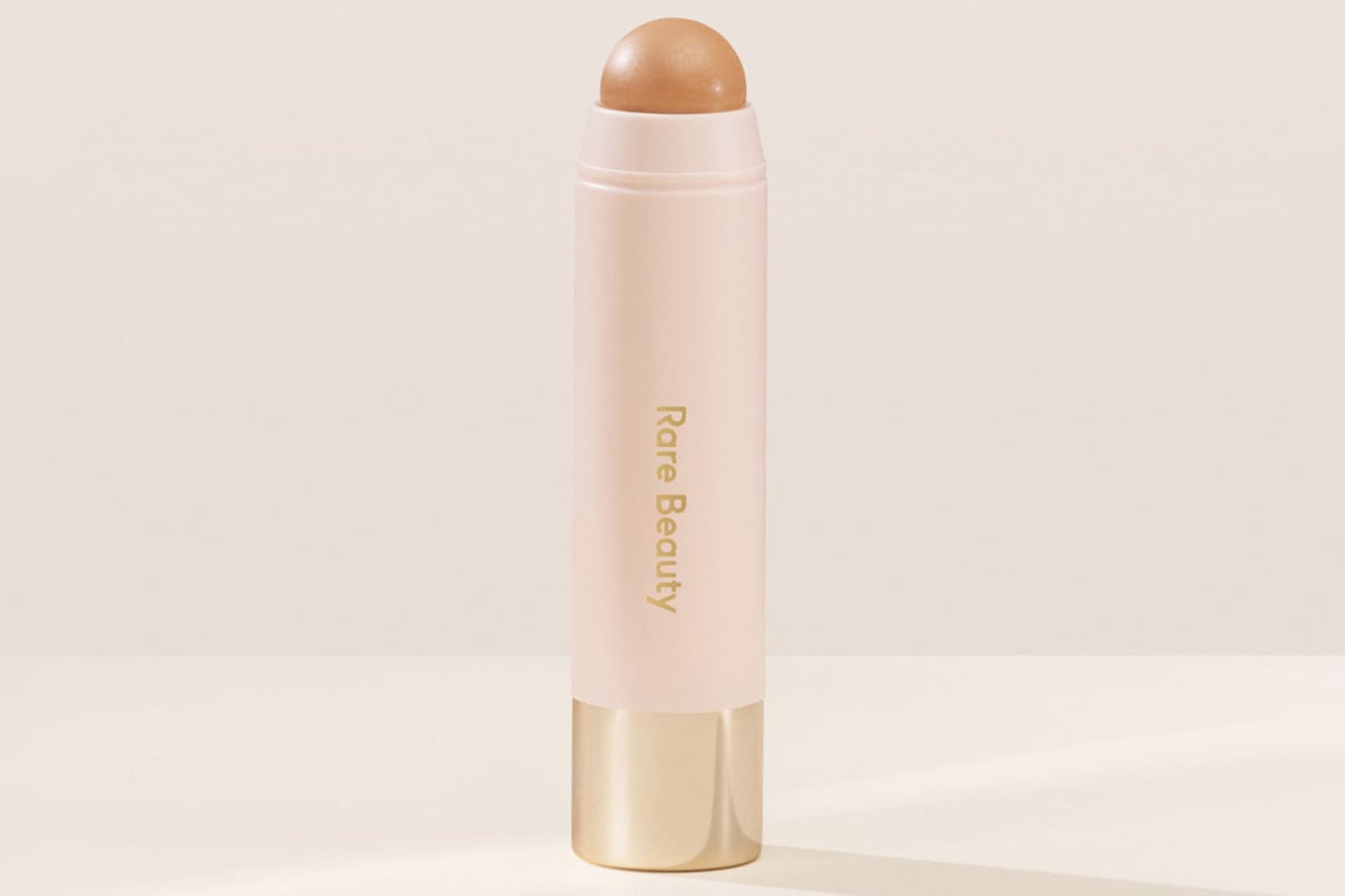
Rare Beauty Bronzer Stick's ($23) creamy (i.e., not considered a liquid by TSA) formula blends effortlessly into your skin, providing as little or as much face-sculpting, sun-kissed warmth as you want. Even better, you can use your fingers to blend this never-greasy, water-resistant bronzer and leave the bronzer brush at home.
Lush Shampoo Bar

This compact, solid Lush Shampoo Bar ($14.50) is exempt from the TSA liquids rule and better for the environment than purchasing miniature toiletries every time you travel. Just one Lush Shampoo Bar replaces up to three 250-millimeter bottles of liquid shampoo. This convenient alternative to traditional shampoo comes in a variety of scents, but we love that this citrus option adds volume and shine while it cleanses.
Subtl Makeup Stack
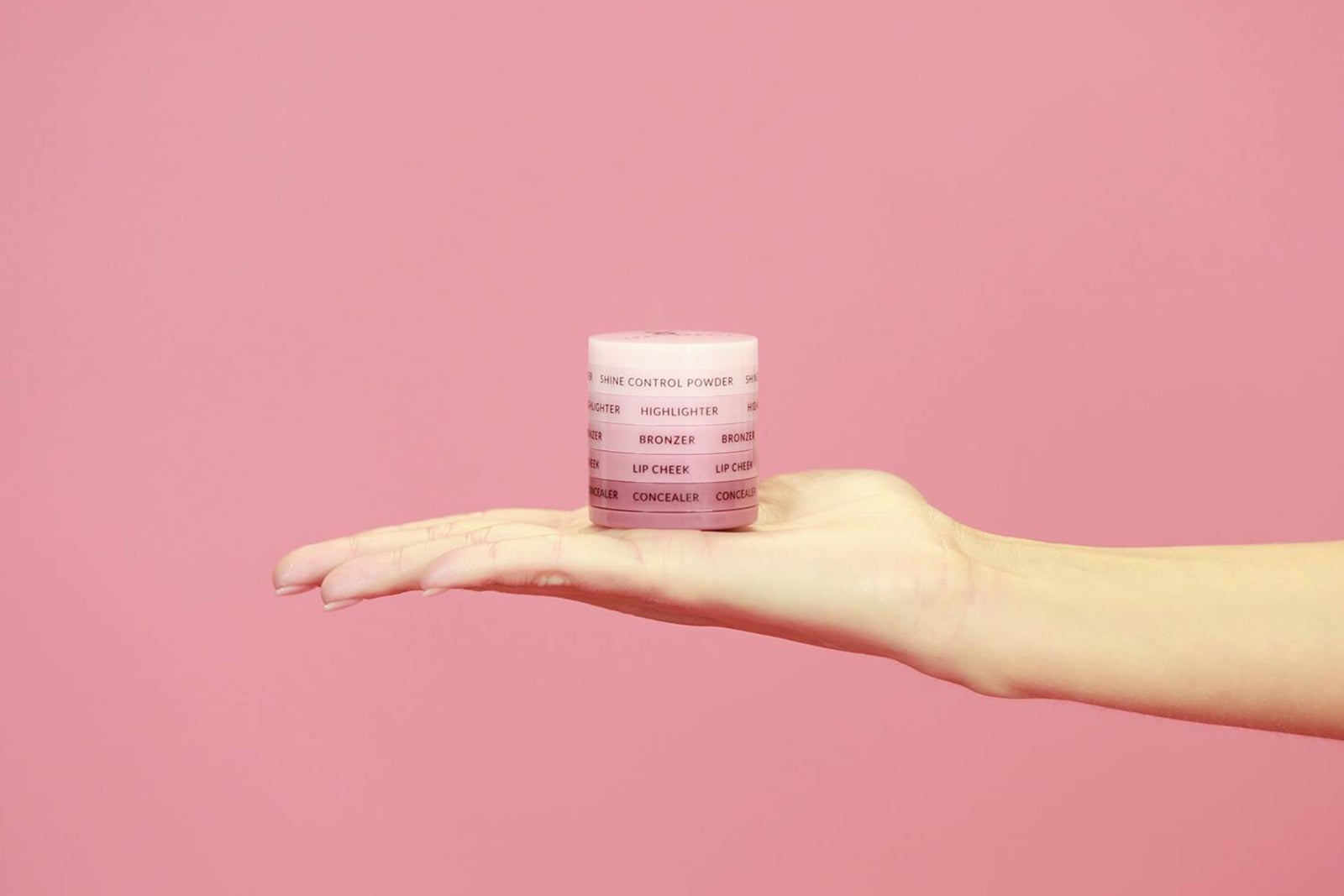
Each Subtl Makeup Stack ($12 and up) is a fully customizable "stack" of makeup pods that are space-saving, multifunctional and travel-ready. You can choose from pre-made stacks or design your own with products for face, eyes and lips, plus accessories like travel brushes, a makeup mirror and a brush cleaner.
Tula Glow & Get It Cooling & Brightening Eye Balm
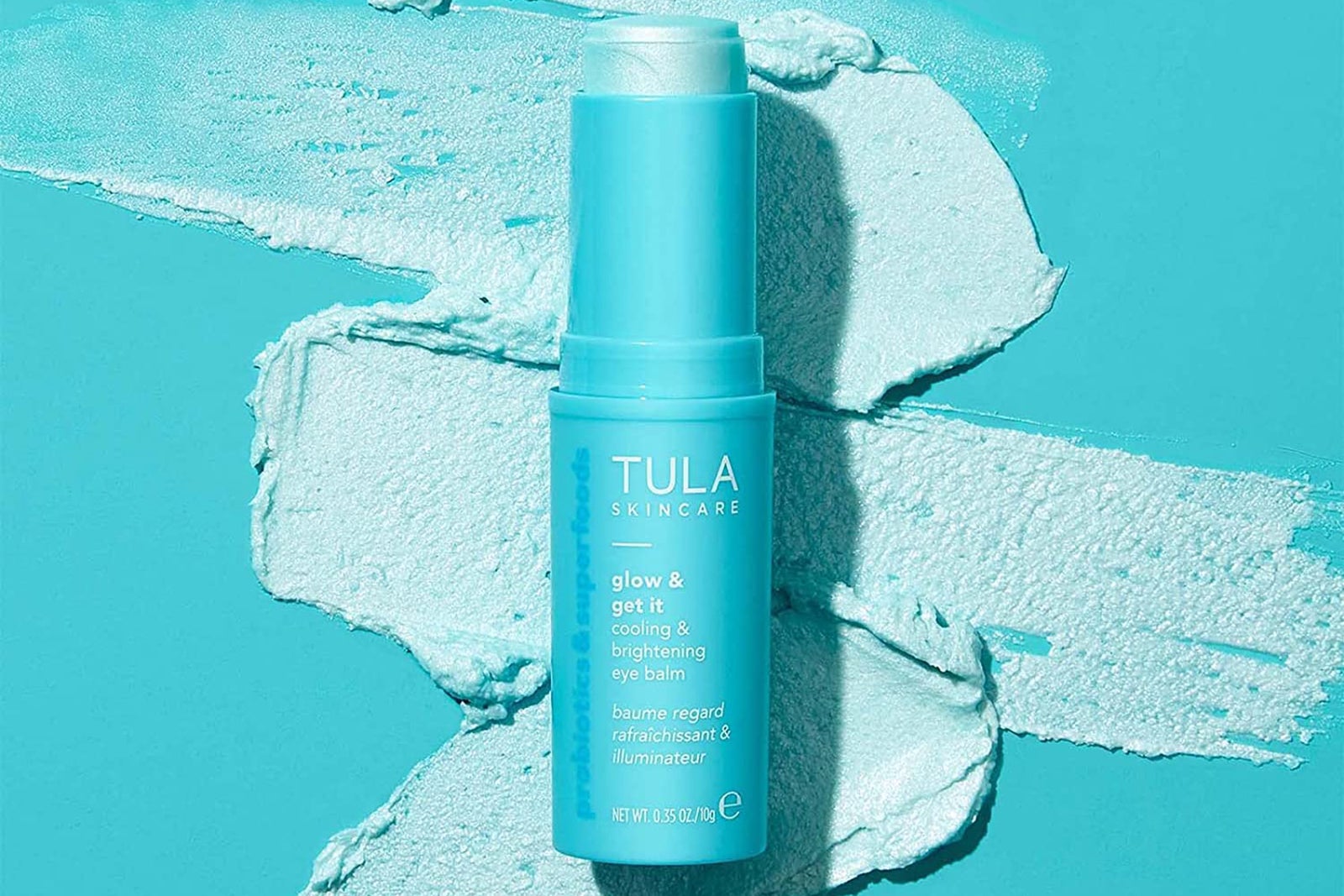
Tula Glow & Get It Cooling & Brightening Eye Balm ($30) is made with probiotic extracts, caffeine and superfoods to combat puffiness and dark circles by hydrating and energizing post-red-eye-flight eyes. This eye balm also provides an instant cooling effect and helps to brighten the under-eye area.
Supergoop SPF Starter Kit
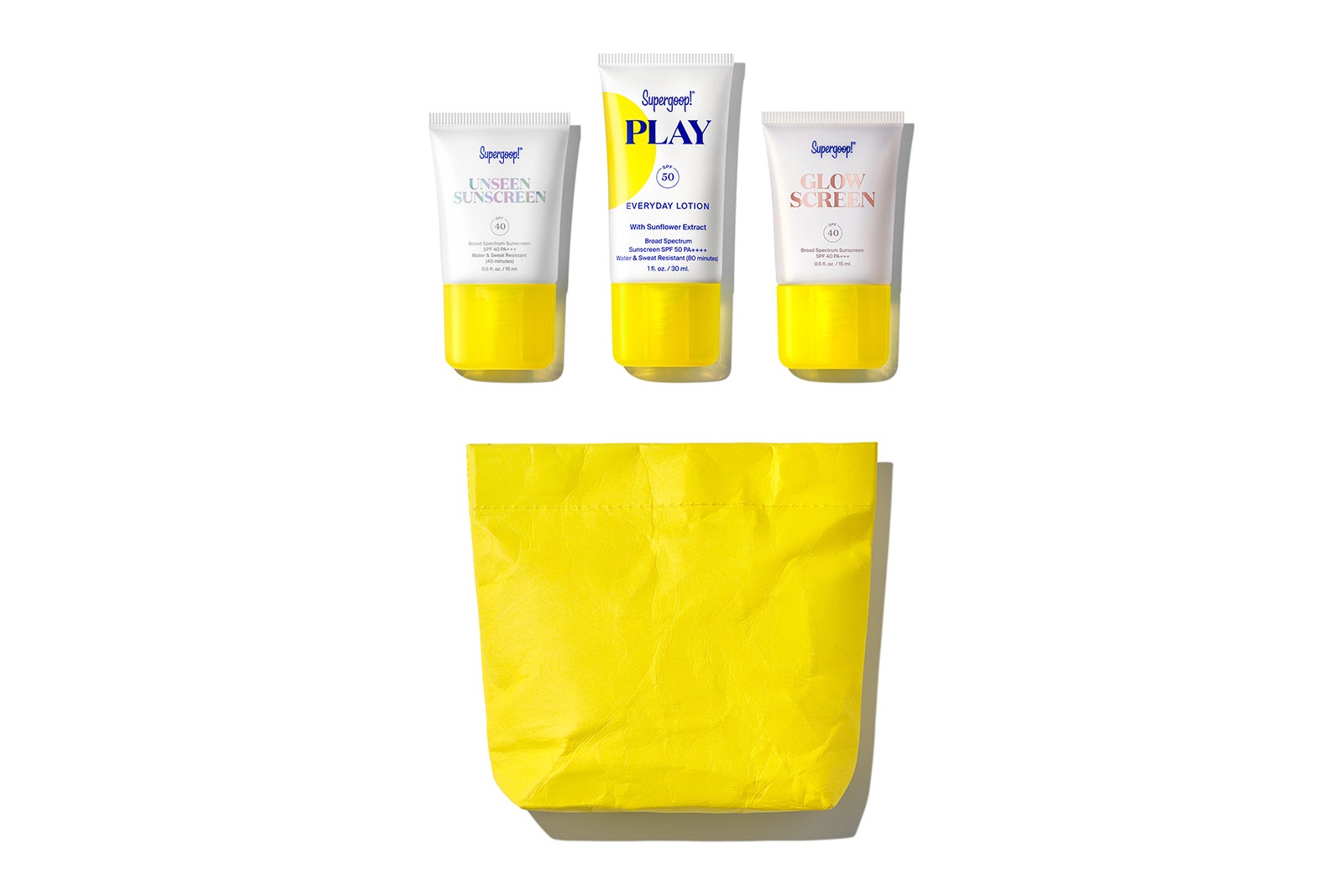
The Supergoop! SPF Starter Kit ($25, regularly $42.88) comes with three sun-protection products for the face and body in a convenient reusable pouch. Inside, you'll find Supergoop bestsellers that provide moisture and a dewy glow in TSA-compliant packaging that is 1 ounce or smaller.
Wander Beauty Baggage Claim Gold Eye Masks
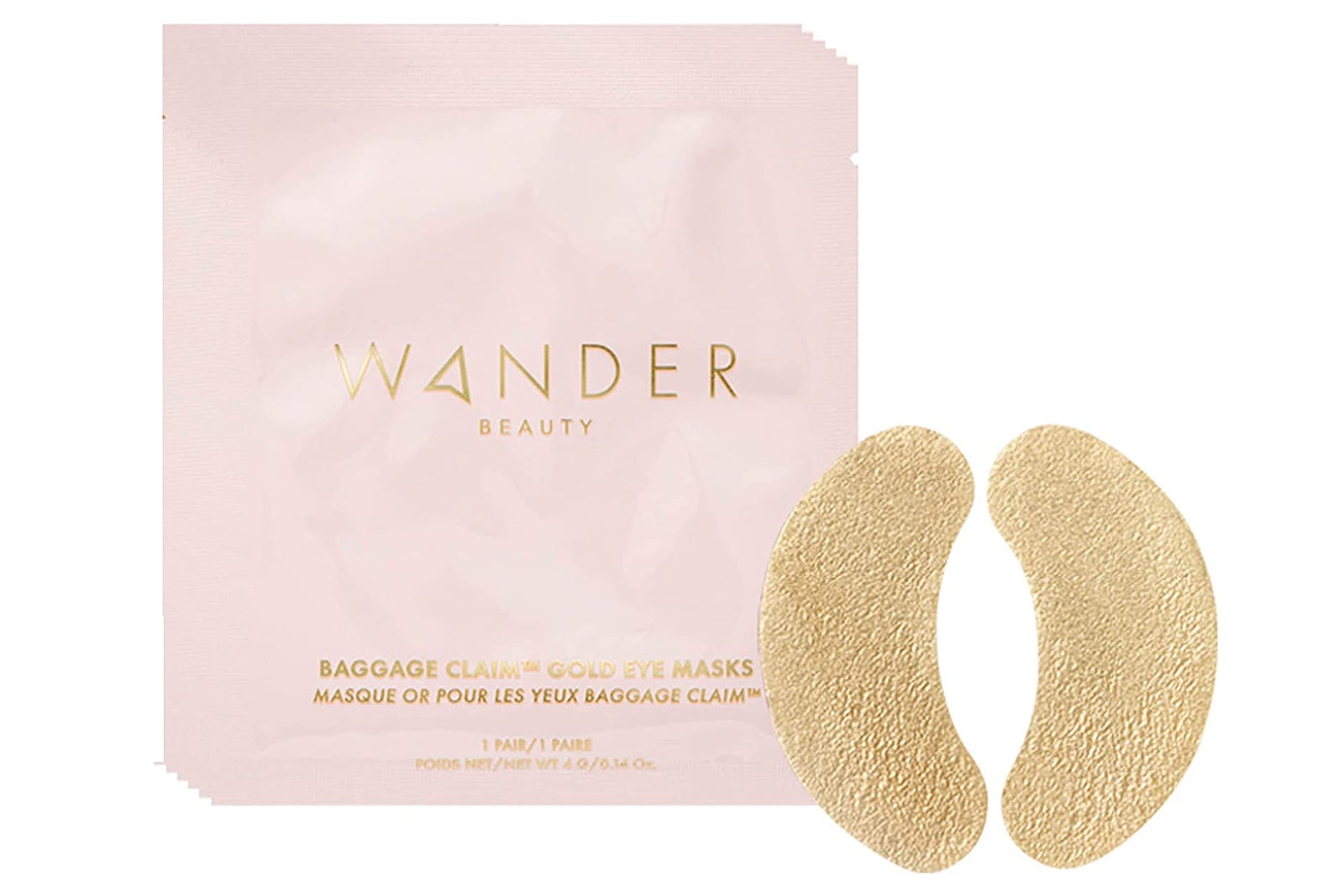
Tired eyes are a common byproduct of long travel days. Keep a pair of Wander Beauty Baggage Claim Gold Eye Masks ($26) in your carry-on to rehydrate and invigorate dull, puffy eyes before you set out to explore your destination. If you feel so moved, snap a selfie of your "GoldenEye" moment — self-care never looked so good.
Neutrogena Makeup Remover Melting Balm
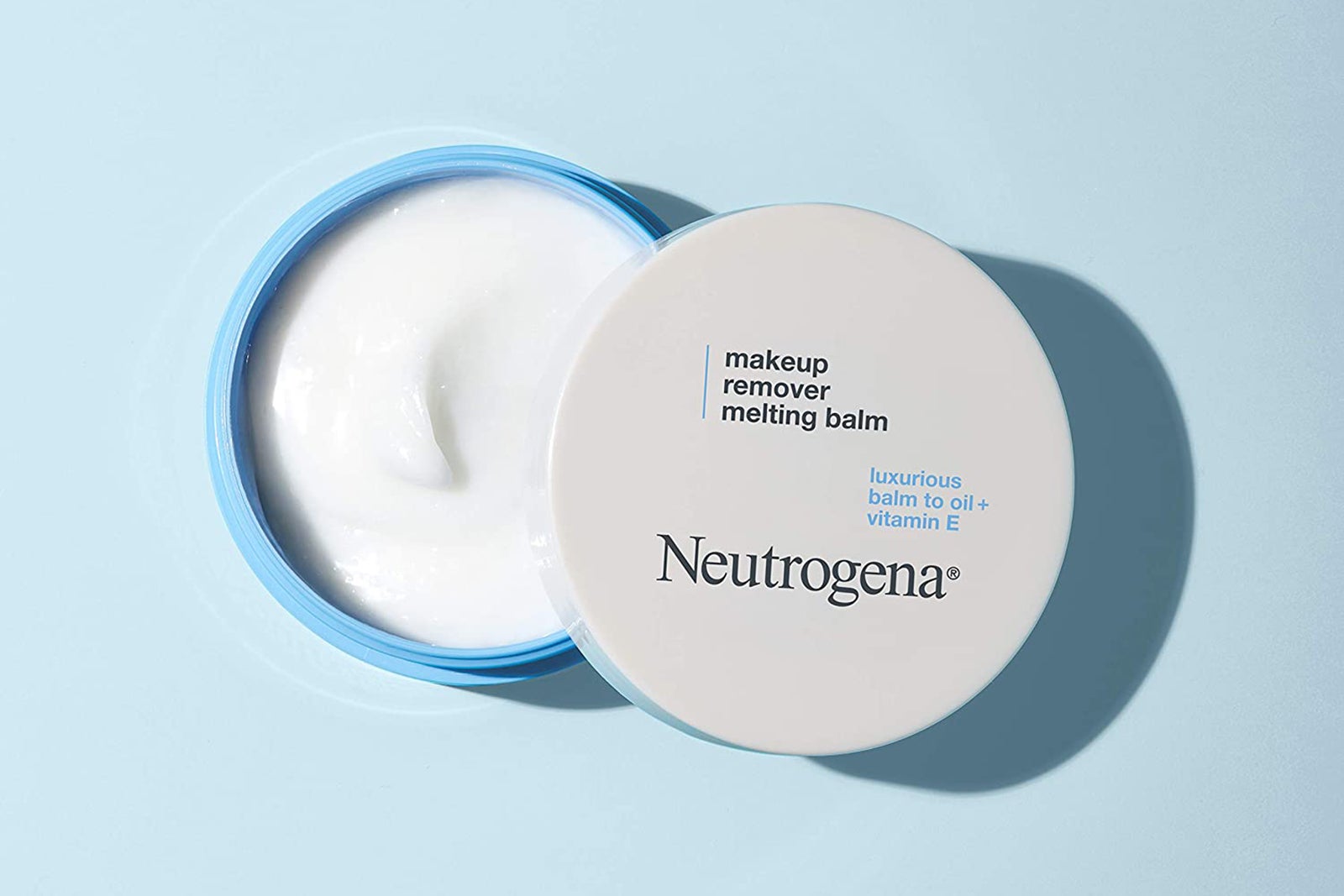
A good makeup-removing balm should be strong enough to take off even the most stubborn waterproof makeup without irritating skin. Neutrogena Makeup Remover Melting Balm ($10.87) easily melts away makeup and soothes skin with nourishing vitamin E. The 2-ounce package is TSA-compliant and small enough to fit in any carry-on.
Supergoop (Re)setting SPF Mineral Powder
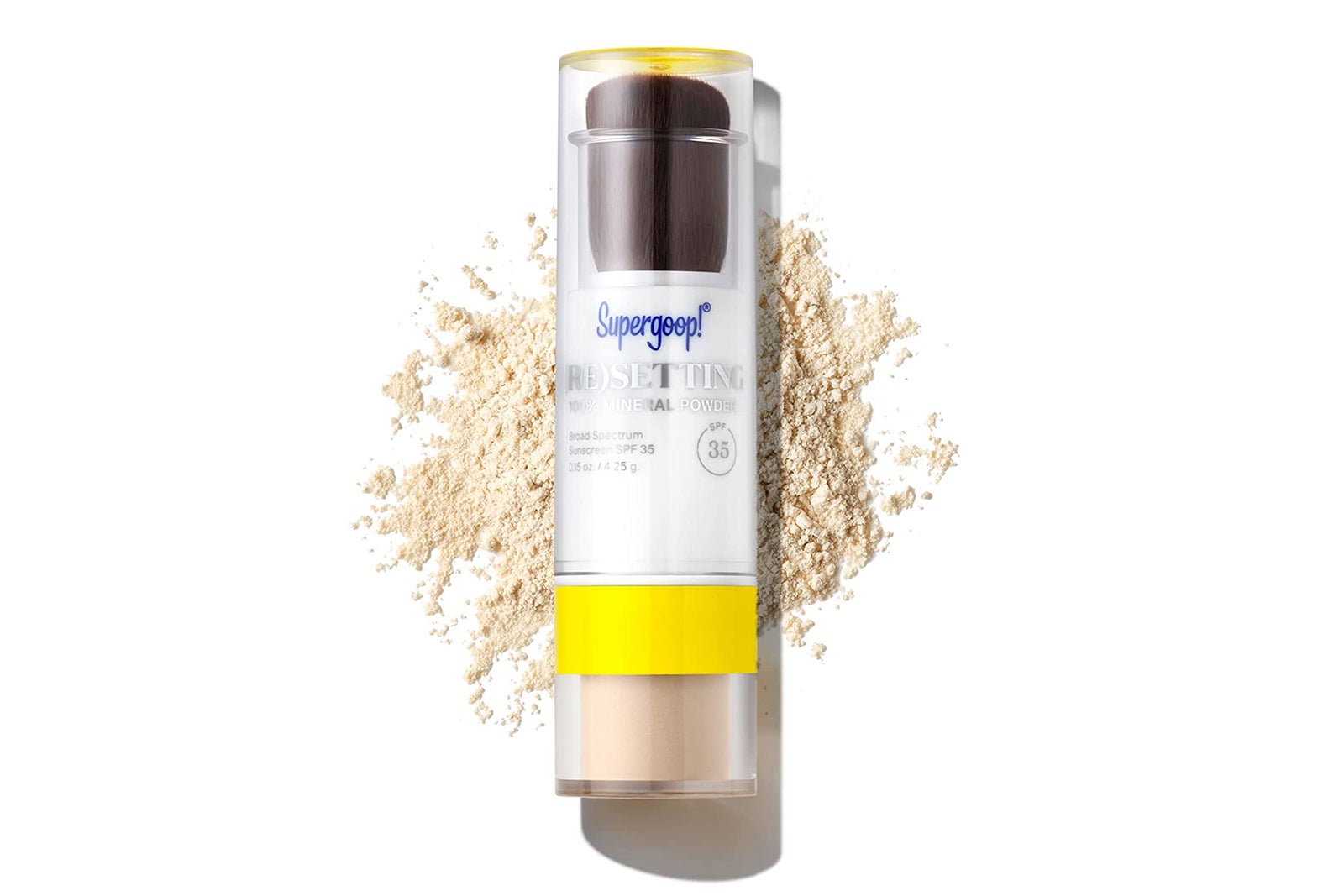
If you've already done your makeup for the day, you don't want to ruin it by slathering on another layer of sunscreen. The solution you need is Supergoop (Re)Setting SPF Mineral Powder ($30). This 100% mineral powder provides skin with SPF 35 protection, while mattifying shine and setting makeup, and the all-in-one packaging is perfect for travel.
Gilette Venus Travel Razor
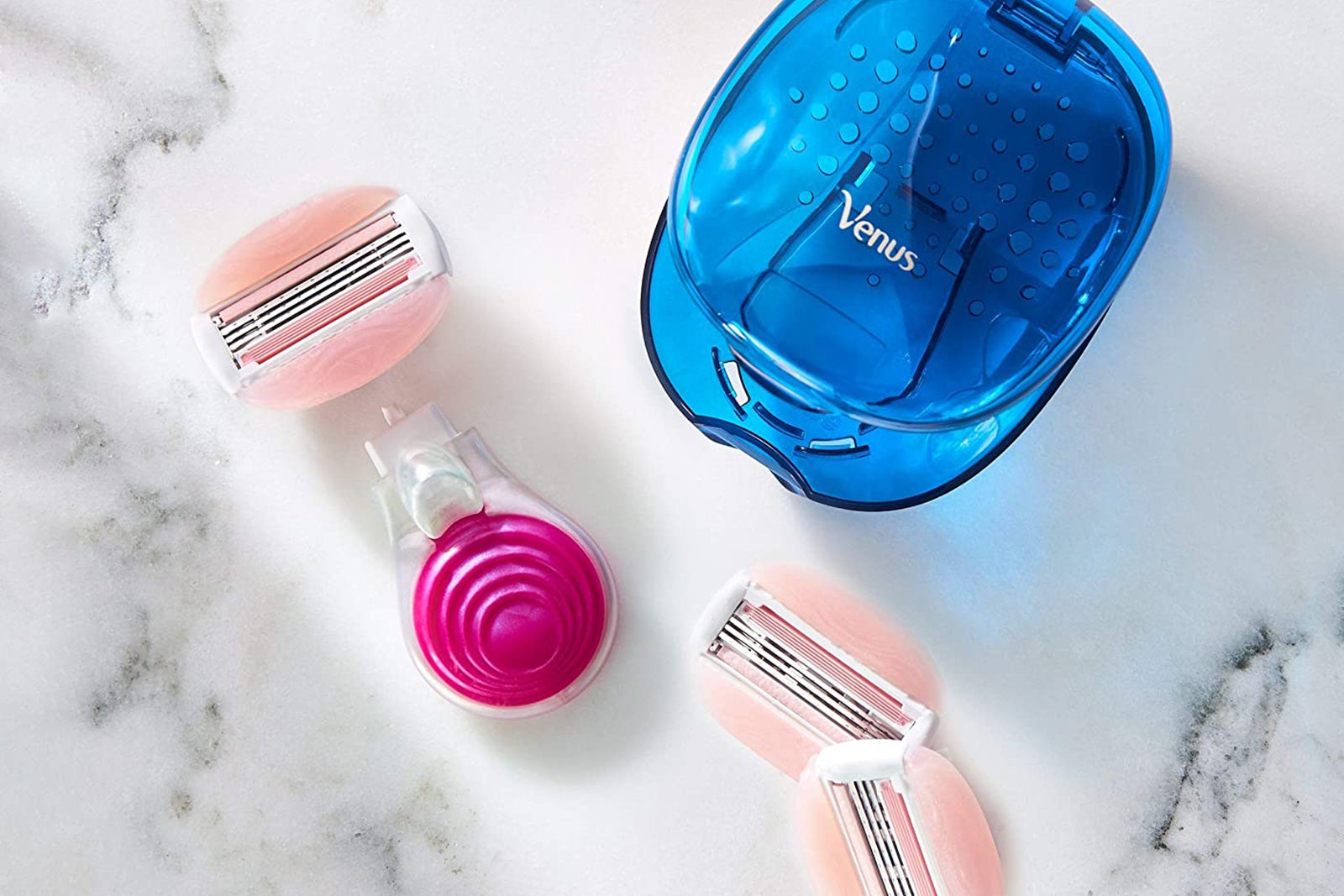
All disposable and cartridge razors are allowed in carry-on baggage per TSA guidelines, but the compact size and on-the-go storage case of the Gilette Venus Travel Razor ($14.99) make it more convenient for travel. This triple-blade razor with built-in moisturizers far surpasses any razor you will find in a hotel gift shop.
CeraVe Hydrating Makeup Removing Wipes
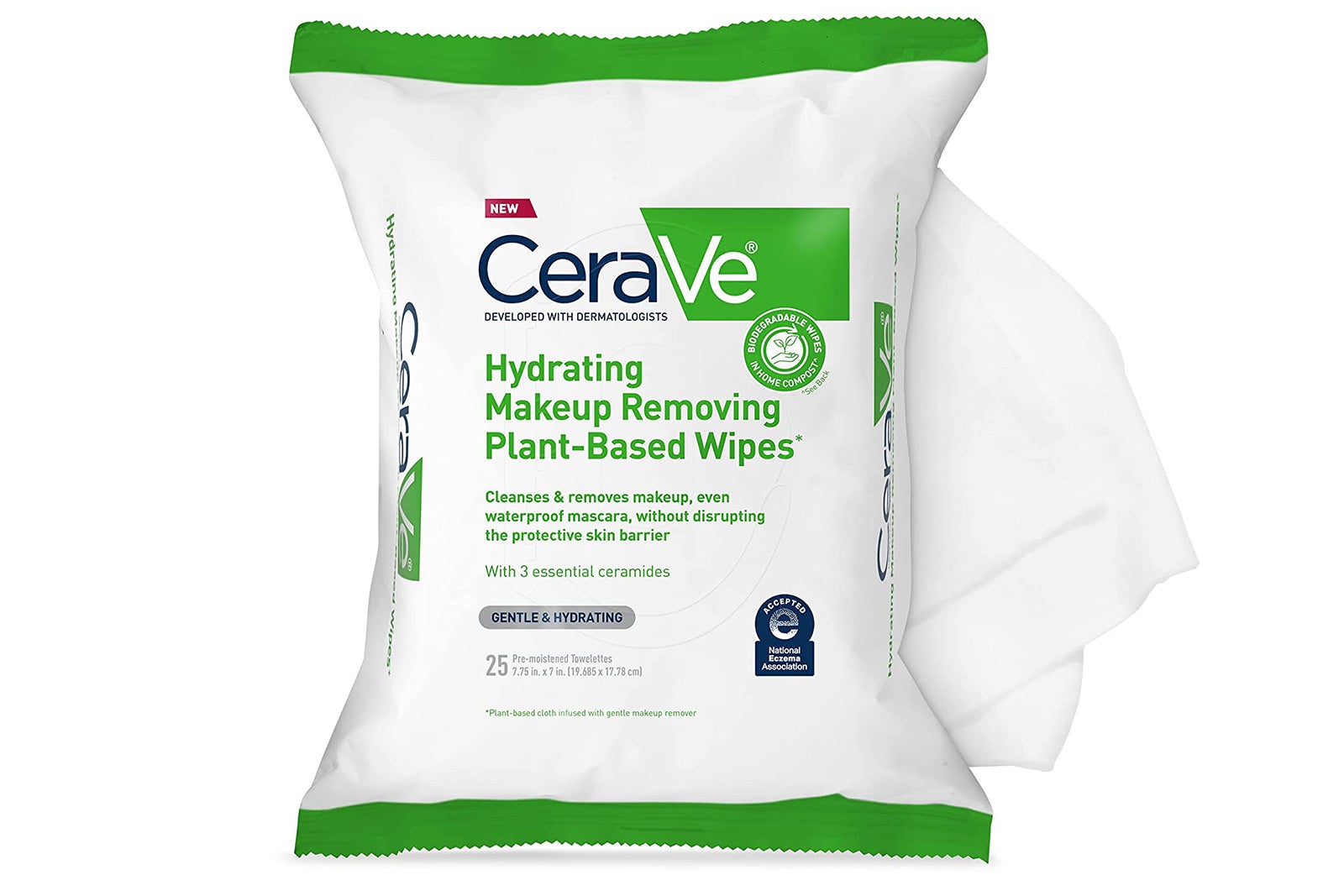
CeraVe Hydrating Makeup Removing Wipes ($9.97) cleanse and hydrate simultaneously without aggravating sensitive skin. These wipes are gentle enough for all skin types and are more convenient than balms or liquid makeup removers when you are on a flight or out and about.
Malin + Goetz Starter Kit
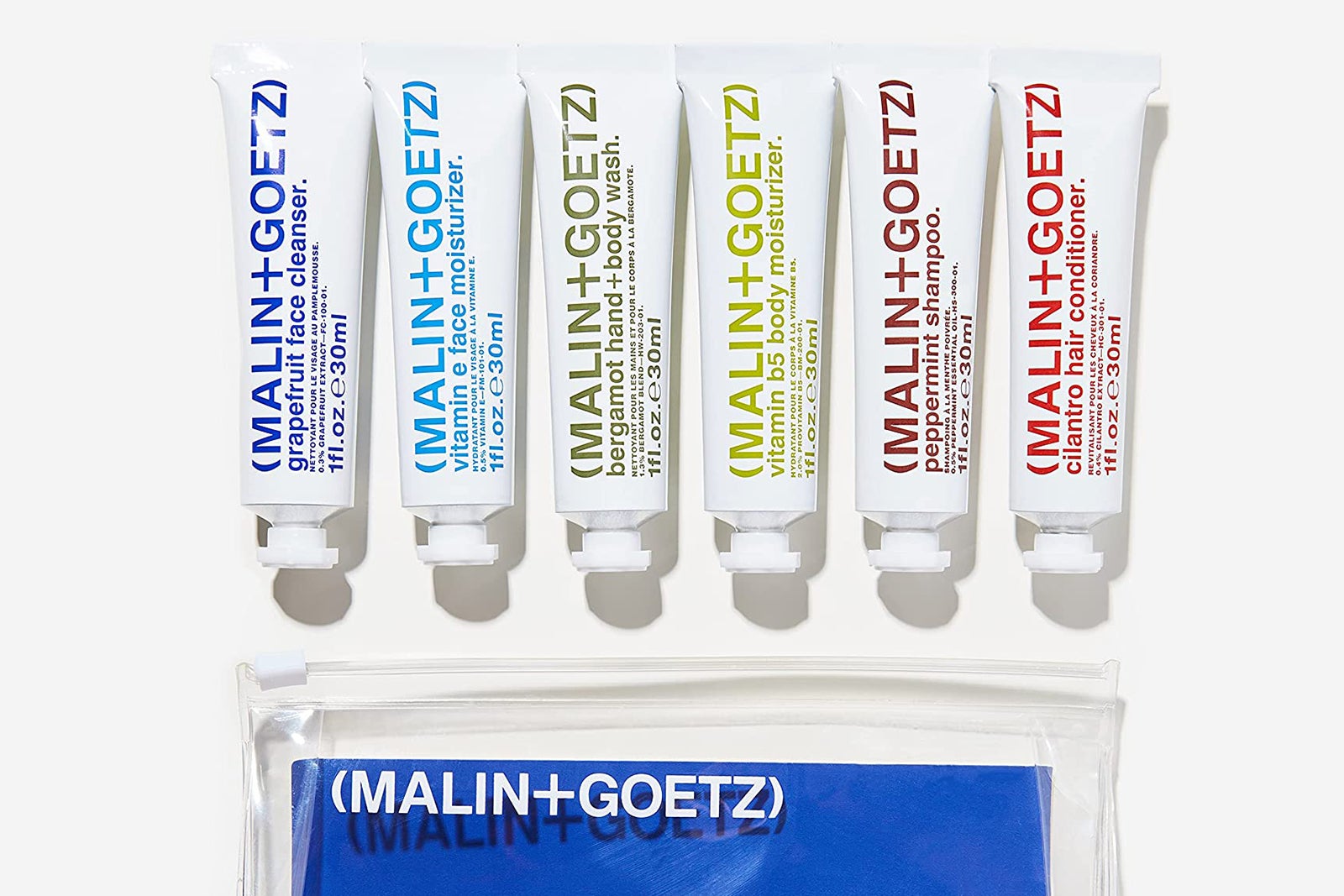
If you jump with joy every time you step into a hotel room with Malin + Goetz toiletries, you can now have a set of your very own. The Malin + Goetz Starter Kit ($33.91) comes with six, 1-ounce tubes of its fan-favorite products for cleansing and moisturizing from head to toe.
TSA-Approved Toiletry Kit
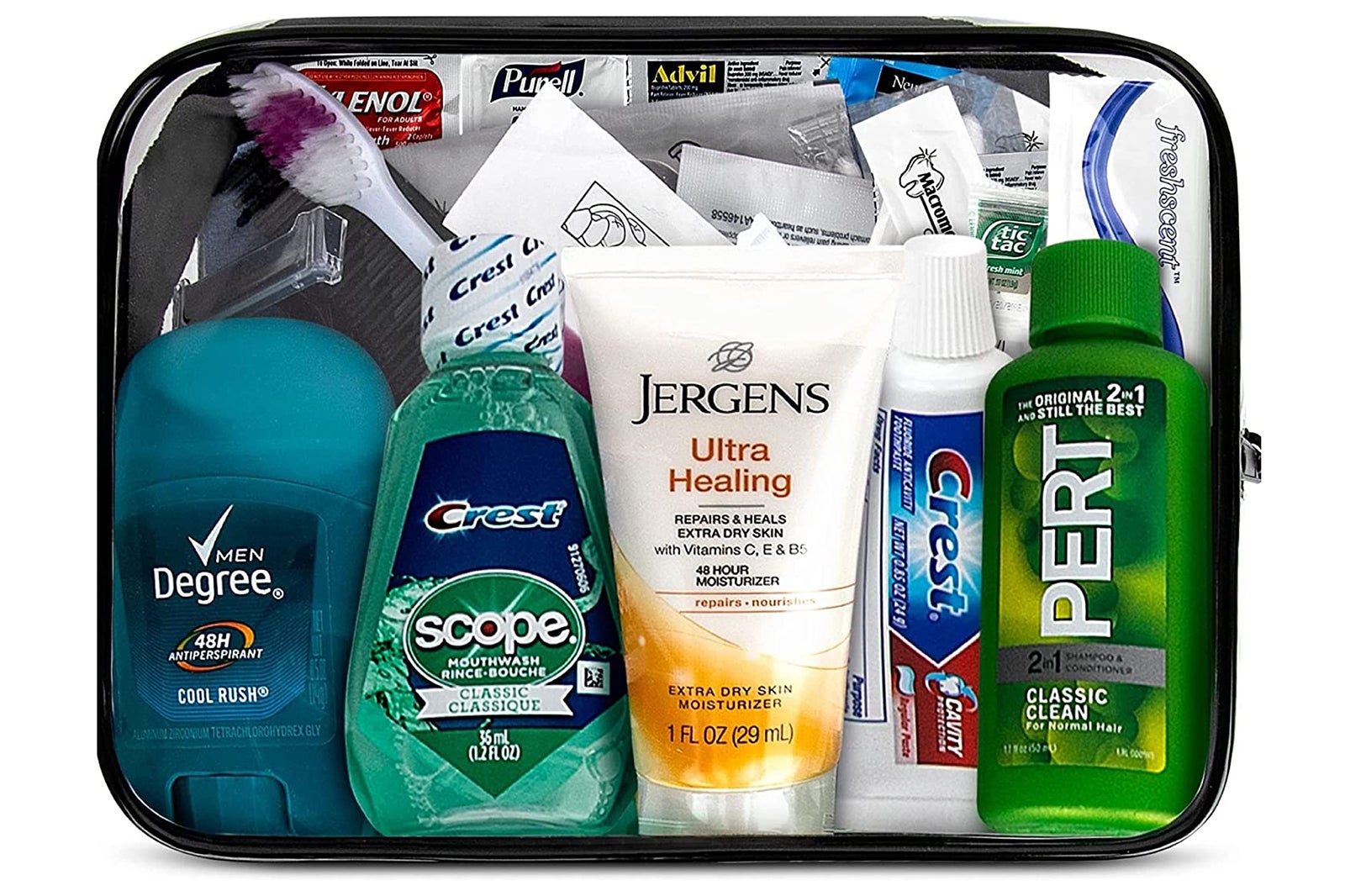
This TSA-Approved Toiletry Kit ($28.99, regular price $32.99) takes the guesswork out of packing TSA-approved toiletries. Organized into one convenient travel pouch, this 20-piece kit comes with everything you need for hair care, skin care, first aid and more. They even threw in some Tic Tacs for fresh breath.
Aesop Departure Travel Kit
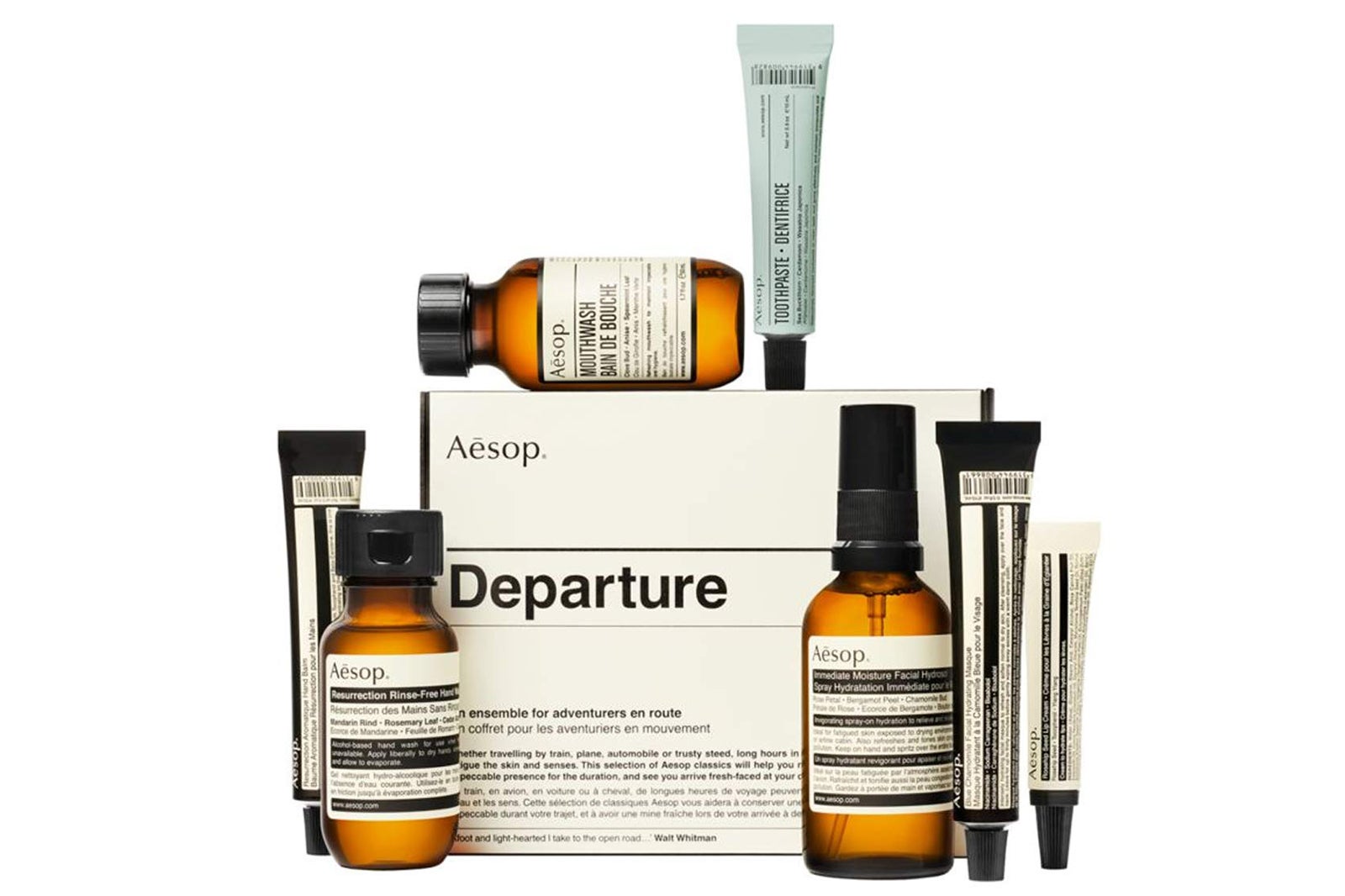
The Aesop Departure Travel Kit ($79.99) comes with seven of Aesop's most popular items that smell great and perform well — two qualities you shouldn't need to sacrifice just because you are traveling. They are also convenient for use while in transit. The toothpaste and mouthwash keep your breath minty fresh, the moisturizers are soothing and hydrating, and the rinse-free hand wash doesn't even require water.
Bottom line
If you have a robust health and beauty routine, it may seem impossible to bring everything you need while sticking to the TSA's 3-1-1 guidelines for liquids. With these travel-friendly products, you'll have plenty of space for all of your favorite products and room leftover to try a few new ones.
Enable JavaScript
Please enable JavaScript to fully experience this site. How to enable JavaScript
- At the airport
Restricted items
What can you fly with.
To prevent inflight danger, many common items are restricted by the Transportation Security Administration (TSA) and Federal Aviation Administration (FAA). If you travel with objects on the TSA prohibited items or FAA Pack Safe Hazmat restrictions lists, they will be confiscated.*
- TSA prohibited items Opens another site in a new window that may not meet accessibility guidelines
- FAA Pack Safe Hazmat restrictions Opens another site in a new window that may not meet accessibility guidelines
*You will be in violation of U.S. Federal Law if you don’t declare any dangerous items. This means you could face up to 5 years imprisonment and a fine of $250,000 (49 U.S.C 5124).
Alcoholic beverages over 140 proof
Allowed for travel?
- Other alcoholic beverages in retail packaging
- Checked bags - yes
Visit the TSA for rules on carry-on bags Opens another site in a new window that may not meet accessibility guidelines
Opened containers aren't allowed.
You can take a maximum of 5 liters per passenger for beverages 24 – 70 percent alcohol by volume in checked bags; customs regulations vary by country.
Due to restrictions set by the European Union (EU), you cannot transport certain products of animal origin into the EU. Please check ahead of time to make sure you comply with these restrictions.
- Carbon zinc
- Silver oxide
- Lithium or lithium-ion
- Nickel-cadmium or nickel-metal hydride
Please remove batteries from devices in your checked bags and put them in your carry-on in separate plastic bags.
Lithium-ion battery acceptance by Watt-hour (Wh):
- Less than 100 Wh – 4 spares in carry-on bag
- 100 - 160 Wh – 2 spares in carry-on bag
- 160 - 300 Wh – Contact Special Assistance
Special assistance
- Damaged batteries
- Automobile, boat or aircraft batteries
Portable electronic devices containing cells or batteries (including lithium) and spares for these devices intended for personal use:
- Laptop computer
- Notebook computer
We allow up to 2 spare batteries for personal use, with restrictions:
- Each spare battery is individually protected in accordance with our lithium battery acceptance policy
- Batteries are in carry-on bag only
- For a lithium metal battery, lithium content cannot be more than 2 grams per battery
- For lithium-ion batteries, a maximum of 2, not exceeding 160 Wh each, are allowed in carry-on bag with airline approval
Traveling with lithium batteries Opens another site in a new window that may not meet accessibility guidelines
Portable electronic devices containing cells or batteries (including lithium) and spares for these devices not intended for personal use:
We allow up to 2 of each device and 2 spare batteries intended for personal use only, with restrictions:
- Approved devices and batteries are safely packaged in carry-on only
- Bags and boxes carrying more than the allotted amount for personal use will not be accepted
- Metal knives (of any length or type)
- Box cutters
- Straight razors
- Carry-on bag - no
You can travel with plastic cutlery and safety/disposable razors in your carry-on bag.
- Pepper spray
Yes, with restrictions
Your drone's battery must not exceed 160 Wh
Drone can be carried on if it or its box is less than 22 x 14 x 9 inches / 56 x 36 x 23 centimeters
Dry ice for packing perishable items
You can travel with up to 5.5 lbs/2.5 kgs as carry-on if:
- Packed in a vented, hard plastic or heavy gauge styrofoam container
- You tell a ticket or gate agent
- Vapor cigarettes
- e-cigarettes
Checked bags - no
Carry-on bag - yes
Since some electronic cigarettes use lithium ion batteries, you cannot travel with them in your checked bags. You can travel with them in your carry-on, but you’re not allowed to use them onboard any flight. We recommend traveling with them in a designated carry case.
- Flares/flare guns
- Swingless golf club load strips
You can travel with swingless golf clubs without strips.
Checked bags - yes*
You can travel with firearms in checked bags only if they are declared to an agent at check-in.
You can travel with up to 11lbs/5kg small arms ammunition for sporting purposes in your checked bags if it is:
- Securely packed in the original manufacturers' packaging
- Packaged in fiber, wood, metal or other packaging specifically designed to carry small amounts of ammunition
Firearms and ammunition
*Firearms are not allowed in checked bags on Landline motorcoach connections.
- Gas torches (including micro-torches and torch lighters)
- Flammable glues/epoxies
- Gas-powered trimmers/edgers
You can only travel with gasoline-powered tools in your checked bags if they are:
- New or unused
- In the original packaging (which must be in good condition)
- Spray starch
- Insecticides
- Drain cleaners
- Oven or bathroom cleaners
- Hoverboards
- Balance wheels
- Electric small scooters
- Intelligent scooters
We don’t allow lithium ion battery-powered personal transportation devices on board or as carry-on or checked bags.
- Lighters or lighter fluid
- Grill lighters
When traveling to/from/through Japan, you can carry one lighter per person.
For all other travel, you can also carry-on:
- 1 book of safety matches
- Common “Bic style” and unsealed “Zippo style” lighters
You cannot travel with:
- Torch/wind-proof lighters
- “Strike-anywhere” matches
- Lighter fluid
- Recreational Marijuana
- Medical Marijuana
Although American is aware of various state laws that allow recreational or medical marijuana possession, the TSA has stated that possession of marijuana, even medical marijuana, is illegal under federal law and that it will refer passengers traveling with marijuana to law enforcement authorities. Accordingly, American does not allow passenger to transport marijuana on our flights. Anyone traveling with or transporting marijuana on American flights does at their own risk.
Electric wheelchairs with spillable batteries
You can travel with mobility devices if:
- Transported according to our guidelines
- Advance notice is given when traveling transatlantic
Mobility and devices
- Aerosol deodorant or hair spray
- Insect repellent
- Perfume or cologne containing alcohol
- Nail polish or nail polish remover
- Large bottles of acetone such as liquid nails
You can travel with personal care items in your carry-on bag if they are:
- Travel-size (3.4 ounce containers or smaller)
- In a clear, plastic, one-quart zip-top bag
You can travel with personal care items in your checked bags if:
- You have no more than 70 ounces in total
- Each container has no more than 16 fluid ounces
Carry-on bags
- Propane tanks
- CO2 cartridges
- Self-inflating rafts
- Recreational oxygen
- Personal face / full-body pod
- Personal face / full-body tent
- Stadium tent
Checked bags – yes
Carry-on bag – yes
You can travel with these items in your bag, but they may not be used on board or in flight. If space is limited and the item doesn’t fit in the cabin, it may need to be checked.
- Portable electronic air freshener / purifier
- Ozone generator
Checked bags – no
Since some devices use lithium ion batteries, you cannot travel with them in your checked bags. You can travel with them in your carry-on, but you’re not allowed to use them on board any flight.
Traveling with lithium batteries Opens in a new window
Samsung Galaxy Note 7 devices
Includes recalled and replacement devices.
- Flameless meal products such as HeaterMeals
- Meals Ready-To-Eat (MREs)
Self-inflating life jackets with no more than 2 small CO2 cartridges for inflation purposes
You can only travel with one life jacket in your checked bag, but it may be confiscated by the TSA.
- Metal scissors
- Screwdrivers
Yes but with restrictions
You can travel with such items as carry-on if their measurements are:
- Cutting edge of up to 4-inches : metal scissors
- Up to 7-inches : tools such as screwdrivers, wrenches and pliers
Checked or carry-on bags with charging devices
Allowed to travel?
You can travel with these bags as a carry-on if the battery is removable. If the bag needs to be checked or valeted you must remove the battery and carry it with you. Bags with non-removable batteries won't be accepted.
- TASER devices
- Electro-shock weapons (conducted electrical weapons)
You can travel with stun guns / shocking devices in checked bags only if transported in a manner that renders the device inoperable from accidental discharge.
Please remove all batteries from devices in your checked bags and put them in your carry-on in separate plastic bags.
- Less than 100 Wh – 4 spares in carry-on bag
- 100 - 160 Wh – 2 spares in carry-on bag
- 160 - 300 Wh – Contact Special Assistance
Flying on a partner airline?
Find helpful information if your trip includes 1 or more flights with our partner airlines.
- British Airways
- Japan Airlines
- Qatar Airways

You may also like...
- Special items and sports equipment
- Oversize and overweight bags

An official website of the United States government
Here’s how you know

Official websites use .gov A .gov website belongs to an official government organization in the United States.
Secure .gov websites use HTTPS A lock ( Lock A locked padlock ) or https:// means you’ve safely connected to the .gov website. Share sensitive information only on official, secure websites.

- For U.S. Citizens/Lawful Permanent Residents
- Know Before You Go
Prohibited and Restricted Items
CBP has been entrusted with enforcing hundreds of laws for 40 other government agencies, such as the U.S. Fish and Wildlife Service, the U.S. Department of Agriculture and the Centers for Disease Control and Prevention. These agencies require that unsafe items are not allowed to enter the United States. CBP officers are always at ports of entry and assume the responsibility of protecting America from all threats.
The products CBP prevent from entering the United States are those that would injure community health, public safety, American workers, children, or domestic plant and animal life, or those that would defeat our national interests. Sometimes the products that cause injury, or have the potential to do so, may seem fairly innocent. But, as you will see from the material that follows, appearances can be deceiving.
Before you leave for your trip abroad, you might want to talk to CBP about the items you plan to bring back to be sure they're not prohibited or restricted. Prohibited means the item is forbidden by law to enter the United States. Examples of prohibited items are dangerous toys, cars that don't protect their occupants in a crash, bush meat, or illegal substances like absinthe and Rohypnol. Restricted means that special licenses or permits are required from a federal agency before the item is allowed to enter the United States. Examples of restricted items include firearms, certain fruits and vegetables, animal products, animal by products, and some animals.
Absinthe (Alcohol)
The importation of absinthe is subject to the U.S. Food and Drug Administration regulations (21 C.F.R. 172.510 and the Department of the Treasury's Alcohol and Tobacco Tax and Trade Bureau regulations (27 C.F.R. Parts 13.51, 5.42(a), and 5.65. The absinthe content must be "thujone free" (that is, it must contain less than 10 parts per million of thujone); the term "absinthe" cannot be the brand name; the term "absinthe" cannot stand alone on the label; and the artwork and/or graphics cannot project images of hallucinogenic, psychotropic or mind-altering effects. Absinthe imported in violation of these regulations is subject to seizure.
Alcoholic Beverages
In addition to U.S. laws, the laws of the state in which you first arrive in the United States will govern the amount of alcohol you may bring with you, and whether you need a license. If you plan to bring alcoholic beverages with you, before you depart, you should contact the state's applicable alcoholic beverage control board to determine what you need to do to comply with that state's laws and regulations.
Automobiles
Automobiles imported into the United States must meet the fuel-emission requirements of the Environmental Protection Agency and the safety, bumper, and theft prevention standards of the U.S. Department of Transportation. Trying to import a car that doesn't meet all the requirements can be difficult. Please see the Importing a Motor Vehicle page for more information.
Almost all cars, vans, sport utility vehicles and so on that are bought in foreign countries must be modified to meet American standards, except most late model vehicles from Canada. Passenger vehicles that are imported on the condition that they be modified must be exported or destroyed if they are not modified acceptably. Also under these circumstances, the vehicle could require a bond upon entry until the conditions for admission have been met.
And even if the car does meet all federal standards, it might be subject to additional EPA requirements, depending on what countries it was driven in. You are strongly encouraged to contact EPA and DOT before importing a car.
Information on importing vehicles can be obtained from the Environmental Protection Agency Web site. You may also find importation information from the U.S. Department of Transportation, Office of Vehicle Safety Compliance.
Copies of the brochure Importing or Exporting a Car can be obtained by writing to:
U.S. Customs and Border Protection P.O. Box 7407 Washington, DC 20044
You can also visit the Exporting a Motor Vehicle page. The EPA Automotive Imports Fact Manual can be obtained by writing to the Environmental Protection Agency, Washington, DC 20460. You can also visit the EPA Web site .
Cars being brought into the United States temporarily, by nonresidents, (for less than one year) are exempt from these restrictions. It is illegal to bring a vehicle into the United States and sell it if it was not formally entered on a CBP Form 7501.
Biological Materials
You may need a U.S. Department of Agriculture permit and/or a Centers for Disease Control and Prevention permit to import biological specimens including bacterial cultures, culture medium, excretions, fungi, arthropods, mollusks, tissues of livestock, birds, plants, viruses, or vectors for research, biological or pharmaceutical use. Permit requirements are located under "Permits" on the USDA Web site and CDC permit information can be found on the Etiologic Agent Import Permit Program page. For more information, please visit the Importing Biological Materials into the United States page.
Ceramic Tableware
Although ceramic tableware is not prohibited or restricted, you should know that such tableware made in foreign countries may contain dangerous levels of lead in the glaze, which can seep into foods and beverages. The U.S. Food and Drug Administration recommends that if you buy ceramic tableware abroad - especially in Mexico, China, Hong Kong or India - you have it tested for lead release when you return, or use it for decorative purposes only.
Cultural Artifacts and Cultural Property
Most countries have laws that protect their cultural property. Art/artifacts/antiquities; archeological and ethnological material are also terms used to describe this material. These laws include export controls and/ or national ownership of cultural property. Even if purchased from a business in the country of origin or in another country, legal ownership of such artifacts may be in question if brought into the United States.
Therefore, although they do not necessarily confer ownership, you must have documents such as export permits and receipts when importing such items into the United States.
While foreign laws may not be enforceable in the United States, they can cause certain U.S. laws to be invoked. For example, under the U.S. National Stolen Property Act, one cannot have legal title to art/artifacts/antiquities that were stolen - no matter how many times such items may have changed hands. Articles of stolen cultural property from museums or from religious or secular public monuments originating in any of the countries party to the 1970 UNESCO Convention specifically may not be imported into the United States.
U.S. law may also restrict the importation of specific categories of art/artifacts/antiquities. For example, U.S. laws restrict the importation of:
- Any pre-Columbian monumental and architectural sculpture and murals from Central and South American countries;
- Native American artifacts from Canada; Mayan pre-Columbian archaeological objects from Guatemala; pre-Columbian archaeological objects from El Salvador and Peru; archaeological objects like terracotta statues from Mali; Colonial period objects such as paintings and ritual objects from Peru;
- Byzantine period ritual and ecclesiastic objects such as icons from Cyprus; and
- Khmer stone archeological sculpture from Cambodia.
Importation of items such as those listed above is permitted only when an export permit issued by the country of origin where such items were first found accompanies them. Purveyors of such items have been known to offer phony export certificates.
As additional U.S. import restrictions may be imposed in response to requests from other countries, it is wise for prospective purchasers to visit the U.S. Department of State website.
Merchandise determined to be Iraqi cultural property or other items of archeological, historical, cultural, rare scientific and religious importance illegally removed from the Iraq National Museum, the National Library and other locations in Iraq, since August 6, 1990, are also prohibited from importation.
Defense Articles or Items with Military or Proliferation Applications
Classified and Unclassified Items that have military application that are considered defense articles, thus require a license before the permanent export, temporary import and temporary export abroad. Such items may include software or technology, blueprints, design plans, and retail software packages and technical information. If CBP officials suspect that a regulated item or defense article has been temporarily imported/exported or permanently exported without a license, they are subject to detention and possible seizure for violation of the International Traffic in Arms Regulations. A complete list of commodities and regulations can be found on the Directorate of Defense Trade Control's (DDTC) website. Teams that have both a commercial and military application are considered to be dual-use commodities and may require an export license depending upon the specifications of the commodities. These commodities may include hardware, software, technology, blueprints, design plans and technical information. A complete list of commodities and regulations controlled under the Export Administration Regulations can be found on the Bureau of Industry and Security website.
Dog and Cat Fur
It is illegal in the United States to import, export, distribute, transport, manufacture or sell products containing dog or cat fur in the United States. As of November 9, 2000, the Dog and Cat Protection Act of 2000 calls for the seizure and forfeiture of each item containing dog or cat fur.
The Act provides that any person who violates any provision may be assessed a civil penalty of not more than $10,000 for each separate knowing and intentional violation, $5,000 for each separate gross negligent violation, or $3,000 for each separate negligent violation.
Drug Paraphernalia
It is illegal to bring drug paraphernalia into the United States unless prescribed for authentic medical conditions such as diabetes. CBP will seize any illegal drug paraphernalia. Law prohibits the importation, exportation, manufacture, sale or transportation of drug paraphernalia. If you are convicted of any of these offenses, you will be subject to fines and imprisonment.
Temporarily taking a firearm or ammunition outside the United States for personal reasons. i.e., hunting, or other personal recreational activities.
U.S. Customs and Border Protection (CBP) reminds United States Citizens (USCs) and U.S. Legal Permanent Residents (LPRs) who intend to temporarily export from the United States a firearm(s) and/or ammunition that they must comply with export control statutory and regulatory requirements.
The temporary export of firearms is governed by the Export Administration Regulations (EAR) administered by the BIS for firearms “subject to the EAR.” Generally, a BIS license is required to temporarily export a firearm. Travelers may be able to utilize the 15 CFR 740.14 Baggage (BAG) license exception, which provides special provisions for exporting firearms and ammunition. Under Lice. Exports of firearms under License Exception BAG must follow the export clearance requirements under 15 CFR 758.11. Export clearance requirements for firearms and related items, which refers to the CBP Form 4457 requirements described below in this guidance.
A nonimmigrant alien leaving the U.S. may export or reexport under the BAG license exception only such firearms controlled under ECCN 0A501 and ammunition controlled under ECCN 0A505 and only if he or she brought the firearms and/or ammunition into the United States under the relevant provisions of Department of Justice regulations at 27 CFR part 478 .
USCs, LPRs and nonimmigrants utilizing the BAG license exception are required present the firearms and ammunition for inspection to a U.S. Customs and Border Protection (CBP) Officer prior to departure from the U.S. To complete this process, the traveler must complete the Certificate of Registration for Personal Effects Taken Abroad CBP Form 4457 and present the merchandise being declared under the BAG license exception to a CBP Officer prior to departure from the U.S. the CBP Form 4457 must be presented along with the firearm(s) and any returning unused ammunition to CBP upon return to the U.S.
It is important to note that the Form 4457 is only for reentry into the U.S.; it is not an entry document to the importing country. It is the responsibility of the traveler to comply with the import laws of the country to which they are traveling.
Additionally, the permanent or temporary exportation of a firearm and/or ammunition that may be regulated by the International Traffic in Arms Regulations (ITAR) administered by the U.S. Department of State, Directorate of Defense Trade Controls (DDTC), or by the Export Administration Regulations (EAR) administered by the U.S. Department of Commerce, Bureau of Industry and Security (BIS). Also, travelers may be required to possess the appropriate Bureau of Alcohol, Tobacco, Firearms and Explosives (ATF) form.
For additional information on the regulatory requirements of other government agencies and information on licenses, forms, and exemptions, please refer to links below.
- Directorate of Defense Trade Controls (DDTC)
- Bureau of Alcohol, Tobacco, Firearms and Explosives
- Bureau of Industry and Security
- U.S. Immigration and Customs Enforcement - Guidance for U.S. Persons Traveling Outside the U.S. with Firearms and/or Ammunition
- Transportation Security Administration – Transporting Firearms and Ammunition
Fish and Wildlife
Certain fish and wildlife, and products made from them, are subject to import and export restrictions, prohibitions, permits or certificates, as well as requirements. CBP recommends that you review the U.S. Fish and Wildlife page for additional information before you depart if you plan to import or export any of the following:
- Wild birds, land or marine mammals, reptiles, fish, shellfish, mollusks or invertebrates;
- Any part or product of the above, such as skins, tusks, bone, feathers, or eggs; or
- Products or articles manufactured from wildlife or fish.
Endangered wildlife species, and products made from them, generally may not be imported or exported. You will need a permit from the FWS to import virtually all types of ivory, unless it is from a warthog. The FWS has many restrictions and prohibitions on various kinds of ivory - Asian elephant, African elephant, whale, rhinoceros, seal, pre-Endangered Species Act, post-CITES (Convention on International Trade in Endangered Species) and many others - and urge you to contact them before you acquire ivory in a foreign country. You may contact the Management Authority at 1-800-344-WILD (1-800-344-9453) Pressing Option 3 will provide you with general information, and Option 4 will connect you to the permits section. You can also get information on permits at the U.S. Fish and Wildlife Service website.
You may import an object made of ivory if it is an antique. To be an antique the ivory must be at least 100 years old. You will need documentation that authenticates the age of the ivory. You may import other antiques containing wildlife parts with the same condition, but they must be accompanied by documentation proving they are at least 100 years old. Certain other requirements for antiques may apply.
If you plan to buy such things as tortoiseshell jewelry, or articles made from whalebone, ivory, skins or fur, contact the:
U.S. Fish and Wildlife Service Division of Law Enforcement 5275 Leesburg Pike, Falls Church, VA 22041
You can also call 1-800-344-WILD (1-800-344-9453) or visit the U.S. Fish and Wildlife Service website. Hunters can get information on the limitations for importing and exporting migratory game birds from this office as well or from the Migratory Birds website.
The U.S. Fish and Wildlife Service has designated specific ports of entry to handle fish and wildlife entries. If you plan to import anything discussed in this section, please contact CBP about designated ports and the brochure Pets and Wildlife, which describes the regulations CBP enforces for all agencies that oversee the importation of animals.
Some states have fish and wildlife laws and regulations that are stricter than federal laws and regulations. If you are returning to such a state, be aware that the stricter state laws and regulations have priority. Similarly, the federal government does not allow you to import wild animals into the United States that were taken, killed, sold, possessed or exported from another country if any of these acts violated foreign laws.
Food Products (Raw and Prepared)
You may bring bakery items and certain cheeses into the United States. The APHIS website features a Travelers Tips section and Game and Hunting Trophies section that offers extensive information about bringing food and other products into the U.S. Many prepared foods are admissible. However, bush meat made from African wildlife and almost anything containing meat products, such as bouillon, soup mixes, etc., is not admissible. As a general rule, condiments, vinegars, oils, packaged spices, honey, coffee and tea are admissible. Because rice can often harbor insects, it is best to avoid bringing it into the United States. Some imported foods are also subject to requirements of the U.S. Food and Drug Administration.
Prior Notice for Food Importation
The Public Health Security and Bioterrorism Preparedness and Response Act of 2002 (Bioterrorism Act or BTA), Public Law 107-188, established the requirement that food items, imported (or offered for import) for commercial use, including hand-carried quantities, be properly reported to the U.S. Food and Drug Administration prior to arrival of those items in the United States. The FDA prior notification timeframes (by transport mode) are two hours by land, four hours by rail or air, eight hours by vessel and prior to the "time of mailing" for international mail.
Food that was made by an individual in his/her personal residence, or food purchased by an individual from a vendor that is sent by that individual as a personal gift (for non-business reasons) to someone in the United States is not subject to Bioterrorism Act requirements. However, food that is sent to an individual in the United States by a business is subject to special requirements of the U.S. Food and Drug Administration. For instance, if you go to a food shop in England and buy a gift basket, then take it to the post office or a courier service to send to a friend, the shipment is not subject to BTA requirements. But if you go to that same shop and ask them to send the gift basket for you, the shipment is subject to BTA requirements, and the vendor will have to file Prior Notice. Many travelers are finding that vendors will not ship food directly to U.S. residents because the reporting requirements can be time-consuming to complete.
In general, failure to provide complete, timely and accurate prior notice for Bioterrorism Act regulated items, can result in refusal of admission of the merchandise, movement of the goods to an FDA registered facility (at importer expense) and/or civil monetary penalty liabilities for any party that was involved in the import transaction.
Fruits and Vegetables
Bringing fruits and vegetables depends on a number of factors. For instance, consider the apple you bought in the foreign airport just before boarding and then did not eat. Whether or not CBP will allow the apple into the United States depends on where you got it and where you are going after you arrive in the United States. The same would be true for Mediterranean tomatoes. Such factors are important because fresh fruits and vegetables can introduce plant pests or diseases into the United States.
One good example of problems imported fruits and vegetables can cause is the Mediterranean fruit fly outbreak during the 1980s. The outbreak cost the state of California and the federal government approximately $100 million to get rid of this pest. The cause of the outbreak was one traveler who brought home one contaminated piece of fruit. It is best not to bring fresh fruits or vegetables into the United States. However, if you plan to, contact either CBP or check the Permits section on the USDA-APHIS website for a general approved list on items that need a permit.
Note: The civil penalty for failing to declare agricultural items at U.S. ports of entry will cost first time offenders $300. The penalty for the second violation goes up to $500. To avoid receiving a penalty all agricultural items and present them to Customs and Border Protection for inspection so that an agriculture specialist can determine if it is admissible.
Game and Hunting Trophies
Information on bringing back your game or hunting trophy can be found at the U.S. Fish and Wildlife Service's Information on Hunting and Fishing page. Currently, 14 ports of entry are designated to handle game and trophies; other ports must get approval from the U.S. Fish and Wildlife Service to clear your entry.
Depending on the species you bring back, you might need a permit from the country where the animal was harvested. Regardless of the species, you are required to fill out a Fish and Wildlife Form 3-177 , Declaration for Importation or Exportation.
Trophies may also be subject to inspection by CBP for sanitary purposes. General guidelines for importing trophies can be found on under the APHIS Import Authorization System (IAS) on the Guidelines for the Importation of Ruminant, Swine, and Bird Trophies website, or by writing to:
U.S. Department of Agriculture APHIS, VS, Strategy & Policy, APIE 4700 River Road, Unit 40 Riverdale, MD 20737-1231
You can also call (301) 851-3300 , option 4.
Nonhuman primate trophy materials may require a permit from the Centers for Disease Control and Prevention. Prospective importers of nonhuman primate trophy materials from nonhuman primates should review the permit requirements and complete an application form, following the Guidance for Individuals Wishing to Import Non-Human Primate Trophies, Skins or Skulls . Trophy materials of other animals under import embargo because of viral zoonotic infections, such as civets, Asian birds, and African rodents, may be imported if the body has been sufficiently processed to render it non-infectious. Proper methods of accomplishing this include:
- Heating to an internal temperature of 70 degrees Celsius (158 degrees Fahrenheit) or placing in boiling water for a minimum of 30 minutes);
- Preservation in 2 percent formaldehyde;
- Chemically treating in acidic or alkaline solutions (soaking in a solution below pH 3.0 or above pH 11.5 for 24 hours); or
- The use of hypertonic salts.
Also, federal regulations do not allow the importation of any species into a state with fish or wildlife laws that are more restrictive than federal laws. If foreign laws were violated in the taking, sale, possession or export to the United States of wild animals, those animals will not be allowed entry into the United States.
Warning: There are many regulations, enforced by various agencies, governing the importation of animals and animal parts. Failure to comply with them could result in time-consuming delays in clearing your trophy through CBP. You should always call for guidance before you depart.
Gold coins, medals and bullion, formerly prohibited, may be brought into the United States. However, under regulations administered by the Office of Foreign Assets Control, such items originating in or brought from Cuba, Iran, Burma (Myanmar) and most of Sudan are prohibited entry. Copies of gold coins are prohibited if not properly marked by country of issuance.
Haitian Animal Hide Drums
Haitian goat hide drums have been previously linked to a case of cutaneous anthrax, and the CDC restricts entry of animal hide drums from Haiti if they have not been processed in a way that renders them non-infectious. Travelers should be aware that untanned animal hide drums from Africa may pose a similar but low risk for cutaneous anthrax.
Meats, Livestock and Poultry: The regulations governing meat and meat products are stringent. You may not import fresh, dried or canned meats or meat products from most foreign countries into the United States. Also, you may not import food products that have been prepared with meat.
The regulations on importing meat and meat products change frequently because they are based on disease outbreaks in different areas of the world. APHIS, which regulates meats and meat products as well as fruits and vegetables, invites you to contact them for more information on importing meats. A list of countries and/or regions with specific livestock or poultry diseases can be found at the Animal Disease Status website.
Rule of thumb: when you go abroad, take the medicines you will need, no more, no less.
Narcotics and certain other drugs with a high potential for abuse - Rohypnol, GHB and Fen-Phen, to name a few - may not be brought into the United States, and there are severe penalties for trying to do so. While these drugs or devices may be legal somewhere else, they may not legally enter the country and will be confiscated, even if they are prescribed by a foreign physician. The Drug Enforcement Administration (DEA) may also have other restrictions on bringing controlled substances into the country.
If you need medicines that contains controlled substances listed in schedules II, III, IV, or V (e.g., some cough medicines, tranquilizers, sleeping pills, antidepressants, or stimulants), do the following:
- Declare all drugs, medicinals, and similar products to the appropriate CBP official;
- Carry such substances in their original containers;
- Carry only the quantity of such substances that a person with that condition (e.g., chronic pain) would normally carry for his/her personal use; and
- Carry a prescription or written statement from your physician that the substances are being used under a doctor's supervision and that they are necessary for your physical well being while traveling.
U.S. residents entering the United States at international land borders who are carrying a validly obtained controlled substance (other than narcotics such as marijuana, cocaine, heroin, or LSD), are subject to certain additional requirements. If a U.S. resident wants to bring in a controlled substance (other than narcotics such as marijuana, cocaine, heroin, or LSD) but does not have a prescription for the substance issued by a U.S.-licensed practitioner (e.g., physician, dentist, etc.) who is registered with, and authorized by, the Drug Enforcement Administration to prescribe the medication, the individual may not import more than 50 dosage units of the medication into the United States.
If the U.S. resident has a prescription for the controlled substance issued by a DEA registrant, more than 50 dosage units may be imported by that person, provided all other legal requirements are met. Note: Only medications that can be legally prescribed in the United States may be imported for personal use. Be aware that possession of certain substances may also violate state laws.
If you have any questions regarding the importation of a controlled substance into the United States, please contact the Drug Enforcement Administration, Office of Diversion Control, International Drug Unit, at (202) 305-8800 .
Merchandise from Embargoed Countries
Generally, you may not bring in any merchandise from Cuba and Iran. The Office of Foreign Assets Control of the U.S. Department of Treasury enforces economic sanctions against these countries. To bring in merchandise from these countries, you will first need a specific license from the Office of Foreign Assets Control. Such licenses are rarely granted. License applications can be submitted to the OFAC online portal .
These regulations do change from time to time, so it is suggested that you contact the Office of Foreign Assets Control before traveling to these countries to determine what may or may not be brought back.
- You may, however, bring from any of these countries information and informational materials - books, magazines, films, posters, photographs, microfilms, tapes, CDs, records, works of art, etc. Blank tapes and blank CDs are not informational materials.
- Gifts of up to $100 (U.S.) in value.
- Household and personal effects, of persons arriving in the United States that were actually used abroad by the importer or by other family members arriving from the same foreign household, that are not intended for any other person or for sale, and that are not otherwise prohibited from importation, and
- Accompanied baggage from personal use normally incident to travel.
- There are non-comprehensive embargo programs administered by Treasury's Office of Foreign Assets Control with respect to the following regions, countries or entities: Western Balkans; Belarus, Cote d'Ivoire, Democratic Republic of the Congo, Iraq (for cultural property), Liberia (Former Regime of Charles Taylor), Sierra Leone, Syria, Zimbabwe, and Persons Undermining the Sovereignty of Lebanon or its Democratic Processes and Institutions.
OFAC also administers programs that target individuals and entities wherever they are located. Those programs currently relate to foreign narcotics traffickers, foreign terrorists, and Weapons of Mass Destruction proliferators. See OFAC's website for a list of those persons and entities.
There are some travel restrictions with respect to certain embargoed countries. You should check the Sanctions Programs website to determine which countries are subject to travel restrictions before making any plans to visit these countries.
If you plan to take your pet abroad or import one on your return, please review the Bringing Pets and Wildlife into the United States page for additional information. You should also check with state, county and local authorities to learn if their restrictions and prohibitions on pets are stricter than federal requirements.
Importing animals is closely regulated for public health reasons and also for the well-being of the animals. There are restrictions and prohibitions on bringing many species into the United States.
Cats are subject to inspection at ports of entry and may be denied entry into the United States if they have evidence of an infectious disease that can be transmitted to humans. If a cat appears to be ill, further examination by a licensed veterinarian at the owner's expense might be required at the port of entry.
Cats are not required to have proof of rabies vaccination for importation into the United States. However, some states require vaccination of cats for rabies, so it is a good idea to check with state and local health authorities at your final destination.
All pet cats arriving in the state of Hawaii and the territory of Guam, even from the U.S. mainland, are subject to locally imposed quarantine requirements.
Dogs must also be free of evidence of diseases that could be communicable to humans. A general certificate of health is not required by CDC for entry of pet dogs into the United States, although some airlines or states may require them. Dogs must have a certificate showing they have been vaccinated against rabies greater than or equal to 30 days prior to entry into the United States. This certificate should identify the dog, show the date of vaccination, the date it expires (there are one-year and three-year vaccinations), and be signed by a licensed veterinarian. If the certificate does not have an expiration date, CBP will accept it as long as the dog was vaccinated 12 months or less before coming to the United States. Dogs coming from rabies free countries do not have to be vaccinated.
These requirements apply equally to service animals such as Seeing Eye dogs.
If your pet does not meet CDC's entry requirements as described above, contact CDC at [email protected] to discuss your particular situation.
Birds may be imported as pets as long as you comply with APHIS and U.S. Fish and Wildlife requirements.
Advisory: Until further notice, there is a temporary ban on the importation of pet birds from countries/ regions affected with highly pathogenic Avian influenza subtype H5NI. See the Animal and Animal Product Import Information website for more information.
All non-U.S. origin pet birds imported into the United States (except from Canada) are required to be quarantined for 30 days in a USDA animal import quarantine facility at the owner's expense. A reservation at the facility must be made in advance by contacting the USDA port veterinarian at one of the special ports of entry listed below. A cost estimate for the quarantine will be provided at that time. Once the reservation is made and payment is received in full for all quarantine services, the animal import quarantine facility will issue a USDA import permit (VS Form17-129). This permit must accompany the bird while in transit.
The USDA defines pet birds as those that are imported for personal pleasure of their individual owners and are not intended for resale.
Document and Quarantine Requirements:
- USDA import permit (VS Form17-129);
- Current Health Certificate issued by a full-time salaried veterinarian of the agency responsible for animal health of the national government in the exporting country of origin;
- 30-day Quarantine in an USDA Animal Import Center; and
- Fish and Wildlife Services Certification (if necessary).
USDA Quarantine Centers and Ports of Entry
- All non-U.S. origin pet birds must enter the country and undergo quarantine at one of the following import quarantine facilities.
- These are the only ports of entry available for importing non-U.S. origin pet birds.
New York Animal Import Center (NYAIC) USDA, APHIS VS 230-59 Rockaway Blvd., Suite 101 Jamaica, NY 11413 Telephone: (718) 553-3570 Fax: (718) 553-3572 Port of Entry : JFK International Airport
Miami Animal Import Center USDA-APHIS-VS 6300 NW 36 Street Miami, FL 33122 Telephone: (305) 876-2200 Fax: (305) 876-2201
Port of Entry: Miami International Airport
The 30 day quarantine period officially begins when your pet bird arrives at the quarantine facility.
Other common pets such as rabbits, ferrets, hamsters, gerbils and guinea pigs may be imported if they are in good health. The importation of reptiles and invertebrates is restricted; please contact the U.S. Fish and Wildlife Service for additional guidance. Most species of snails are not admissible. Contact APHIS for additional information. All civets, African rodents and nonhuman primates are prohibited except for science, education and exhibition. These species cannot be imported as pets. Refer to the CDC's Traveling with Pets, Importation of Animals and Animal Products into the United States website for more information.
Photographic Film
CBP will not examine film you bought abroad and are bringing back unless the CBP officer has reason to believe it contains prohibited material, such as child pornography.
You will not be charged duty on film bought in the United States and exposed abroad, whether it is developed or not. But film you bought and developed abroad counts as a dutiable item.
Plants and Seeds
Some plants, cuttings, seeds that are capable of propagation, unprocessed plant products and certain endangered species are allowed into the United States but require import permits and other documents; some are prohibited entirely. Threatened or endangered species that are permitted must have export permits from the country of origin.
Every single plant or plant product including handicraft items made with straw, must be declared to the CBP officer and must be presented for CBP inspection, no matter how free of pests it appears to be.
Soil is considered the loose surface material of the earth in which plants, trees, and scrubs grow. In most cases, the soil consists of disintegrated rock with an admixture of organic material and soluble salts. Soil is prohibited entry unless accompanied by an import permit. Soil must be declared and the permit must be verified.
Textiles and Clothing
In general, there is no limit to how much fabric and clothing you can bring back as long as it is for your personal use or as gifts. If you have exceeded your personal exemption, you may have to pay duty on the items. Unaccompanied personal shipments (packages that are mailed or shipped), however, may be subject to limitations on amount.
On January 1, 2005, quotas for all countries that are part of the World Trade Organization (WTO) were eliminated. There are still some countries, like Vietnam, that are not part of the WTO that have quotas in place for commercial shipments. These countries may require an additional document called a "visa" accompany the shipment.
China could have limits on particular garments called "safeguards." It is recommended that you contact a CBP import specialist in your area or at the port where you plan to import to determine what countries are subject to quotas and what products from China are subject to safeguards.
There may be additional documentation required for textiles from other countries such as the African countries that require a visa to be placed on a commercial invoice in order to get duty-free treatment. There may also be a certificate of eligibility document requirement to get duty-free treatment under many of the free trade agreements that are negotiated between the United States and the foreign government. These are not admissibility documents, but allow you to import your garments duty-free, provided certain conditions are met.
Trademark and Copyrighted Articles
CBP enforces laws relating to the protection of trademarks and copyrights. Articles that infringe a federally registered trademark or copyright or copyright protected by the Berne Convention for the Protection of Literary and Artistic Works are subject to detention and/ or seizure. Infringing articles may consist of articles that use a protected right without the authorization of the trademark or copyright owner or articles that copy or simulate a protected right.
Articles bearing marks that are counterfeit or inappropriately using a federally registered trademark are subject to seizure and forfeiture. The importation of articles intended for sale or public distribution bearing counterfeit marks may subject an individual to a civil fine if the registered trademark has also been recorded with CBP. Articles bearing marks that are confusingly similar to a CBP recorded registered trademark, and restricted gray market articles (goods bearing genuine marks not intended for U.S. importation for which CBP granted gray market protection) are subject to detention and seizure.
However, travelers arriving in the United States may be permitted an exemption and allowed to import one article of each type, which must accompany the person, bearing a counterfeit, confusingly similar or restricted gray market trademark, provided that the article is for personal use and is not for sale.
This exemption may be granted not more than once every 30 days. The arriving passenger may retain one article of each type accompanying the person. For example, an arriving person who has three purses, whether each bears a different infringing trademark, or whether all three bear the same infringing trademark, is permitted only one purse. If the article imported under the personal exemption provision is sold within one year after the date of importation, the article or its value is subject to forfeiture.
In regard to copyright infringement, articles that are determined by CBP to be clearly piratical of a protected copyright, i.e., unauthorized articles that are substantially similar to a material protected by a copyright, are subject to seizure. A personal use exemption for articles, similar to that described above also applies to copyrighted articles for the personal, non-commercial use of the importer and are not for sale or distribution.
You may bring back genuine trademarked and copyrighted articles (subject to duties). Products subject to copyright protection most commonly imported include software on CD-ROMs, sound recordings, toys, stuffed animals, clothing with cartoon characters, videotapes, DVDs, music CDs and books. Products subject to trademark protection most commonly imported include handbags and accessories, and clothing.
Luggage shop by size
How to Pack Makeup for Travel: Tips and TSA Rules
Travelpro Travel Expert Editor
Tips & Tricks
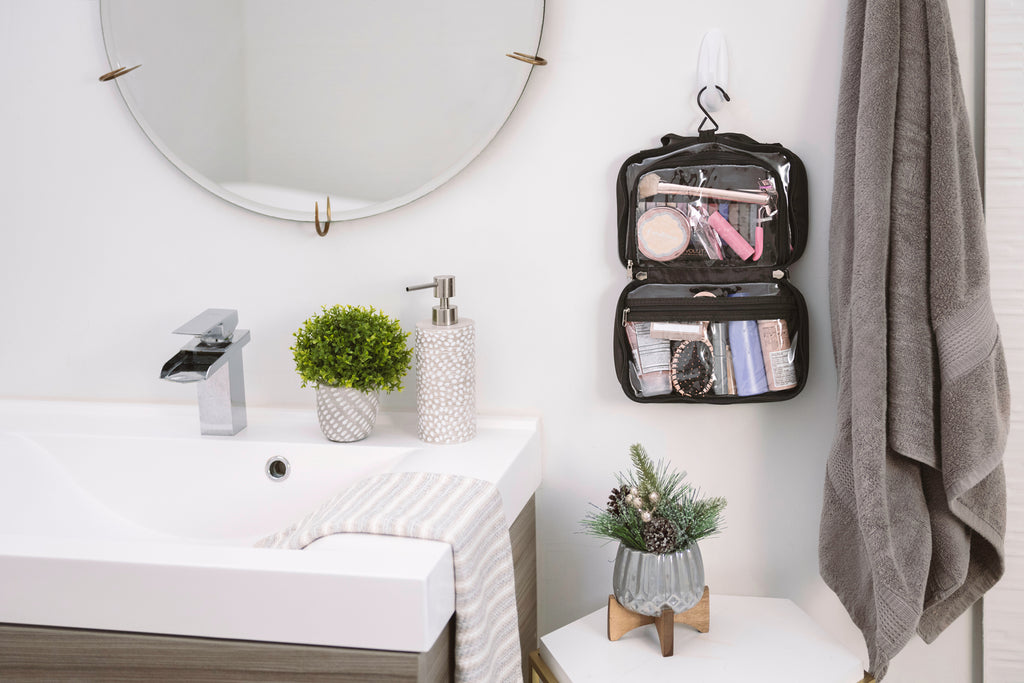
When navigating airport security, travelers often wonder if their packed makeup will fly or get flagged. Beauty products can be expensive and having them confiscated is a costly prospect. Plus, you don’t want to be left without your favorite products while away.
Packing travel-friendly makeup in your carry-on luggage is doable, but what kind of makeup you're taking with you matters. Knowing the TSA makeup rules will ensure you clear security with ease and don’t accidentally hold up the line.
3-1-1: TSA Rules for Makeup
The 311 liquid rule applies to all liquid and semi-liquid items you pack in your carry-on luggage – including gels and thicker makeup liquids. Put small items in 3.4 ounce containers in a clear quart-sized bag. You can bring one of these bags in your carry-on.
The 3 1 1 rule for makeup is the same. You can take liquid makeup on a plane, but these items don’t get their own bag, so know how to pack your toiletries like a pro .
Does Makeup Count as a Liquid?
Not all makeup is the same. Mascara is considered a liquid; makeup wipes are not a liquid in TSA’s rulebook.
- Cream Blush – Cream blush is a liquid to TSA.
- Liquid Concealer – Liquid concealer is a liquid and must follow the 311 liquid rule.
- Lip Balm/Gloss/Lipstick – Lip balm/gloss/lipstick is not considered liquid.
- Liquid/Gel Eyeliner – These are liquid.
- Liquid/Gel Highlighter - These are liquid.
- Liquid/Gel Cream Eye Shadow - These are liquid.
Powders and moist solids do not fall in the category of what is considered a liquid. To learn more, know what's allowed in your carry-on .
How to Pack Makeup for a Flight
How much makeup you can bring on the plane is limited. Knowing how to pack makeup in a carry on helps ensure you have enough space for everything you need.
Separate Liquids frim Non-Liquids
With only one quart-sized bag to fill, use that space for your liquids. This makes it easy to quickly show your liquids bag if asked by the TSA.
Long before you begin packing, plan your outfits. Coordinate colors and styles to minimize the makeup necessary for your trip. Bring items that have multiple purposes and are truly necessary.
Decant Products into Travel-Size Containers
If your favorite product is too big, pour some into a smaller container that follows what the 3-1-1 rule says. Choose something durable and spill-proof to prevent mishaps.
Place Products into Clear, Quart-sized Bag
You may want to opt for something a little sturdier than a Ziploc that still meets TSA guidelines. Remember, quart size is the largest bag allowed; you can take something smaller.
Pack Strategically
Lip balm and hand sanitizer are likely to be used during the flight. Since they're not considered liquids (TSA allows up to 12 ounces of hand sanitizer), you can keep these in a pocket or easy-to-access compartment.
Secure Your Bag
Tightly sealing each container helps prevent messes. Some travelers wrap the caps with plastic wrap or tape for additional security.
Breeze Through Security Knowing the TSA Makeup Rules
With modern security screening technology, it's nearly impossible to sneak through forbidden items. Remember, if it has moisture in it, it's likely to be considered a liquid by TSA standards. Pack well to fly through security and enjoy your trip without sacrificing your favorite essentials.
Now that you know the TSA rules regarding makeup, you can pack like a pro! Check out TravelPro®’s collection of toiletry bags to keep things safe, organized and well contained.
FIND THE BEST SUITCASE WITH THE TRAVELPRO® LUGGAGE FINDER
Share on Facebook
Tweet on Twitter
Pin on Pinterest
You might also enjoy
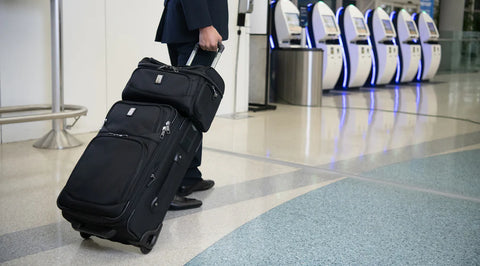
Tips & Tricks For Navigating an Airport Like a Pro
Travelpro Travel Expert Editor The Travelpro® Blog
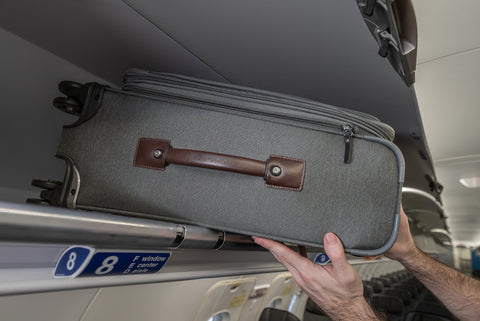
How to Board a Plane
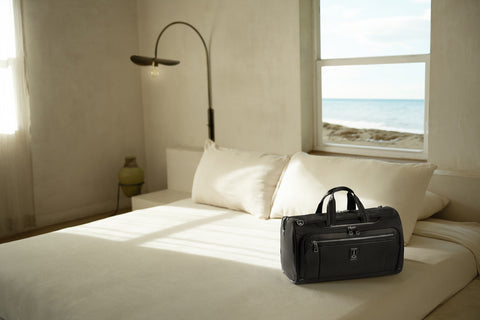
Duffle Bags as Carry-On: Everything You Need to Know
Looks like you're all stocked up!
You’ve reached the purchase limit for this scent kit. don’t worry though, you can still buy up to 3 of each kit.
become a member of the snif fam become a member of the snif fam
Join a community of people obsessed with changing the fragrance experience.
thank you for signing up
There was an error.
By submitting this form, you agree to receive recurring automated promotional and personalized e-mail marketing messages (e.g. cart reminders) from Snif at the mobile number used when signing up. Consent is not a condition of any purchase. Consent is not a condition of any purchase. Reply HELP for help. You can withdraw you consent at any time by texting STOP. Msg frequency varies. Std Msg & data rates may apply. View Terms of Service & Privacy Policy . Contact Snif at [email protected] .
accepted payment methods
- American Express
By using this site you agree to our use of cookies. Read more.

UponArriving
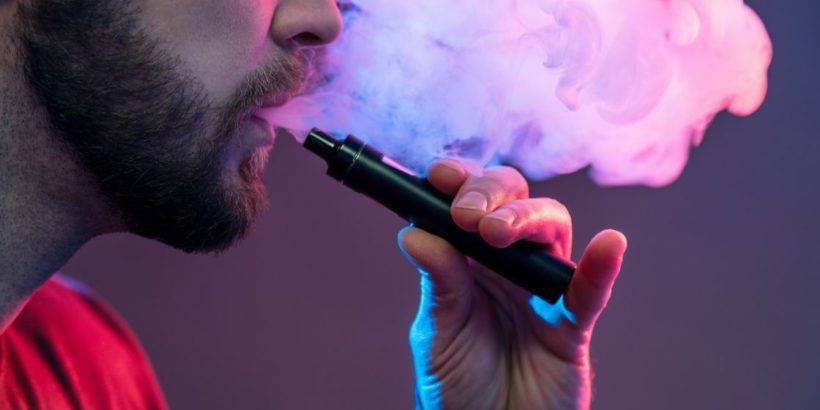
TSA Rules for Vapes and e-Cigarettes (The Big Questions Answered) [2023]
As people return to traveling, a lot of passengers will be asking about the TSA rules for vapes, mods, and e-cigarettes.
The rules are relatively straightforward but there are some specific requirements that you need to be aware of when it comes to things like cartridges and batteries .
In this article, I’ll break down everything you need to know about bringing your vape pens or e-cigarettes through airport security.
Table of Contents
What are the TSA rules for vapes and e-cigarettes?
TSA allows passengers to bring electronic cigarettes and similar devices (vaporizers, vape pens, mods, atomizers, and electronic nicotine delivery systems) through airport security as a carry-on.
However, these devices are prohibited in CHECKED baggage.
The FAA banned e-cigarettes in checked luggage in 2016 after there were reports of small fires that broke out in the cargo holds. So this restriction is for the safety of all passengers and crew.
Please do not attempt to get around this restriction as it will put everybody at risk.
Tip: Use the free app WalletFlo to help you travel the world for free by finding the best travel credit cards and promotions!
Bringing vapes and e-cigarettes through airport security
When taking your vapes and e-cigarettes through the airport, you can bring them inside your carry-on or inside a personal item (such as a backpack) no problem.
(I don’t recommend putting them in your pocket while in the airport because you might forget as you go through airport security scanners .)
Some airlines, such as American Airlines and Delta, recommended that you store them in a designated carry case that may have come with the original vape packaging.
If your mod/vaping device has multiple parts then it is recommended that you disassemble your vaporizer prior to entering the security line.
Even better is if you have all of the parts (atomizer, tank, mouth piece, batteries, etc.) neatly placed within a carrier for easy inspection.
When you are actually going through security, it’s recommended to remove your e-cigarette/vape, place it in a tray/bin, and put it through the x-ray scanner separately from your carry-on bag.
If you keep it in your bag, it could look suspicious and cause you to undergo additional screening.
Generally speaking, the larger your device the greater your chances of a TSA agent wanting to take a closer look.
If they want to take a closer inspection, just let them do their thing. If you don’t have any illegal substances, you don’t have anything to worry about.
Note that if you are bringing special pods or packs that contain liquid vape you need to comply with the liquids rule which I will talk about below.
Related: Bringing a lighter through airport security
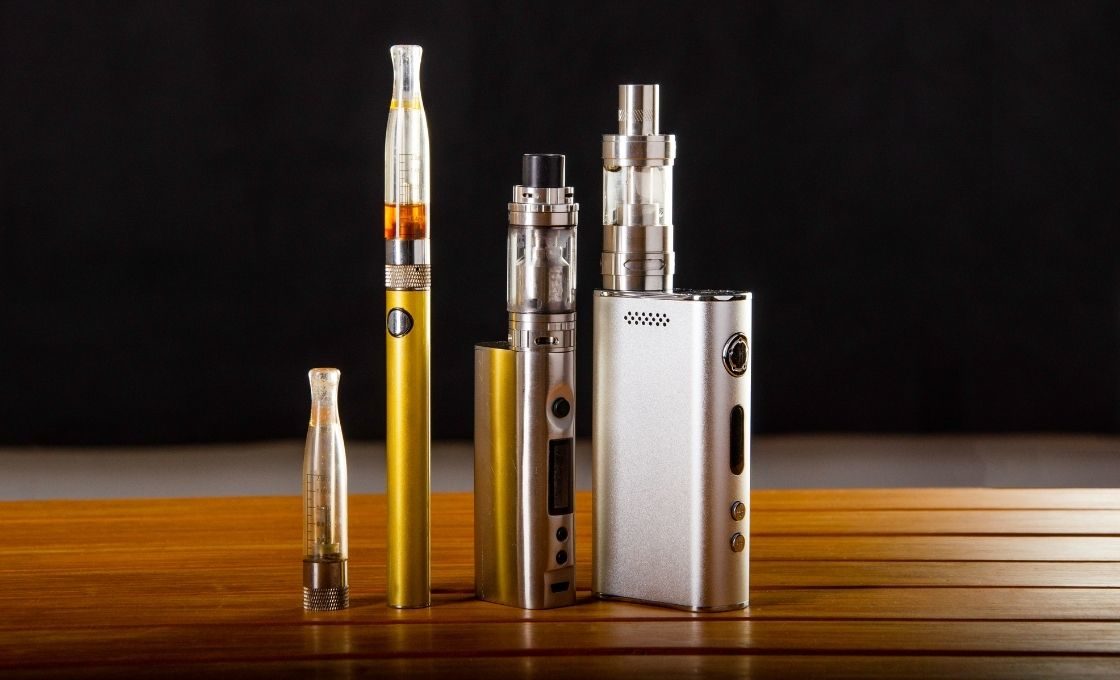
Liquid vape cartridges
Liquid cartridges such as JUULpods that click into the top of the JUUL devices and other similar containers that contain e “juices” are considered a liquid and, therefore, they will be subject to the TSA liquids 3-1-1 rule.
The liquids 3-1-1 rule requires all liquid containers to be 3.4 ounces (100ml) or smaller and for them to be stored in a quart sized bag (preferably a clear Ziploc bag).
This means that if you are transporting JUULpods or other juice packs, you need to transport them in a very specific way.
First, the vape cartridges need to be smaller than 100ml .
Many vape juice cartridges are much smaller than 100ml so it should not be difficult for you to find TSA compliant vape cartridges.
In some cases you may need to remove your vape cartridge from your device so that the device has no attachments containing liquid.
Second, you need to place these cartridges in a quart sized Ziploc bag.
The key thing here is that the cartridges must fit “comfortably” inside the bag which means the bag cannot be overstuffed or almost bursting at the seams.
If you do not have TSA Pre-Check , you will need to remove your liquids bag from your carry-on as you make your way through the airport screening process.
Because of this screening process you might be better off just transporting your pods in your checked baggage where you can transport unlimited quantities.
There are reports of the pods leaking at high altitudes so having them in a sealed bag is highly recommended. It is also better to transport a partially used cartridge that has room for the liquid to expand to avoid leakage.
Related: TSA Checklist (Tips & PDF)
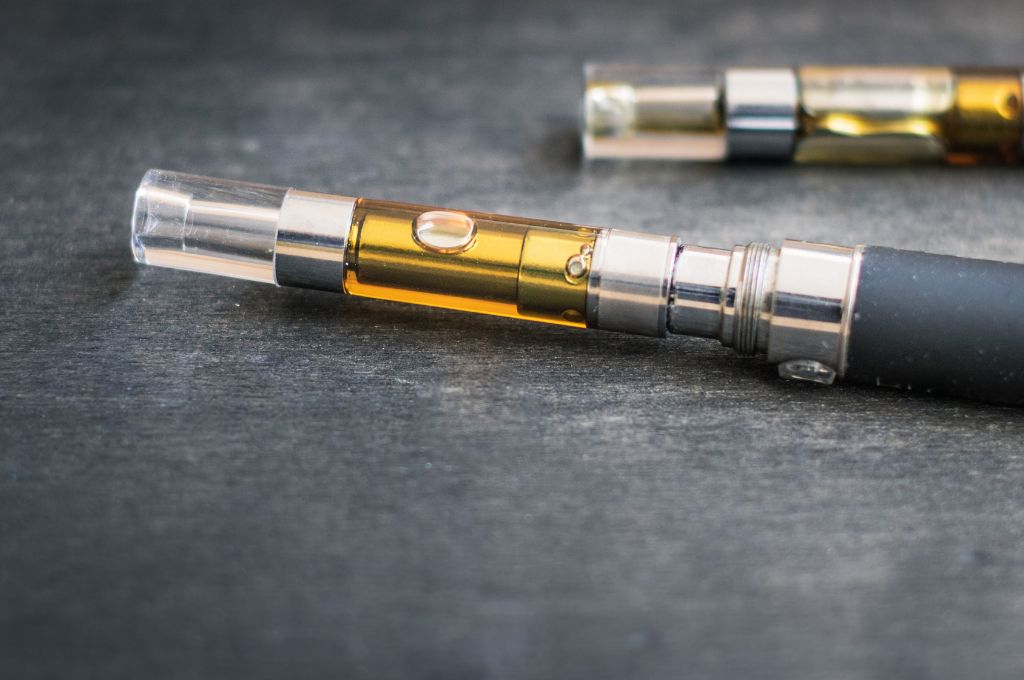
Checking your bag at the gate
Sometimes your plane may not have room for your carry-on, especially if you are towards the back of the boarding process .
If this happens to you and you are traveling with your vape, be sure that you remove your vape and batteries from your carry-on bag that they are checking because they will not be allowed as a checked item.
Related: Can You Take Cigarettes on a Plane?
Vape pen chargers
If you are bringing a power charger or power bank that contains a lithium ion battery it must also be packed in your carry-on bag.
This is because such battery packs can cause risks of explosions and fires in the cargo hold. So to be on the safe side, bring your spare batteries with you on your carry-on.
Keep in mind that TSA can apply extra scrutiny when traveling with multiple spare batteries because the batteries can pose a risk. This is especially true if your lithium batteries have more than 100 watt hours.
For that reason, you may want to only travel with one spare battery or pack your multiple batteries delicately so that they cannot come in to contact with each other.
Related: Bringing Batteries on a Plane: TSA’s Rules for Staying Charged Up
Flying with marijuana/THC vapes
With the growing legalization of marijuana in different states, a lot of travelers are now curious as to how they can legally fly when carrying marijuana on them.
The first thing to note is that marijuana is still illegal on the federal level which makes it illegal to fly with.
Reportedly, regardless of what airport you are departing, TSA’s response to finding marijuana will be the same.
“It is important for me to note that TSA’s response to the discovery of marijuana is the same in every state and at every airport – regardless of whether marijuana has been or is going to be legalized,” TSA spokesperson Lorie Dankers explained.
“This also covers medical marijuana.”
But in practice it’s not clear that this is the case.
If you are flying from a state that has legal marijuana, such as Colorado, and you were caught with marijuana at the airport, it is possible that they will simply request for you to dispose of the cannabis .
But if you were traveling from an area where marijuana is not legalized, the response could be much different.
The bottom line is that this is still a bit of a gray area that is still developing and so there are basically no guarantees as to how TSA will react upon finding marijuana in your possession during the security screening process.
The second thing to note is that TSA is not actively looking to discover marijuana or other illegal drugs that might be in your possession. The TSA website states:
TSA’s screening procedures are focused on security and are designed to detect potential threats to aviation and passengers. Accordingly, TSA security officers do not search for marijuana or other illegal drugs
However, they do note that if illegal substances are discovered during the security screening process the TSA will refer the matter to a law-enforcement officer.
Many vapes containing THC are pretty discreet so they may not always be easily detected.
So if you are traveling with (small amounts) of marijuana/THC vape pens you may not encounter any problems but you should be prepared to have to dispose of your marijuana if it is detected by TSA and in a worst-case scenario, be prepared to explain why you have it in your possession to a law-enforcement officer.
Related: Can You Smoke Weed in a Hotel Room?
Related: Can You Bring Food on a Plane?
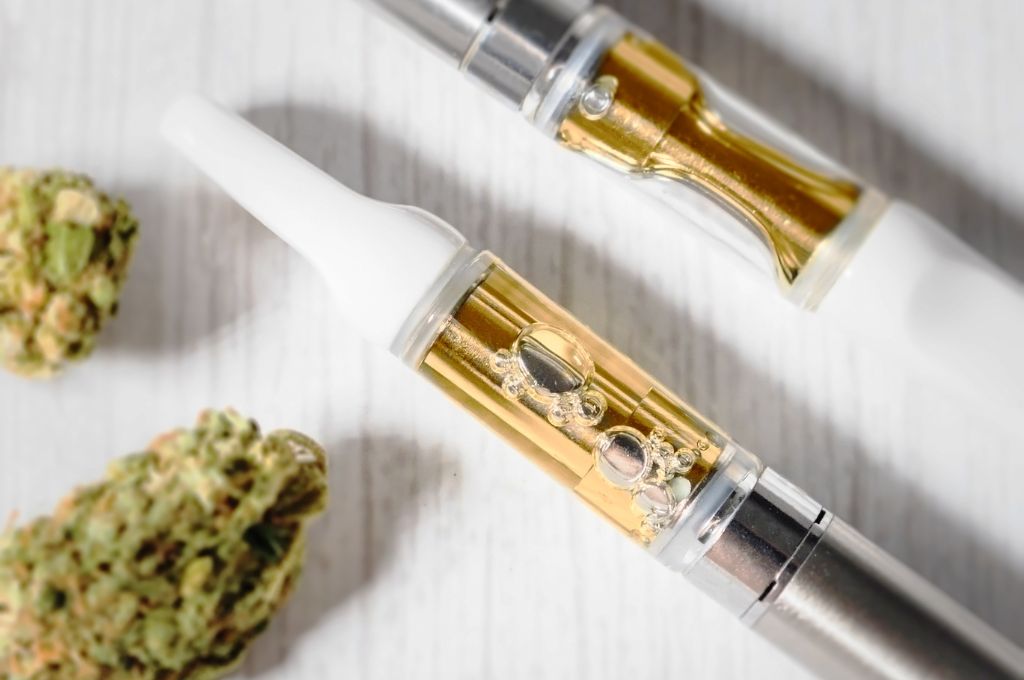
The back up plan
Some travelers who are weary about losing items when going through security will bring a self-addressed envelope with postage so that they can mail off any item that would be confiscated.
I’ve personally never tried this before but I have seen reports online of people doing it successfully. While a rare occurrence, it could come in handy when a TSA agent uses discretion to confiscate your vape due to some unknown reason or suspicion ( TSA agents have discretion to prevent you from bringing items through security ).
I don’t see any reason why the self-addressed envelope route could not work in many instances but if you are trying to mail off illegal substances such as marijuana then it could obviously be very problematic (and illegal) so use common sense.
TSA rules for vapes FAQ
No, you are not allowed to vape inside an aircraft. This is to protect people from the devices’ second-hand vapor and to reduce the risk of a device malfunctioning. If you are caught vaping on a plane you could be subject to a large fine up to $4,000.
Many airlines require your vape to be turned off or to be placed in safety mode during flight.
No, you are not allowed to vape anywhere inside an aircraft.
Yes, e-cigarettes are allowed to be brought on a plane as a carry-on.
Vape pens are not allowed in checked baggage because they present a hazardous risk. The batteries could be prone to exploding and catching fire in the cargo compartment.
Many airlines will not allow you to charge an e-cigarette during flight and may require it to be powered off. You can ask a flight attendant but be prepared for them to tell you no.
Some countries have banned e-cigarettes from flights and from importation so before attempting to travel with an e-cigarette on an international flight you should first verify that possession of the e-cigarette in the country is legal.
While TSA does not actively seek out vapes containing THC, it is possible that if it is detected they will request for you to throw it out or refer you to airport authorities. This can even occur when departing from a state with legalized marijuana.
No, you do not have to declare your electronic cigarette or vape. However, you should remove it from your carry-on and comply with the liquids rule if needed.
Cartridges containing liquids tend to leak at high altitudes as the liquid expands under the decreased air pressure. So it is recommended to not carry cartridges that are full with e-liquid. In addition, storing them in a sealed bag or container could be a good idea.
Yes, vapor can set off the smoke alarm on a plane which is another reason why you do not want to vape on a plane. Passengers have gotten into trouble with this in the past, so it’s something you don’t want to risk.
Traveling with an e-cigarette or vape through airport security is permitted so long as you comply with the liquid rules.
You want to pay extra attention to make sure you do not leave your cigarettes in your checked baggage because that could present major risks to the flight and also get you into legal trouble.

Daniel Gillaspia is the Founder of UponArriving.com and the credit card app, WalletFlo . He is a former attorney turned travel expert covering destinations along with TSA, airline, and hotel policies. Since 2014, his content has been featured in publications such as National Geographic, Smithsonian Magazine, and CNBC. Read my bio .
should i remove my vape pods from the cardboard packaging when entering the USA
Is there a limit of e cigarettes you can carry on..Not rechargeable
If my friend has a vape, but she hasn’t opened it yet, should she open it?
What about airport transiting (i.e. not leaving transit area, but maybe changing terminal) in countries where vaping is strictly illegal – Singapore/Doha/Hong Kong etc? Do they have the right to confiscate personal vape gear? Anyone experienced in this please?
Comments are closed.
Privacy Overview

- News alerts
- Press releases
Hotel partners
- Commissions
- Terms of use
- Hotwire's Travel Products Rules and Restrictions
- Low price guarantee
You are here
Hotwire travel products rules and restrictions.
Please click here to find the additional terms and conditions that specifically apply to:
Airline Travel , Hotel Reservation , Car Rental Services , Vacation Packages , HotDollars , and Warsaw Convention as indicated.
Travel Service Limitation of Liability
Hotwire is acting solely as an intermediary facilitating the booking of travel products and services provided by airlines, hotels or other travel service providers (collectively, "Travel Suppliers") in providing travel services, or in accepting reservations or bookings for such services to be provided to you. Hotwire does not assume liability for any injury, damage, death, loss, accident or delay due to any fault, act of negligence, omission or default of a Travel Supplier, or by an act of God. Further, no responsibilities are accepted for any damage and/or delay due to sickness, pilferage, labor disputes, machinery breakdown, quarantine, government restraints, weather or other causes. No responsibility is accepted for any additional expense, omissions, delays, re-routing or acts of any governmental authority or entity other than Hotwire. The contract of carriage in use by a Travel Supplier, when issued, shall be between the Travel Supplier and the passenger.
Airline Ticket Restrictions
For Oregon Residents
Transportation, lodging and all other services are sold to you by the supplier via Hotwire on a nonrefundable basis. If you cancel any service for any reason, sums paid by you for Hotwire's service will not be refunded.
For Washington Residents
If transportation or other services are cancelled by a participating airline, all sums paid to such airline for services not performed will be refunded to the User by Hotwire within 30 days of receipt of the funds from the airline; or if the funds were not sent to the airline, the funds shall be refunded within 14 days after cancellation to the User (unless the User requests the airline or Hotwire apply the money to another travel product and/or date).
Airline tickets available through this Site are subject to the published conditions of carriage and rules of the applicable airline. Airfare is only guaranteed once the purchase has been completed and the tickets have been issued. Airlines and other travel suppliers may change their prices without notice. The following restrictions will apply:
For Hot Rate Flight Reservations:
- All ticket bookings are final and cannot be cancelled, refunded, changed or transferred, even with a fee. Once you book a reservation, your credit card will be charged for the amount shown - regardless of whether or not the reservation is used. Credit will not be given for any unused airline tickets and cannot be used toward any future bookings;
- The name of the airline carrier and flight times are not shown until after payment has been made for the booking;
- All travel will be round-trip with no unscheduled stopovers or open-jaw travel permitted. If you do not use one of the flights in your reservation, the airline will cancel your remaining itinerary;
- All tickets will be issued for economy class only;
- Airline tickets booked through Hotwire are not eligible to earn frequent flyer miles. Upgrades and standbys will not be permitted;
- Flight times and routings are selected by Hotwire in advance and cannot be changed;
- Seat assignments will be made at the airport on the day of departure;
- Unaccompanied travelers under the age of 15 may have to pay a fee at check-in. Please check with your airline for specific policies and fees.
- Pets are allowed on flights booked through Hotwire, pursuant to the airlines' availability and individual restrictions.
For All Other Flight Reservations
- All ticket bookings will be subject to the standard airline rules for published-fare tickets, including, without limitation, rules regarding frequent-flyer mile accrual, seat assignment, seat reaccommodation, itinerary changes, and eligibility for upgrades and standby flights;
- Airlines may allow itinerary changes, subject to change fees and the payment of any applicable fare difference; please refer to complete fare rules for information on changes and other restrictions.
- All air travel must be booked as round-trip flights; no unscheduled stopovers or open-jaw travel are permitted. If you do not check in for one of the flights in your itinerary, the airline will cancel your remaining flights;
- All tickets will be issued in economy class only;
- Pets are allowed on flights pursuant to the airlines' availability and restrictions; and,
- All tickets are nontransferable.
Hotel Booking Restrictions
Hotel bookings available through this Site are subject to the published conditions of carriage and rules of the applicable hotel. Hotwire offers two kinds of rates: (1) Hot Rate Hotel rate and (2) other hotel rates. A hotel rate that is accompanied by the phrase "Hot Rate" in search results and/or on the booking details page is considered a Hotwire Hot Rate. Any rates not accompanied by the "Hot Rate" phrase are considered other Hot Rate Hotel rates. The following restrictions will apply:
For Hotwire Hot Rate Hotel Reservations
- All bookings are final and cannot be changed, refunded, exchanged, cancelled, or transferred to another party;
- The name and exact address of the hotel are not shown until after payment has been made for the booking;
- Once you book, your credit card will be charged for the amount shown even if you do not use the booking.
- Room type will be determined by the hotel based on the number of guests provided at time of booking. All reservations are booked for stays in non-smoking rooms (subject to availability).
- Hotel room assignments are determined at check-in and upgrades are not available;
- The maximum number of rooms that can be booked at one time is six. All hotel rooms will be booked under the same name and the guest under whose name the reservation is made must be present at check-in;
- Bookings made through Hotwire are not eligible for hotel reward or club programs;
- Hotwire's minimum age requirement for checking into a hotel is 18;
- Upon check-in, guests must present a valid ID and credit card in their name (the amount of available credit required will vary by hotel). Debit cards may not be accepted; and,
- Hotwire rates do not include special fees charged by hotels upon check-out (e.g., energy charges, convention fees, resort fees, parking fees). Customers will be required to pay these fees directly to the hotels at check-out time.
For All Other Hotel Reservations
- Once you book, your credit card will be charged for the amount shown
- Change and cancellation policies vary by hotel and room type. The change and cancellation policy will be presented to you before you book. It will also appear in your booking confirmation email and My Account page.
- Bookings cannot be transferred to another party;
- Upon check-in, guests must present a valid ID and credit card in their name (the amount of available credit required will vary by hotel). Debit cards may not be accepted.
Car Rental Restrictions
Car rental bookings and reservations available through this Site are subject to the published conditions of carriage and rules of the applicable rental car agency. Hotwire offers two kinds of rates: (1) Hot Rate Car rates, and (2) all other car rates. A car rental rate that is accompanied by the phrase " \Hot Rate" in search results and/or on the booking details page is considered a Hot Rate Car rate. The following restrictions apply:
For Hot Rate Car Rentals
- All bookings are final and cannot be changed.
- The name of the rental car agency is not shown until after payment has been made for the booking.
- Reservations cannot be cancelled, refunded, exchanged or transferred to other individuals. Once you complete a booking, your credit card will be immediately charged for the amount shown during the booking process. The amount you are charged by Hotwire may not include mandatory tax and insurance charges required for certain international rentals, which you will pay directly to the rental car company. Credit will not be given for unused reservations.
- All vehicles must be picked up and dropped off at the same location.
- Reservations made through Hotwire are not eligible for express service, car rental loyalty programs or frequent flyer miles.
- All drivers must be at least 25 years of age to rent a car through Hotwire.
- All drivers must present a valid driver's license and a credit card in their name with a minimum of $200 in available funds when picking up the car. If optional items are selected (e.g. insurance), additional available credit - above the initial $200 - will be required. The amount of credit necessary varies, depending on the car type and the rental period. Prepaid credit cards are NOT acceptable.
- All car rentals include unlimited mileage.
- Neither Hotwire nor the rental car agency will accept coupons for upgrades, free days, discounts or any other promotions.
- Optional items - such as optional equipment, or the addition of drivers or days to your rental - must be requested and paid for at the rental counter. Such optional items are not included in Hotwire's quoted rate and will be charged by the rental car agency as an additional expense.
For All Other Car Rentals
- The names of the rental car agencies are shown on the reservation details page, prior to confirming reservation.
- Hotwire calculates estimated charges based on the rental car agency's published rates, taxes and fees, which may not include mandatory tax and insurance charges required for certain international rentals. A reservation will not result in a charge on the renter's account. Actual rental charges are billed by the rental car agency upon the renter's return of the car.
- Reservations may be cancelled at any time without penalty.
- Reservations made through Hotwire may not be eligible for express service, car rental loyalty programs or frequent flyer miles; please refer to the rental car agency for full details.
- All drivers must be at least 25 years of age to rent a car on Hotwire.
- All drivers must present a valid driver's license and a credit card in their name with a minimum of $200 in available funds when picking up the car. If optional items are selected (e.g. insurance), additional available credit - above the initial $200 - will be required. The amount of credit that is necessary varies, depending on the car type and the rental period. Prepaid credit cards are NOT acceptable.
- If possible, Hotwire will submit coupons for discounts, upgrades, free days, or other promotions, but we cannot guarantee they will be accepted by the rental car agency. Read your coupon carefully so that you're familiar with any restrictions. Present the coupon when you pick up your car. Final pricing will be determined by the rental car agency.
Vacation Package Restrictions
- Vacation packages available through this Site will be subject to the published conditions of carriage and, as applicable, rules of the applicable airline, hotel or car rental company. The following restrictions will apply:
- All bookings and ticket bookings are final, and cannot be changed;
- The name of the airline carrier and exact flight times are not shown until after payment has been made for the booking;
- Any package including an airline ticket booking is subject to the restrictions listed in the Airline Ticket Restrictions section (above);
- Any package including a hotel booking is subject to the restrictions listed in the Hotel Booking Restrictions section (above); and,
- Any package including a car rental booking is subject to the restrictions listed in the Car Rental Restrictions section (above).
All prices and amounts shown on this Site are in U.S. Dollars (USD), unless otherwise noted. If a User submits a Hotwire Request for airline tickets, hotel rooms or other services, the User agrees that the total cost shown to the customer will automatically be charged to the credit card submitted by the User. The total cost shown will include all taxes, charges, surcharges, shipping/handling and Hotwire Request resubmission or other fees. Such amounts will be posted on this Site but will not be separately itemized. Rather, all tax recovery charges, fees, charges, surcharges, shipping/handling and Hotwire Request resubmission or other fees will be presented together as "Tax Recovery Charges and Fees."
You agree that your credit card will be charged for the full cost of your reservation upon submitting your booking request. The cost of your airline ticket booking is the total of: the indicated price per ticket which includes a tax recovery charge plus an additional amount for our service fees, including a booking fee. The cost of your hotel booking is the total of: the indicated nightly room rate multiplied by the number of days in your reservation, plus an additional amount for the tax recovery charges, our service fees and any taxes required to be collected by a tax authority. The cost of your rental car booking is the total of: the indicated rental rate multiplied by the number of days in your reservation, plus an additional amount for the tax recovery charges and our service fees. The cost of your package booking is the total of: the indicated price per person multiplied by the number of travelers, plus an additional amount for the tax recovery charges, our service fees and any taxes required to be collected by a tax authority. The tax recovery charge is assessed to recover the amount we pay to the vendor in connection with your reservation, including sales and use, occupancy, room tax, excise tax, value added and other similar taxes etc., and the balance of the additional amount is a fee we charge in connection with the handling of your reservation. Our service fee varies based on the amount and location of your reservation and can include variable fees and may be rounded up to the nearest dollar. Additionally, the tax recovery charge is assessed on the nightly room rate that we pay to the vendor for the hotel room reservation, which may be less than the nightly room rate charged to the User.
For tax recovery charges, we are not the vendor collecting and remitting said tax to the applicable tax authorities. The vendors bill all applicable taxes to us and we remit such tax directly to the vendor. We are not a co-vendor associated with the vendor with whom we book or reserve our customer's travel arrangements. Taxability and the appropriate tax rate vary greatly by location. Our actual tax cost paid to the vendor may vary from the tax recovery charge, depending upon the rates, taxability, etc. in effect at the time of the actual use of the airline ticket, hotel, rental car, etc. customer.
You must be a registered Hotwire user to earn and redeem HotDollars. You may use HotDollars only toward the full or partial cost of any booking on Hotwire of a Hot Rate Hotel or Hot Rate Car. All bookings are subject to applicable terms and conditions. One (1) HotDollar is equal in value to one (1) U.S. dollar. If you change or cancel a booking for which you used HotDollars, you will not receive a refund of the redeemed HotDollars. HotDollars must be redeemed from the account into which they were deposited. They are not transferable, assignable or redeemable for cash. HotDollars expire one (1) year after date of issuance. You may view your HotDollars balance at any time in the My Account section of Hotwire. Hotwire reserves the right to modify or discontinue the HotDollars program, or to restrict its availability to any person, in its discretion, at any time, without prior notice or liability to you. Our failure to enforce any provision of these HotDollars terms and conditions shall not constitute a waiver of that or any other provision.
Warsaw Convention
CONDITIONS OF CONTRACT AND OTHER IMPORTANT NOTICES
Please read the regulations below. Note: When you purchase this ticket, you agree to accept these rules and restrictions.
WARSAW CONVENTION AND MONTREAL CONVENTION
PASSENGERS ON A JOURNEY INVOLVING AN ULTIMATE DESTINATION OR A STOP IN A COUNTRY OTHER THAN THE COUNTRY OF DEPARTURE ARE ADVISED THAT INTERNATIONAL TREATIES KNOWN AS THE MONTREAL CONVENTION, OR ITS PREDECESSOR, THE WARSAW CONVENTION, INCLUDING ITS AMENDMENTS (THE WARSAW CONVENTION SYSTEM), MAY APPLY TO THE ENTIRE JOURNEY, INCLUDING ANY PORTION THEREOF WITHIN A COUNTRY. FOR SUCH PASSENGERS, THE APPLICABLE TREATY, INCLUDING SPECIAL CONTRACTS OF CARRIAGE EMBODIED IN ANY APPLICABLE TARIFFS, GOVERNS AND MAY LIMIT THE LIABILITY OF THE CARRIER.
NOTICE OF LIABILITY LIMITATIONS
The Montreal Convention or the Warsaw Convention system may be applicable to your journey and these Conventions govern and may limit the liability of air carriers for death or bodily injury, for loss of or damage to baggage, and for delay.
Where the Montreal Convention applies, the limits of liability are as follows:
- There are no financial limits in respect of death or bodily injury.
- In respect of destruction, loss of, or damage or delay to baggage, 1,131 Special Drawing Rights (approximately EUR 1,300; US $1,700) per passenger in most cases.
- For damage occasioned by delay to your journey, 4,694 Special Drawing Rights (approximately EUR 5,400; US $7,100) per passenger in most cases.
EC Regulation No. 889/2002 requires European Community carriers to apply the provisions of the Montreal Convention limits to all carriage by them of passengers and their baggage by air.Many non-European Community carriers have elected to do so in respect of the carriage of passengers and their baggage.
Where the Warsaw Convention system applies, the following limits of liability may apply:
- 16,600 Special Drawing Rights (approximately EUR 20,000; US $20,000) in respect of death or bodily injury if the Hague Protocol to the Convention applies, or 8,300 Special Drawing Rights (approximately EUR 10,000; US $10,000) if only the Warsaw Convention applies. Many carriers have voluntarily waived these limits in their entirety, and US regulations require that, for journeys to, from or with an agreed stopping place in the US, the limit may not be less than US $75,000.
- 17 Special Drawing Rights (approximately EUR 20; US $20) per kg for loss of or damage or delay to checked baggage, and 332 Special Drawing Rights (approximately EUR 400; US $400) for unchecked baggage.
- The carrier may also be liable for damage occasioned by delay.
Further information may be obtained from the carrier as to the limits applicable to your journey. If your journey involves carriage by different carriers, you should contact each carrier for information on the applicable limits of liability.
Regardless of which Convention applies to your journey, you may benefit from a higher limit of liability for loss of, damage or delay to baggage by making at check-in a special declaration of the value of your baggage and paying any supplementary fee that may apply. Alternatively, if the value of your baggage exceeds the applicable limit of liability, you should fully insure it before you travel.
Time limit for action: Any action in court to claim damages must be brought within two years from the date of arrival of the aircraft, or from the date on which the aircraft ought to have arrived. Baggage claims: Written notice to the carrier must be made within 7 days of the receipt of checked baggage in the case of damage, and, in the case of delay, within 21 days from the date on which it was placed at the disposal of the passenger.
Notice of Contract Terms Incorporated by Reference
- Your contract of carriage with the carrier that provides you with carriage by air, whether international, domestic or a domestic portion of an international journey is subject to this notice; to any notice or receipt of the carrier; and to the carrier's individual terms and conditions (Conditions), related rules, regulations and policies (Regulations) and any applicable tariffs.
- If your carriage is by more than one carrier, different Conditions, Regulations and any applicable tariffs may apply for each carrier.
- The Conditions, Regulations and any applicable tariffs of each carrier are, by this notice, incorporated by reference into and made part of your contract of carriage.
- Conditions and limits on the carrier's liability for the bodily injury or death of passengers.
- Conditions and limits on the carrier's liability for the loss of, damage to or delay of goods and baggage, including fragile or perishable goods.
- Rules for declaring a higher value for baggage and for paying any supplementary fee that may apply.
- Application of the carrier's Conditions and limits of liability to the acts of the carrier's agents, servants and representatives, including any person providing either equipment or services to the carrier.
- Claims restrictions, including time limits by which passengers must file claims or bring actions against the carrier.
- Rules about reconfirmations or reservations; check in times; the use, duration and validity of air transportation services; and the carrier's right to refuse carriage.
- Rights of the carrier and limits on the carrier's liability for delay or failure to perform a service, including schedule changes, substitution of alternative carriers or aircraft and re-routing, and, when required by applicable law, the obligation of the carrier to notify passengers of the identity of the operating carrier or substituted aircraft.
- Rights of the carrier to refuse carriage to passengers who fail to comply with applicable laws or who fail to present all necessary travel documents.
- You can obtain more information about your contract of carriage, and find out how to request a copy, at places where transportation on the carrier is sold. Many carriers also have this information on their websites. When required by applicable law, you have the right to inspect the full text of your contract of carriage at the carrier's airport and sales offices, and upon request, to receive a copy by mail or other delivery service from each carrier free of charge.
- If a carrier sells air transportation services or checks baggage specifying carriage on another carrier, it does so only as agent for the other carrier.
YOU CANNOT TRAVEL IF YOU DO NOT HAVE ALL REQUIRED TRAVEL DOCUMENTS, SUCH AS PASSPORT AND VISA.
GOVERNMENTS MAY REQUIRE YOUR CARRIER TO PROVIDE INFORMATION ON OR PERMIT ACCESS TO PASSENGER DATA.
DENIED BOARDING: Airline Flights may be overbooked, and there is a slight chance that a seat will not be available on a flight for which a person has a confirmed reservation. If the flight is overbooked, no one will be denied a seat until airline personnel first ask for volunteers willing to give up their reservation in exchange for compensation of the airline’s choosing. If there are not enough volunteers, the airline will deny boarding to other persons in accordance with its particular boarding priority. With few exceptions, including failure to comply with the carrier’s check-in deadline, which is available upon request from the air carrier, persons denied boarding involuntarily are entitled to compensation. The complete rules for the payment of compensation and each airline’s boarding priorities are available at all airport ticket counters and boarding locations. Some airlines do not apply these consumer protections to travel from some foreign countries, although other consumer protections may be available. Check with your airline.
BAGGAGE: Excess valuation may be declared on certain types of articles. Carriers may apply special rules for fragile, valuable, or perishable articles. Check with your carrier.Checked Baggage: Carriers may permit a free checked baggage allowance, which is set by the carrier and may differ by class, and/or route. Carriers may apply extra charges for checked baggage in excess of their permitted allowance. Check with your carrier. Cabin (Unchecked) Baggage:Carriers may permit a free cabin baggage allowance, which is set by the carrier and may differ by class, route, and/or aircraft type. It is recommended that cabin baggage be kept to a minimum. Check with your carrier. If more than one carrier is providing the transportation for your journey, each carrier may apply different rules on baggage (both checked and cabin).SPECIAL BAGGAGE LIABILITY LIMITATIONS FOR US TRAVEL: For domestic travel wholly between US points, federal rules require any limit on a carrier's baggage liability to be at least US$3400.00 per passenger, or the amount currently mandated by 14 CFR 254.5.
CHECK-IN TIMES. The time shown on the itinerary/receipt is the departure time of the aircraft. Flight departure time is not the same as the time you must check-in or the time you must be available for boarding. Your carrier may refuse you carriage if you are late. Check-in times, as advised by your carrier, are the latest times at which passengers can be accepted for travel; boarding times, as advised by your carrier, are the latest times at which passengers must present themselves for boarding.
DANGEROUS GOODS (HAZARDOUS MATERIALS). For safety reasons, dangerous goods must not be packed in checked or cabin (unchecked) baggage except as specifically permitted. Dangerous goods include but are not limited to: compressed gases, corrosives, explosives, flammable liquids and solids, radioactive materials, oxidising materials, poisons, infectious substances, and briefcases with installed alarm devices. For security reasons, other restrictions may apply. Check with your carrier.
Revision Date June 01, 2015
- Travel with Hotwire
- Get to know Hotwire
- Customer service
- Help center
- Manage subscriptions
- Do Not Sell My Personal Information
- Partner with Hotwire
- Advertisers
For all prices: Availability is limited and rates are subject to change. Prices are dynamic and vary based on date of booking, length of stay and hotel class. Prices do not include taxes and fees. Hotwire is different from retail travel sites. With Hotwire you enter the date and location. Hotel revealed only after booking.
*Savings based on the lowest published rate we’ve found on leading retail travel sites in the last 24-48 hours for the same neighborhood, hotel class, and stay dates.
© 2021 Hotwire, Inc., an Expedia Group company. All rights reserved. Hotwire, Inc. is not responsible for content on external sites. Hotwire, the Hotwire logo, Hot Rate, and "4-star hotels. 2-star prices." are either registered trademarks or trademarks of Hotwire, Inc. in the US and/or other countries. Other logos or product and company names mentioned herein may be the property of their respective owners. CST 2053390-50; NST 20003-0209.

Airline Partners and Global Alliances
Alliances built around your needs.
You can earn and use MileagePlus miles on more than 35 airlines worldwide. Select a Star Alliance™ or MileagePlus partner airline below for more information about earning miles on flights operated by that airline.
We give you more globe by aligning with the stars
We're excited to align with the Star Alliance member airlines. Together with our other worldwide and regional partners, plus the Star Alliance network, we keep you connected.
Star Alliance member airlines
Earn and use MileagePlus miles on any Star Alliance member airline. United Club℠ members and customers with qualifying tickets can access eligible airport lounges around the globe. More details about the Star Alliance network .
Star Alliance members

Other worldwide partners
- Air Dolomiti
- Boutique Air
- Discover Airlines
- Hawaiian Airlines
- Olympic Air
- Silver Airways
- Virgin Australia
Star Alliance connecting partners
All members can earn and redeem MileagePlus miles on eligible connecting partner flights. Premier ® Gold, Platinum and 1K ® customers traveling on a Star Alliance itinerary that includes a flight on a connecting partner will be offered a tailored set of privileges detailed on the specific connecting partner page.
- Connecting to Star Alliance
- Juneyao Air
MileagePlus rules
The accrual of miles and Premier qualifying credits, redemption of and provision of benefits through the United MileagePlus program, including the Premier Program, are subject to change and are subject to the rules of the MileagePlus program.
* Only available on flights entirely within the 50 United States that are operated by United or United Express.
See the complete rules and details of the MileagePlus program
- Resources for agents
- Financial professionals
- Enterprise partners
- Career seekers
Vehicle products
- Classic car
- Personal watercraft
- Business auto
- Auto & home
Related tasks
- Start an auto claim
- Find an agent
- Get insurance card
- Vehicle insurance FAQ
- Vehicle loans
- All insurance
Property products
- Business property
- Home & auto
- Renters insurance FAQ
- Property insurance FAQ
- Home financing
- Renters discounts
Personal Products
- Life insurance
- Pet insurance
- Identity theft
Related links
- Pet insurance FAQ
- Travel insurance FAQ
- Personal loans
Business products
- Businessowners policy (BOP)
- General liability
- Workers’ compensation
- Farm & ranch
- Commercial agribusiness
- See products ...
- Excess & surplus
- Management liability & specialty
- Surety bonds
Employee Benefits
- Employee retirement plans
- Group benefits
- Key person benefits
- Medical stop loss
- MedPair supplemental health
By business type
- Auto service & repair
- Contractors
- Food service
- Professional offices
- Retail stores & services
- Wholesalers & distributors
Related Tasks
- Find a farm agent
- Business claims FAQ
Investment products
- Personal retirement plans
- Mutual funds
- Exchange-traded funds
- Find a financial professional
- Personal finance FAQ
- Investing & retirement FAQ
- Nationwide Financial
- The Advisor Advocate® blog
Insurance Resources
- Small business
- Powersports
- Personal finance
- Investments
- Emergency planning
- Farm & agribusiness
- Cyber resource center
- Investing FAQ
- Now from Nationwide®
- Agency Forward®

OFFICIAL RULES – Travel with Pets Social Contest
These are the Official Rules for the Nationwide #TravelWithPetsContest ("Promotion” or “Contest"). The Promotion is sponsored by Nationwide Mutual Insurance Company ("Nationwide"), One Nationwide Plaza, Columbus, Ohio 43215.
No purchase is necessary to enter or win. Making a purchase will not increase the odds of winning.
1. Eligibility.
- 1.1. Open to Legal Residents. The Promotion is open to legal residents of the fifty United States and the District of Columbia, except where excluded and prohibited by law, who: (a) are 18 years of age or have reached the age of majority in their jurisdiction of residence at the time of entry, whichever is greater, and (b) are legally able to work in the United States. No purchase is necessary. States of Georgia, Washington, Kansas, Kentucky, Maine, Minnesota, Wyoming, and New Hampshire are excluded.
- 1.2. Nationwide Excluded. Employees and agents of Nationwide, its affiliates, subsidiaries, advertising and promotion agencies, and any entity involved in the development, production, implementation, administration, or fulfillment of the Promotion (collectively referred to as "Promotion Entities") and their immediate family members and/or those living in the same household of such persons, whether related or not, are not eligible to enter the Promotion.
- 1.3. No Other Sponsorship. The Promotion is not sponsored, endorsed, administered by, or associated with Facebook, or Instagram.
2. How to Enter.
- The Promotion will run from June 24, 2024, at 12:01 am PST, to June 28, 2024 at 5:00 pm PST ("Promotion Period").
- Nationwide Facebook: ( https://www.facebook.com/NationwidePet )
- Nationwide Instagram: ( https://www.instagram.com/nationwidepet )
- Limit one (1) entry during the Promotion Period. Nationwide will disqualify anyone found to have submitted multiple entries. In addition, Nationwide will not consider ineligible, illegible, or incomplete submissions or postings on private Facebook, Instagram pages, or Instagram stories. Social Fans who post a photo or video without the hashtag #TravelWithPetsContest are ineligible.
- a. violates or encourages any conduct that violates laws or regulations;
- b. contains any information or content we deem to be hateful, violent, harmful, abusive, racially or ethnically offensive, defamatory, infringing, invasive of personal privacy or publicity rights, harassing, humiliating to other people (publicly or otherwise), libelous, threatening, profane or otherwise objectionable;
- c. infringes any third party's Intellectual Property Rights, privacy rights, publicity rights, or other personal or proprietary rights;
- d. contains any information or content you do not have a right to make available under any law or contractual or fiduciary relations; or
- e. is fraudulent, false, misleading, or deceptive.
- Entry constitutes consent to participate in Promotions and for Nationwide to obtain, use, and transfer the entrant's photo or video for Promotion and administration purposes. By participating in the Promotions and/or accepting any prize, Entrants grant Nationwide permission to use their name, likenesses, image, and submitted content in connection with the Promotion for purposes of advertising, publicity, and promotion purposes, without further compensation to the entrant, unless prohibited by law.
- Once submitted, entries cannot be changed or withdrawn from the Promotion.
- Should the Promotion be terminated before the stated expiration date, Nationwide will post a notice at https://www.instagram.com/NationwidePet .
3. Winners.
Prize winners will be selected by a panel of judges chosen by Nationwide and winners will be announced at the end of the Promotional Period. If a winner is not eligible to win, or if Nationwide is unable to contact the winner after a good faith effort, the prize will be forfeited. At the end of the Promotional Period, 5 (five) winners be selected from all eligible entries.
4. Judging Criteria.
The judging criteria are as follows: [(1) Positive emotion – 25%; (2) Quality photo or video – 25%; (3) Humorous picture or video – 25%; (4) Uniqueness of pet picture or video – 25%. All ties will be broken by an alternative judge chosen by Nationwide and reserved for this specific purpose. Each day during the Promotional Period, 5 (five) winners will be selected from all eligible daily entries by officials selected by Nationwide. All decisions by the judges will be final.
5. Prizes (a) Five winners will be selected at the end of Promotional Period. Winners will receive a Nationwide-branded tote bag, Yeti tumbler, New Yorker Shopper Tote, folding lint brush, pet nail clippers, pet canister wipes, pet grooming glove, tag along collapsible pet bowl, and a sport flyer frisbee. Value: $640.00 each. Total ARV: $3,200.00.
(b) Expenses and Taxes. Prize winners are responsible for any expenses incurred in connection with the prizes. No substitution or transfer of prizes is permitted, except that Nationwide reserves the right to substitute a prize of equal or greater value if an offered prize is unavailable. All federal, state, and local taxes on prizes are the sole responsibility of the winner. Prize details not set forth herein are the sole discretion of Nationwide.
(c) Legal Documents. If requested, winners must execute and return an Affidavit of Eligibility, Liability Release, and (where legal) Publicity Release within three days of notification. Failure to do so may result in disqualification, forfeiture, or award to an alternate winner.
All entrants agree to release and hold harmless Nationwide, and Instagram, and their respective subsidiaries, affiliates, suppliers, distributors, advertising/promotion agencies, and prize suppliers, and each of their respective parent companies and each such company's shareholders, officers, directors, employees, members, assigns and agents (collectively, the "Released Parties") from and against any claim or cause of action, including, but not limited to, personal injury, death, or damage to or loss of property, arising out of participation in the Promotion or receipt or use or misuse of any prize.
7. General Rules.
- 7.1. Entrant Responsibility. The prize winner may receive an IRS 1099 for the value of their prizes. Entrants agree to be bound by the Official Rules and the judges decisions, which are final and binding on all matters relating to Promotions.
- 7.2. No Responsibility. Nationwide, and each of its respective affiliates, subsidiaries, parent corporations, and their respective officers, directors, shareholders, employees, and agents, are not responsible for any incorrect or inaccurate entry information, theft, tampering, destruction, or unauthorized access to, or alteration of entries; printing or other errors; and any entries or mail which are late, lost, delayed, incomplete, misdirected, stolen, mutilated, illegible, postage-due, or any combination of the above.
- 7.3. Nationwide's Rights. Nationwide can void any entrant's entry who it believes has attempted to tamper with or impair Promotion administration, security, fairness, or proper play. Nationwide reserves the right to modify, suspend or terminate the Promotion if necessary due to circumstances beyond Nationwide's control. If the Promotion is terminated early, the judges will select the winners from all eligible entries received at the time of termination.
8. Governing Law and Disputes.
- 8.1. Governing Law. This Promotion is governed by and subject to the laws of the United States and the state of Ohio without giving effect to the conflict of laws rules thereof. All federal, state, and local laws and regulations apply. The Contest is void where prohibited by law.
- 8.2. Disputes. Except where prohibited, the entrant agrees that any and all disputes that cannot be resolved between the parties, and all claims and causes of action arising out of or connected with the Promotion or any prize awarded, or the determination of winner shall be resolved individually, without resort to any form of class action. Further, in any such dispute, under no circumstances will entrant be permitted to obtain awards for and hereby waives all rights to claim punitive, incidental, or consequential damages or any other damages, including attorneys' fees. Entrant further waives all rights to have damages multiplied or increased.
9. Privacy.
By entering into this Contest, you also agree to Nationwide's use of your personal information as described in the Nationwide Privacy Policy at http://www.petinsurance.com/privacy.aspx .
10. Winners List.
For an Official Prize Winners List (available 30 days after Promotion end date) or a copy of these Official Rules, send a self-addressed, stamped envelope to: Nationwide #TravelWithPetsContest Photo Contest Official Rules, Nationwide, Marketing Department, One Nationwide Plaza, MC 1-28-101, Columbus, Ohio 43215.
11. Abbreviated Rules.
No purchase is necessary. The Contest begins on June 24, 2024 and ends on June 28, 2024 at 5 p.m. PST. Contest open to legal residents of U.S. and except where prohibited by law, who are at least 18.
- Share full article
Advertisement
Supported by
Why You’ll Pay More and Behave Better When You Travel This Summer
From Barcelona to Bali, higher fees and new rules are targeting overtourism and unruly behavior. Some locals are worried the changes will keep tourists away.

By Paige McClanahan
A new tourist fee in Bali. Higher hotel taxes in Amsterdam and Paris. Stricter rules on public drinking in Milan and Majorca. Ahead of the summer travel season, leaders in many tourist spots have adopted measures to tame the tourist crowds — or at least earn more revenue from them.
All of this may pose headaches for travelers, although in most cases, the new fees or tax increases represent only a tiny fraction of the total cost of a trip. The goal is to ensure that tourism functions smoothly for visitors and locals alike, said Megan Epler Wood, managing director of the Sustainable Tourism Asset Management Program at Cornell University.
“All tourism is dependent on beautiful natural and cultural resources. You have to protect those resources in order to be a viable tourism destination — and if you don’t, they degrade,” Ms. Epler Wood said.
In some places, proposals for new fees or visitor rules have drawn opposition from residents, who fear they might scare away the tourists who bolster the local economy. But destinations need to find ways to counteract what Ms. Epler Wood calls “ the invisible burden ” of tourism, which includes strains on a community’s infrastructure, utilities and housing stock, as well as tourists’ carbon footprint and any challenges they might impose on residents’ daily lives.
“You put so much pressure on the place that the people who live there become unhappy, and then they don’t present a very good face to tourists,” Ms. Epler Wood said. “The longer you wait, the higher the cost to fix it.”
Here is a look at new measures that travelers can expect this summer, and where others might be coming in the future.
New visitor fees
Since February, visitors to the Indonesian island of Bali have been asked to pay a levy of 150,000 Indonesian rupiahs, or about $9.40 per visit. Revenue will be used to support the preservation of cultural and natural assets on the island, where tourism has brought major challenges related to litter, water supply and overcrowding. Visitors are encouraged to pay the new fee online before departure, although it’s also possible to pay on arrival at the airport.
Beginning Aug. 1, most foreign travelers to the Galápagos Islands — which had a record-breaking 330,000 visitors last year — must pay a $200 entry fee, double the current rate. The money raised will be used to support conservation, improve infrastructure and fund community programs.
The change is the first increase to the entry fee since it was introduced in 1998, said Tom O’Hara, communications manager for the Galápagos Conservation Trust . Mr. O’Hara noted that the increase comes a year after the UNESCO World Heritage Committee urged the government of Ecuador to work toward a “zero-growth model” for tourism in the Galápagos.
“It’s quite a complicated topic,” Mr. O’Hara said, noting that the fee increase has been viewed “as part of the solution to overtourism.” On the other hand, he added, “everyone is trying to reassure the local tourist industry that this isn’t going to kill tourism on the islands.
In April, Venice began imposing a fee — 5 euros, about $5.40 — on day-trippers visiting on peak days, with the goal of striking “a new balance between the tourists and residents.”
But the new Venice Access Fee has drawn criticism from residents. “This project is a disaster for us. We are a city, not a park,” said Matteo Secchi, the president of Venessia.com, an association of Venice residents. Mr. Secchi said that a communications campaign would have been more effective.
The possibility of a new tourist fee has also drawn local opposition in Hawaii, where Gov. Josh Green has proposed a “climate impact fee” for visitors to the state. The measure failed during a recent meeting of the State Legislature, but Governor Green has persisted in calling for visitors to help fund the state’s preparation for future climate shocks.
“We have to get this tiger by the tail,” he told journalists in May, adding that $25 per visitor could raise $250 million a year, which the state could use to guard against climate disasters, manage erosion, strengthen infrastructure and protect parks.
Hotel fees and other taxes get a bump
Hotel taxes, also known as occupancy or accommodation taxes, are widespread in the United States and Europe, where they were on the rise for a decade leading up to the pandemic. With tourism’s rebound to prepandemic levels, several destinations have increased or adjusted the tax to capture more revenue.
Like Hawaii, Greece — which also suffered severe wildfires last summer — is looking to steel itself against climate disasters, and the government wants tourists to help foot the bill. Greece is calling the charge a climate crisis resilience fee , and it will be collected by accommodation providers. The tax will be higher from March to October, when it will top out at €10 per night at five-star hotels. The rate drops from November to February, and for hotels with fewer stars. The fee replaces the previous hotel tax, which ranged from €0.50 to €4 per night.
In Amsterdam, the hotel tax, which was already one of the highest in Europe, rose to 12.5 percent from 7 percent on Jan. 1. City lawmakers have also raised the tax on cruise passengers to €14 from €11 per person per night.
The hotel tax in Barcelona also rose this year, increasing to €3.25 per night. The measure was the final step-up in a gradual increase that began before the pandemic. A spokesman for Barcelona City Hall said that further tax increases would be aimed at tourist rental apartments and cruises that make short stopovers, which contribute less to the city’s income. The spokesman also noted that revenue generated by the tourist tax is being used, among other things, to fund the installation of solar panels and air-conditioning in Barcelona’s public schools.
Ahead of this summer’s Olympic and Paralympic Games in Paris, lawmakers in the Île-de-France region have imposed a new tax, on top of the normal hotel levy. With the new tax, which will fund public transportation in the region, a guest in a five-star hotel now owes a total of €10.73 in tax per night stayed, while a stay in a two-star hotel incurs a tax of €3.25 per night.
Though the measure was adopted by the regional government, it was not supported by the leadership in Paris itself. A spokeswoman for Paris City Hall called the move “a democratic power grab” that “in no way benefits the city of Paris.” She noted that even with the funds generated by the new tax, the region still raised the price of tickets for public transportation in the city during the Olympics — a measure that has disgruntled many Paris residents.
Introducing new rules
In other tourist spots, the focus is on curbing behavior that pollutes the local environment or harms residents’ quality of life.
In Japan, authorities at Mount Fuji will cap visitors at 4,000 per day. They have also imposed a new fee of 2,000 yen (about $13) for access to the iconic summit. Elsewhere in the country, a community council in the Gion neighborhood of Kyoto has closed some small roads to tourists, after complaints that the area, home to the city’s geisha district, was suffering from crowds.
“We will ask tourists to refrain from entering narrow private streets in or after April,” Isokazu Ota, a leading member of the community council, told Agence-France Presse in March. “We don’t want to do this, but we’re desperate.”
A spokeswoman for the city’s tourism board described the road closures as “a local initiative,” adding that “neither Kyoto City nor the Kyoto City Tourism Association are aware of any details beyond what is reported in the media.”
Rowdy visitor behavior has been the target of new rules in Milan. In some areas, city leaders have banned outdoor seating after 12:30 a.m. during the week and 1:30 a.m. on the weekend in response to resident complaints. They have also limited the late-night sale of takeaway food and drinks.
And in certain areas on the Spanish Balearic Islands of Majorca and Ibiza that are overrun with drunk tourists, the government has imposed a ban on late-night sales of alcohol and the consumption of alcohol in the street. New restrictions have also been imposed on party boats in the same areas.
“Tourism has negative externalities that must be managed and minimized,” Marga Prohens, the president of the Balearic Islands, told a local gathering this month , according to The Majorca Daily Bulletin. Local tourism, she said, “cannot continue to grow in volume.”
Paige McClanahan, a regular contributor to the Travel section, is author of “The New Tourist: Waking Up to the Power and Perils of Travel,” forthcoming from Scribner on June 18.
Open Up Your World
Considering a trip, or just some armchair traveling here are some ideas..
52 Places: Why do we travel? For food, culture, adventure, natural beauty? Our 2024 list has all those elements, and more .
The Alaska Highway: On an epic road trip, a family plots a course from Alaska to the Lower 48, passing through some of Canada’s most spectacular scenery .
Minorca: Spend 36 hours on this slow-paced Spanish island , which offers a quieter and wilder retreat than its more touristy neighbors.
Japan: A new high-speed train stop unlocks Kaga, a destination for hot springs, nourishing food and traditional crafts , as an easy-to-reach getaway from Tokyo.
London: The Victoria and Albert Museum is a treasure trove of art and design. Here’s one besotted visitor’s plan for taking it all in .

An official website of the United States government
Here’s how you know
Official websites use .gov A .gov website belongs to an official government organization in the United States.
Secure .gov websites use HTTPS A lock ( Lock A locked padlock ) or https:// means you’ve safely connected to the .gov website. Share sensitive information only on official, secure websites.
What Can I Bring?
Planning ahead and packing properly can facilitate the screening process and ease your travel experience at the airport. Know what you can pack in your carry-on and checked baggage before arriving at the airport by reviewing the lists below. Even if an item is generally permitted, it may be subject to additional screening or not allowed through the checkpoint if it triggers an alarm during the screening process, appears to have been tampered with, or poses other security concerns. Read about civil penalties for prohibited items .
- Twitter: @AskTSA
- Facebook Messenger: www.fb.com/AskTSA
- Apple Business Chat: AskTSA
- Text Message: Text "Travel" to AskTSA (275-872)
The final decision rests with the TSA officer on whether an item is allowed through the checkpoint.
Officers may ask you to power up your electronic device, including cell phones. Powerless devices will not be permitted onboard the aircraft. TSA does not read or copy information from your device.

Alcoholic beverages
- Carry On Bags: Yes (Less than or equal to 3.4oz/100 ml allowed)
- Checked Bags: Yes
Check with your airline before bringing any alcohol beverages on board. FAA regulations prohibit travelers from consuming alcohol on board an aircraft unless served by a flight attendant. Additionally, Flight Attendants are not permitted to serve a passenger who is intoxicated.
Alcoholic beverages with more than 24% but not more than 70% alcohol are limited in checked bags to 5 liters (1.3 gallons) per passenger and must be in unopened retail packaging. Alcoholic beverages with 24% alcohol or less are not subject to limitations in checked bags.
Mini bottles of alcohol in carry-on must be able to comfortably fit into a single quart-sized bag.
For more information, see FAA regulation: 49 CFR 175.10(a)(4).
Alcoholic beverages over 140 proof
- Carry On Bags: No
- Checked Bags: No
Alcoholic beverages with more than 70% alcohol (over 140 proof), including grain alcohol and 151 proof rum. For more information, see FAA regulation: 49 CFR 175.10(a)(4).
- Carry On Bags: Yes
Baby food is allowed in reasonable quantities in carry-on bags. Remove these items from your carry-on bag to be screened separately from the rest of your belongings. Please see traveling with children for more information.
Baby Formula
- Carry On Bags: Yes (Special Instructions)
Formula, breast milk, toddler drinks, and baby/toddler food (to include puree pouches) in quantities greater than 3.4 ounces or 100 milliliters are allowed in carry-on baggage and do not need to fit within a quart-sized bag. Formula, breast milk, toddler drinks, and baby/toddler food (to include puree pouches) are considered medically necessary liquids. This also applies to breast milk and formula cooling accessories, such as ice packs, freezer packs, and gel packs (regardless of presence of breast milk). Your child or infant does not need to be present or traveling with you to bring breast milk, formula and/or related supplies.
Inform the TSA officer at the beginning of the screening process that you are carrying formula, breast milk, toddler drinks, and baby/toddler food (to include puree pouches) in excess of 3.4 ounces. Remove these items from your carry-on bag to be screened separately from your other belongings. TSA officers may need to test the liquids for explosives or concealed prohibited items.
Although not required, to expedite the screening process, it is recommended that formula and breast milk be transported in clear, translucent bottles and not plastic bags or pouches. Liquids in plastic bags or pouches may not be able to be screened by Bottle Liquid Scanners, and you may be asked to open them (if feasible) for alternate screening such as Explosive Trace Detection and Vapor Analysis for the presence of liquid explosives. Screening will never include placing anything into the medically necessary liquid.
TSA X-ray machines do not adversely affect food or medicines. However, if you do not want the formula, breast milk, toddler drinks, and baby/toddler food (to include puree pouches) to be X-rayed or opened, please inform the TSA officer. Additional steps will be taken to clear the liquid and you or the traveling guardian will undergo additional screening procedures, to include Advanced Imaging Technology screening and additional/enhanced screening of other carry-on property.
Ice packs, freezer packs, frozen gel packs and other accessories required to cool formula, breast milk, toddler drinks, and baby/toddler food (to include puree pouches) – regardless of the presence of breast milk – are also allowed in carry-ons, along with liquid-filled teethers. If these items are partially frozen or slushy, they are subject to the same screening as described above.
Please see traveling with children for more information.
Travelers requiring special accommodations or concerned about the security screening process at the airport may request assistance by contacting TSA Cares online at http://www.tsa.gov/contact-center/form/cares or by phone at (855) 787-2227 or federal relay 711.
Bottled Water
Solid food items (not liquids or gels) can be transported in either your carry-on or checked bags. Liquid or gel food items larger than 3.4 oz are not allowed in carry-on bags and should be placed in your checked bags if possible.
TSA officers may instruct travelers to separate items from carry-on bags such as foods, powders, and any materials that can clutter bags and obstruct clear images on the X-ray machine. Travelers are encouraged to organize their carry-on bags and keep them uncluttered to ease the screening process and keep the lines moving.
Breast Milk
Canned foods.
There are some items that are not on the prohibited items list, but because of how they appear on the X-ray, security concerns, or impact of the 3-1-1 rules for liquids, gels and aerosols, they could require additional screening that might result in the item not being allowed through the checkpoint. We suggest that you pack this item in your checked bag, ship it to your destination or leave it at home.
Check with your airline or travel agent to see if firearms are permitted in checked baggage on the airline you are flying. Ask about limitations or fees, if any, that apply.
Any sharp objects in checked baggage should be sheathed or securely wrapped to prevent injury to baggage handlers and Security Officers.
Sharp Objects
Household & tools, sporting & camping, miscellaneous.
- My View My View
- Following Following
- Saved Saved
EU’s wobbly budget rules can bolster shaky economy
- Medium Text
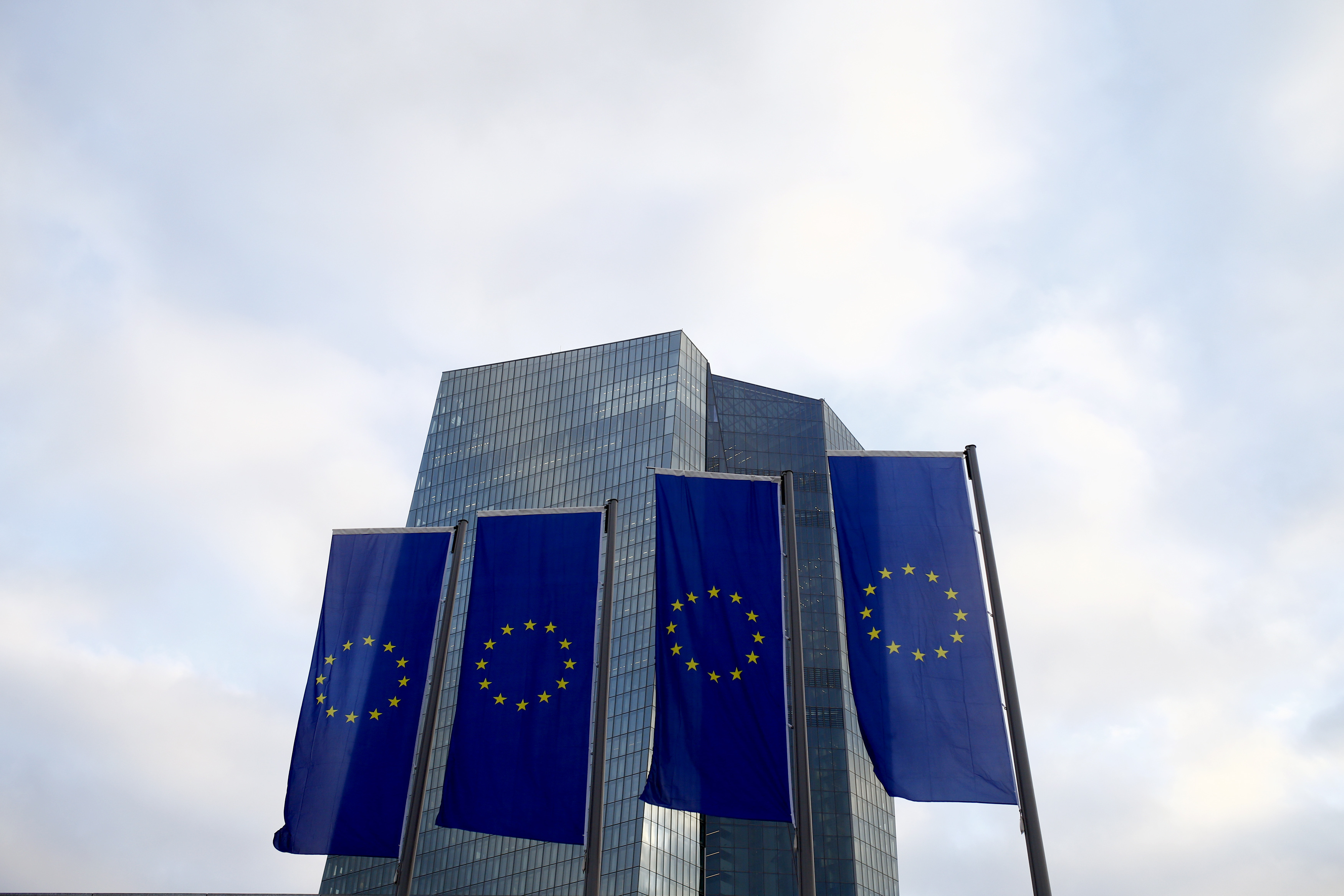
For more insights like these, click here New Tab , opens new tab to try Breakingviews for free.
Editing by Francesco Guerrera and Streisand Neto
Breakingviews Reuters Breakingviews is the world's leading source of agenda-setting financial insight. As the Reuters brand for financial commentary, we dissect the big business and economic stories as they break around the world every day. A global team of about 30 correspondents in New York, London, Hong Kong and other major cities provides expert analysis in real time. Sign up for a free trial of our full service at https://www.breakingviews.com/trial and follow us on Twitter @Breakingviews and at www.breakingviews.com . All opinions expressed are those of the authors.

Breakingviews Chevron
Wall street is contorting to replace china trade.
Western investment banks spent years going all-in on China. Now, slowing growth and lacklustre listings from Asia’s largest economy have them scrambling to find business elsewhere. The alternatives are either too small to make up the difference, or suffer from a short supply of talent.


IMAGES
COMMENTS
Liquid or gel food items larger than 3.4 oz are not allowed in carry-on bags and should be placed in your checked bags if possible. Yes (Less than or equal to 3.4oz/100 ml allowed) Yes. Chocolate (Solid) Solid food items (not liquids or gels) can be transported in either your carry-on or checked bags.
Alcoholic beverages with more than 24% but not more than 70% alcohol are limited in checked bags to 5 liters (1.3 gallons) per passenger and must be in unopened retail packaging. Alcoholic beverages with 24% alcohol or less are not subject to limitations in checked bags. Mini bottles of alcohol in carry-on must be able to comfortably fit into a ...
Liquids Rule. You are allowed to bring a quart-sized bag of liquids, aerosols, gels, creams and pastes in your carry-on bag and through the checkpoint. These are limited to travel-sized containers that are 3.4 ounces (100 milliliters) or less per item. Placing these items in the small bag and separating from your carry-on baggage facilitates ...
The 3-1-1 Rule refers to three core components that govern how many liquids you can bring in your carry-on bags: Each liquid must be in a 3.4-ounce or less container ("3"), all containers must be placed inside one clear quart-sized plastic bag ("1"), and each passenger is only allowed one plastic bag ("1"). In sum, the 3-1-1 Rule states that ...
Buyers of both say that these packs have all the essentials you'll need to enjoy your trip such as tooth paste, a tooth brush, deodorant and a comb. $10 from Amazon $6 from Amazon. A refillable ...
In the United States, TSA stipulates that all liquids, gels, and aerosols must be in 3.4-ounce (100-milliliter) containers or smaller. All liquids must fit into a single, clear quart-size bag, and ...
The TSA's liquid limit for carry-ons—known as the 3-1-1 rule—allows travelers to pack liquids, aerosols, gels, creams, and pastes under 3.4 ounces (100 milliliters) in their carry-on bags. Passengers are allowed up to one quart-sized bag per person, or roughly nine 3.4-ounce containers in a single quart-sized bag.
Learn what you can bring on the plane by reviewing the Transportation Security Administration's (TSA) list of what you can bring on the plane, what you cannot bring on the plane, and TSA's Liquids 3-1-1 rule. Please note that the final decision rests with the TSA officer on whether an item is allowed through the checkpoint.
According to the TSA website, these rules apply for liquids, aerosols, gels, creams, and pastes. All liquids must be in a 3.4oz or smaller container. Your serums, creams, cleansers, and masks are ...
In short, the 3-1-1 rule is: Each liquid you bring through the TSA checkpoint must be in a 3.4-ounce or smaller container ("3"), all containers must be placed inside one clear quart-size plastic bag ("1") and each passenger is only allowed one plastic bag ("1"). Passengers wait in line at New York's John F. Kennedy International Airport (JFK ...
Nonflammable liquids, gels, and aerosols—including food, drinks, and toiletries—in quantities of 3.4 ounces or less . Nearly all liquids (like beverages, contact lens solution, shampoo, makeup products, liquid medicine, nail polish, perfume/cologne, and face toner); gels (like hair gel, toothpaste, hand sanitizer, and face serum); and aerosols (products dispensed in a pressurized spray can ...
On an Alaska Airlines flight, you can bring a carry-on and a personal item for free. Carry-on bags are limited to 22 inches long, 14 inches wide and 9 inches high including wheels and handles. All ...
This TSA-Approved Toiletry Kit ($28.99, regular price $32.99) takes the guesswork out of packing TSA-approved toiletries. Organized into one convenient travel pouch, this 20-piece kit comes with everything you need for hair care, skin care, first aid and more. They even threw in some Tic Tacs for fresh breath.
You can travel with personal care items in your carry-on bag if they are: Travel-size (3.4 ounce containers or smaller) In a clear, plastic, one-quart zip-top bag; You can travel with personal care items in your checked bags if: You have no more than 70 ounces in total; Each container has no more than 16 fluid ounces; Carry-on bags
Prohibited and Restricted Items. CBP has been entrusted with enforcing hundreds of laws for 40 other government agencies, such as the U.S. Fish and Wildlife Service, the U.S. Department of Agriculture and the Centers for Disease Control and Prevention. These agencies require that unsafe items are not allowed to enter the United States.
3-1-1: TSA Rules for Makeup. The 311 liquid rule applies to all liquid and semi-liquid items you pack in your carry-on luggage - including gels and thicker makeup liquids. Put small items in 3.4 ounce containers in a clear quart-sized bag. You can bring one of these bags in your carry-on. The 3 1 1 rule for makeup is the same.
Travel-Size Made Simple Preparing for air travel can be difficult, especially if you have to spend hours digging through the TSA website to understand its rules. Still, travel-sized products don't have to be a mystery. Any liquid under 3.4 ounces is considered travel size, and you can only have nine 3.4-ounce liquid bottles per carry-on bag.
TSA allows passengers to bring electronic cigarettes and similar devices (vaporizers, vape pens, mods, atomizers, and electronic nicotine delivery systems) through airport security as a carry-on. However, these devices are prohibited in CHECKED baggage. The FAA banned e-cigarettes in checked luggage in 2016 after there were reports of small ...
The ExOfficio Give-N-Go 2.0 Sport Mesh 6″ Boxer Brief is the best men's underwear for travel because it balances fit, comfort, odor-proofing, and value better than anything else we've tested ...
BAGSMART Clear Toiletry Bag, 2 Pack. $10 at Amazon. TSA's 3-1-1 rule requires travelers only bring liquids, gels, creams, aerosols and pasts must be in a 3.4-oz. container or smaller, and that ...
Travel Service Limitation of Liability. Hotwire is acting solely as an intermediary facilitating the booking of travel products and services provided by airlines, hotels or other travel service providers (collectively, "Travel Suppliers") in providing travel services, or in accepting reservations or bookings for such services to be provided to you.
Star Alliance connecting partners. All members can earn and redeem MileagePlus miles on eligible connecting partner flights. Premier ® Gold, Platinum and 1K ® customers traveling on a Star Alliance itinerary that includes a flight on a connecting partner will be offered a tailored set of privileges detailed on the specific connecting partner ...
4. Judging Criteria. The judging criteria are as follows: [ (1) Positive emotion - 25%; (2) Quality photo or video - 25%; (3) Humorous picture or video - 25%; (4) Uniqueness of pet picture or video - 25%. All ties will be broken by an alternative judge chosen by Nationwide and reserved for this specific purpose.
June 4, 2024. A new tourist fee in Bali. Higher hotel taxes in Amsterdam and Paris. Stricter rules on public drinking in Milan and Majorca. Ahead of the summer travel season, leaders in many ...
Ohio cannot enforce a law barring chiropractors and some other healthcare practitioners from soliciting business from victims of car crashes and other crimes within 30 days of their injury, a ...
Breast Milk. Carry On Bags: Yes (Special Instructions) Checked Bags: Yes. Formula, breast milk, toddler drinks, and baby/toddler food (to include puree pouches) in quantities greater than 3.4 ounces or 100 milliliters are allowed in carry-on baggage and do not need to fit within a quart-sized bag. Formula, breast milk, toddler drinks, and baby ...
JERUSALEM, June 3 (Reuters) - Israel's foreign ministry on Sunday recommended that Israeli citizens not travel to the Maldives after its government banned the entry of visitors with Israeli passports.
Portugal announced on Monday a new plan that will toughen some immigration rules, following in the footsteps of other EU countries and days before Europeans head to the polls in an election set to ...
Europe's new budget rules can work only if Brussels can stretch them. Eleven countries including France, Italy and Belgium, posted 2023 deficits above 3% of GDP, the official high water mark for ...